-
Posts
586 -
Joined
-
Last visited
Content Type
Profiles
Forums
Gallery
Events
Posts posted by niwotwill
-
-
With the breech lines completed and the carriages glued to the deck it is now time to start the tackle. I used the 3d printed hooks from Syren Model Ship Company for the block hooks. The sheet of hooks had 3 sizes and I used the smallest which gave the visual proporations of hook to block. The 3d sheet gave the smallest hooks a visual thickness to the hook.
A simple jig was made from a piece of wood that had been used for many purposes. The holes last used to paint the cannons with the jig and tackle visible the groove along the top was used to shape planks on plank on frame kits. The slot was quite unique to hold the plank while being planned to shape. This slot was make the thickness of the present blank.
With the tackle made now it was time to rig the cannons. Again when a step seemed easy it proved not to be easy. Getting into the bulwark rings was very difficult requiring many sized and shape tweezers. The 3d hooks were fairly fragile and required the remake of several hook/blocks.
Now with chapter 10 complete
- AJohnson, JpR62, bdgiantman2 and 3 others
-
 6
6
-
After much thought over the last few days I decided to leave the wheels in their natural color. I finally glued the carriages in positioGn on the deck and attached the breech lines to the bulwark. Getting the breech lines to hang/droop in a relaxed position is going to be a work in progress but they are starting.
The next thing is to strop the blocks for the gun tackles.
- JpR62, glbarlow, Ryland Craze and 4 others
-
 7
7
-
Had a slow period over the holidays and not much to show. I made the elm pumps and all the carriages along with the breech lines.
carriages assembled ready for paint
carriages and gun barrels painted
elm pumps completed and I use 1/16" brass tubing for the discharge tubes leaving an exit hole although nobody will see the hole but I know its there.
got the breech lines attached to the carriages and just placed the armanent for my pleasure
I still have to make the attachment caps to sit atop the carriages. Also need to decide if the wheels should be painted and I might try staining a scrap piece of AYC a medium dark to dim the wheel brirness. Tomorrow I'll start the harnesses and glue the guns in place.
-
-
I completed with the cannon painting and weathering with only a minor mishap. I don't remember if I stated that I'm using Syren Models brass cannons and carriage kits. The first step was to clean the brass cannons by soaking them in lacquer thinner. Next washing them in warm soapy water followed by a thorough rinse and a drip dry. I sprayed them with a coat of Mr Eds surface 500 for a primer followed by Tamiya Nato black. I hadn't glued the pins as I think the paint will hold sufficiently until resting in the carriage. Using a weather powder of rusty brown and dusting until I liked the surface. When complete a light coat of Tamiya flat clear was added to protect the weathering.
And the final result is
The carriages were a small model in their own and below are the parts of each. I want to thank Chuck and Syren Models for the spare parts of each kit.
With the axles requiring shaping for the wheels I figured this would be my starting point. There is laser mark detailing how far the axel needed to be rounded. I used my lathe with the axle chucked and a flat swiss file was used for rounding by lightly using the file. Removing the laser char from the wheels was accomplished during the rounding of the axle. Sliding the wheel onto the axle while an interference fit existed. Spinning the wheel and using the flat file made the job very easy.
before removing the char
after removing the char
Assembling the carriages required making a jig similar to the one shown in the monograph. The assembly required a mental process. With long axle rear and large wheels on short axle so easy to mess up. I made one carriage as a prototype making sure I hadn't done something wrong.
Assembly glued and ready for paint. I decided to leave the wheels natural so the axle end needed to be masked is sprayed so I had painted the prototype. Painting proved to be easy enough. The ends of the cedar pieces are an open pour so paint soaked in leaving uneven dark colors. Many coats of paint were required.
Basic carriage assembly
First almost complete.
I like the wheels and quoin left natural but the axles have darker ends that I'll live with.
- Tossedman, Ryland Craze, JpR62 and 5 others
-
 8
8
-
Well it's been several months since my last post and I'll bring the log up to date. Lost some energy to work on Cheerful due to my daughter's wedding but not back and working in full steam. I started with chapter 10 by maaking 100 eyebolts for the bulwark and gun carriages. My method is fairly simple by twisting a length of 26 AWG wire around a twist drill of a size to create the inside diameter. Then the loop is soldered to the stem with the excess loop cut and filed smooth. The stem was bent perpendicular to the eye creating a post.
These are the eyebolts prior to trimming and etching prior to blackening.
Next was to make the loops for the large gun harness. Using a larger diameter twist drill and 24 AWG wire creating the larger hole with heavier ring. Take the open ring and inserting into the smaller eyebolt the ring was soldered to close. I used a hard silver for the eyebolt and a soft silver for the ring thereby not breaking the eyebolt solder joint.
Again before etching and blackening.
This was a mind bending process that took 3 days of tedious work and I am very glad its over.
The ladders were next on the list of things todo. Getting back to wood work was like a holiday and the ladders were fairly simple to make. With the ladders painted I glued the in place on the bulwarks.
Pinrails were the next thing on the list. I thought the bow pinrail would be the hardest but the side rails were more difficult due to the slight radius of the bulkhead and the rail having a parallel side.
The catheads were the last of the inboard detail prior to cannon carriages. I used the same procedure as the monograph described in making the catheads with two prices. The first step was to notch the cap rail which was very nerve wracking to say the least but after much carful cutting and sanding to notch was completed with no mishaps. The inboard piece was the most difficult trying to get it to sit flush with inboard bulkhead planks. Got this done with several pieces and much cutting and sanding when the fit was correct the length was made flush with the bulkhead top. The top piece was very straight forward using the method of drilling four holes and notching between them simulating pulleys. Taking the pieces laying them flat on a glass tile while glueing together maintain the flat joint. Once the glue set the catheads were sanded in preparation for painting. The vertical piece was painted red prior to installing and the black was applied after the installation.
Fitted prior to paint
Finished catheads
Now onto cannons and rigging.
- Gregory, CiscoH, baribeaujm and 11 others
-
 14
14
-
Back to working full time on Cheerful. Finished the windless which was started some time ago. I'm not sure if I mentioned that the small assemblies are Syren Model mini-kits. Finished the bowsprit step and finally got everything painted.
Windless and bowsprit step in place not glued until the bowsprit is made then the parts will be pinned and glued to deck.
and finally finished painting the seats and cleat
- Ryland Craze, Tossedman, Freebird and 5 others
-
 8
8
-
Just back from a wonderful vacation. Started in Quebec City for a marvelous 3 days of touring the 17th century city. Walking in Quebec City is a lot of hard work as it is very hilly as everything is uphill from the St Lawrence. We watched the 32nd stage of a professional bicycle race just as I think the Tour do France would be. Hundreds of racers team sag cars etc. The did 16 laps up and down the steep narrow streets, just amazing. We boarded a cruise to Nova Scotia and then down the coast to Boston where we rented a car for 5 days in Maine. Staying in Boothbay Harbor as our home base to explore. If you get the chance go to the Maine Maritime Museum we spent almost two days so much to see. Bath ME is the home of the museum on the grounds where many ships were built. In 1909 the largest sailing ship built in the US was launched and the ship was lost March 1924. Wyoming was a 6 mast schooner and was 450 from tip of bowsprit to tail of after boom. To understand the size of the Wyoming a steel sculpture was made to it exact size.
Spent time trying to remember what I was working on prior to vacation. Then spent too much time to find the cleats from Syren Model Ship and yahoo I found them in the Cheerful tub of wood and parts. Sanded the largest cleats to shape and drilled a hole for a brass wire.
Drilled a hole in the stern frames and placed the cleats with superglue.
looking at the photo I see more shaping needs to be done
- Freebird, JpR62, Paul Le Wol and 5 others
-
 8
8
-
-
Transom knees simple parts to be put into place, RIGHT.
First thing is studying the plans and others building logs. Finally found a post that had actually shown the process of modifying the the transom frames to allow the knees proper seating. Again using the plans I made a card template to mark the knees unto the wood. Cutting the knees from the wood with the scroll saw making sure I left sufficient wood beyond the pattern for shaping. Using the knee I started the nerve wracking process of cutting the frames. Using a new blade thin slices were cut until the knee slid under the cap rail. When both frames were cut I carefully started slicing the frames allowing the knee to fit under the cap rail on the side.
As you can see no matter how carful you are the cutting process left a mess. Next taking the knee and started shaping to the final fitting shape. Sand test, sand test, sand test until the knee fit under the cap rail and flush to transom and bulkhead.
Starting knee from saw.
Knee fitted ln postion ready for finish sanding and gluing into place.
This whole process would have been much easier before the boom crutches and timberheads were attached. I kept fearing the I'd knock one off damaging the mounted surface with the securing pin.
- AJohnson, archjofo, Nunnehi (Don) and 3 others
-
 6
6
-
Chapter 10 starts with the seats on each side of the tiller and the monograph suggests using the drawings (which are in 1:48). I made copies of the top view and the side view on the drawings making copies without cutting up the original drawing as only one copy was furnished. First was to plane a sheet of boxwood down to the 1/32" thickness for the seats. Once ready I made templates of the inner side and top using the drawings as they are at 1:48 scale. Preserved the drawing by folding to fit on the copy platform. Using elmers school glue stick I glued the prints to a card from my wife's menu file supply. After cutting the card to make the patterns I glue sticked them to the wood.
The copy with the pattern removed
While the template was a very close fit there was still a lot of filing to get the radius fitting the transom.
After glueing the sides using the same method the tops were sanded and filed to fit without any gaps
The harder part was the front as there was no way to make the pattern so a piece of wood cut to basic shape was used. Starting with the inside piece being a straight surface the bottom was fit to the deck radius The inside of the bulwarks not being flat were the most difficult. Many attempts made, five to be exact, before a part was close enough to be used for final template and sanding.
Last thing was the hole in the seat and glue it all together.
One side done with templates for the port side to start with fitting. Tomorrows another day and woodwork is so much fun after the strops and chain plates.
-
CHAPTER 9 IS COMPLETED!!!!
Back stays and chainplates blackened and installed.
These 8 parts have been one of the most challenging things of the Cheerful. The blalck smudges are easily wiped off the planking since the wop has made the finish sealed and very smooth. The process of making the deadeye strops the same length and shape was a days work. The chainplates brought their own problems of length, shape, and loop. Getting the lengths correct so the deadeyes all align with the top rail was completed with many parts in the bin. Finding a needle nose small enough to make the loop another process until finding the pliers from a jewelry set allowed loops small enough to appear correct in scale while fitting the strops. I found that if I annealed the chainplates this allowed the bending of the loops without distorting the chainplate. Four days of mind bending work later it is completed.
Chapter Ten is mostly woodwork so this will be better on my soul and mind.
- GrandpaPhil, AJohnson, Seventynet and 5 others
-
 8
8
-
Now with the deadeye strops ready for finishing I started on the chainplates. Using the same methods as the backstays I made the 8 chainplates. I just realized that it has been a month since my last post as I was in Arizona visiting my daughter along with a little holiday travel so the last two days have been filing the chainplates and now the backstays and chainplates are ready for blackening. Just a photo of one aligned with the print.
Next is to blacken the parts and then make a simulated mast so the chainplate angles are determined with string.
- AJohnson, Ryland Craze, JpR62 and 1 other
-
 4
4
-
Well the block buster arrived the other day so now on the building 6mm deadeyes. I've used Syren block kits before so the deadeyes were no problem just more of the same. When I used my old block buster on kit blocks without removing the char from the edges the sawdust was black and stained the blocks. With that in mind the edges were sanded removing the char before the block buster. When complete of the 28 deadeyes made I had 5 come apart. When completely sanded I applied WOP giving the deadeyes a nice golden tint.
Deadeyes
Now it was time to make the strops. Reading other logs a user said a 22mm length of wire was used to create the strops. I found the diameter of a 22mm circumference and started the with the appropriate drill bit. Taking a length of wire wrapped around the drill bit to form a strop. Silver solder was used to complete the circle and then placed the deadeye and wire in a vice that allowed the wire to be squeezed into a strop. I found it necessary to have a .5mm overlap on the wire giving it strength to hold during the squeezing. The joint was squeezed into almost not seen and when placed on the deadeye at the top it will be hidden bye the ropes. I like the strop on the bottom and right side in another and I may give a slight squeeze to bring more into shape as the drawing.
Tomorrow will be making all the strops and blackening them.
- Ryland Craze, Freebird, AJohnson and 1 other
-
 4
4
-
With the backstays complete except blacking it was time for chain plates and dead eye strops. After the backstays the chain plates seem fairly straight forward but the dead eye strops appear to be another story. So on to looking at what others had done and it seems that everyone has their method. I found one method that appears that it'll work and keep me within my abilities. I'm using Syren Shipmodels 6mm deadeye. So I have to make the deadeyes before I can make determine my strop length. Once again I know I had a block buster but can't find it in my boxes, so ordered a new one. Making the deadeyes from the Syren kit it very straight forward. While waiting for the block buster I made belaying pins. Rather than Boxwood I decided to use Swiss Pear to add some color character.
I had a sheet of .05 Pear so I ripped .05 strips, or as close as I could get, for the pins. A note on my table saw I had micrometers on the saw from Byrnes Model Machines, but since Jim died I not sure if you can still buy parts. So with the micrometer I was able to make strips .05X.O49. Also while writing this I went the Byrns website and the micrometers are still available in metic and english.
Enough talking let's make belaying pins. A short stick was chucked into my Proxxon hand machine and guessed the shape of the belaying pin making multiple until I found one the looked good to me. Using that one pin as a pattern I marked each feature on a new stick.
Pattern pin alongside the next strip
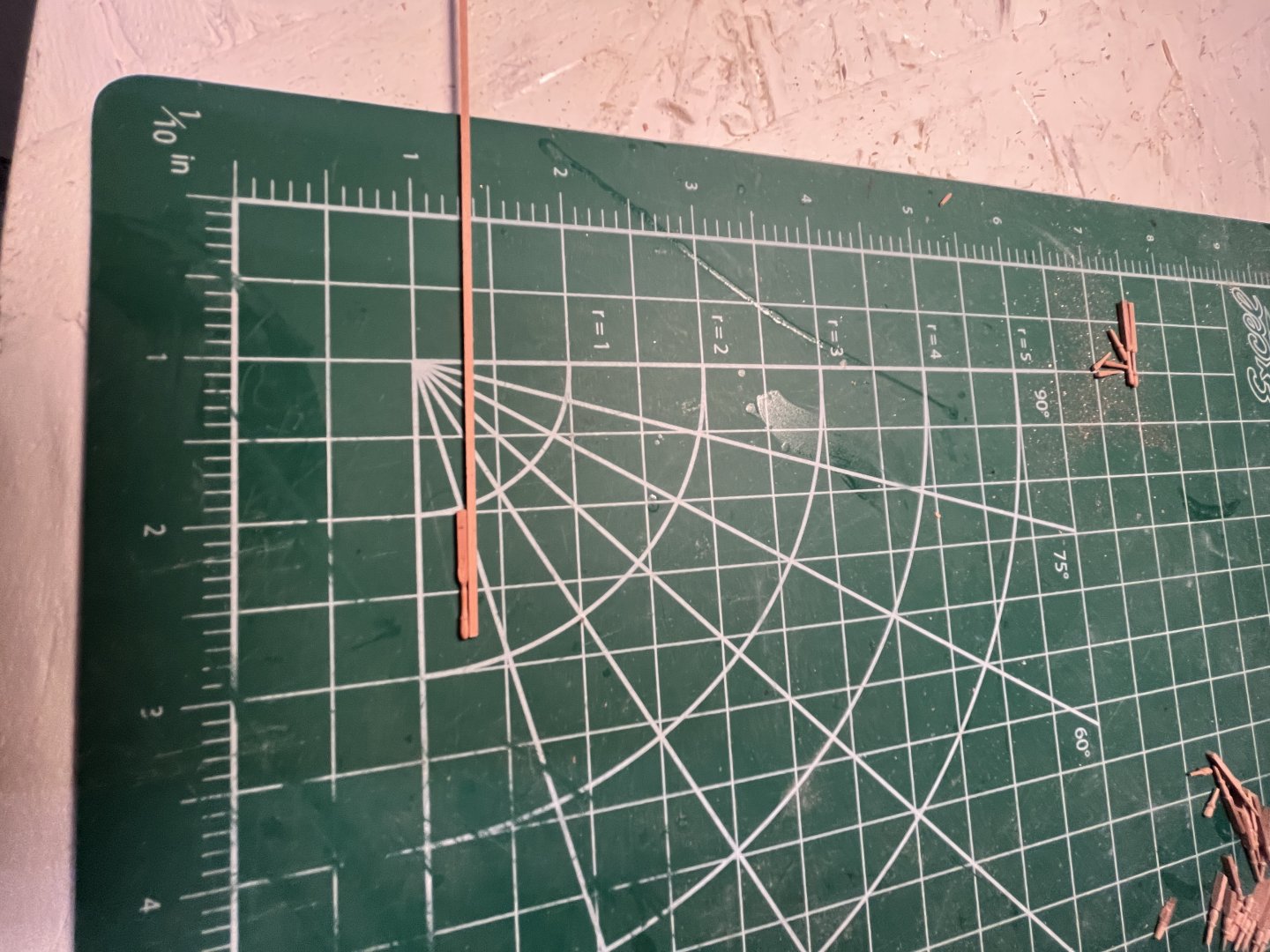
Strip ready for shaping
I used a flat file from my swiss file set to shape the pins. I made 20 pins before I realized I had made the pins so the top would not be curved when the holder was cut from the pin. So another 20 pins made so the small end was held and the top was curved.
Top row second pass bottom first pass
Carfuly sanding the tops and now ready for some WOP
After WOP
Now wait for the mail to get the block buster and on to the chain plates
- Ryland Craze, CiscoH, JpR62 and 1 other
-
 4
4
-
Per Glenns suggestion I went back and looked at his and others Cheerful and decided to follow their lead. Using a small set of Veritas chisels I slowly removed the protruding hatch until nearly flush. Next with 220grit the grate was brought flush with the deck. Several coats of wipe on poly were applied and tomorrow I will wipe the deck with WOP. I'm really glad that I did this and like the way it turned out.
- Ryland Craze, JpR62, AJohnson and 1 other
-
 4
4
-
Thank you Glenn. Your work has always been my inspiration. Now I'll look at your Cheerful for the bread room hatch.
-
Started backstays with a sheet of .016 copper from K&S Metals. The monograph calls for the backstays and chain plates to be 3/64" thick and 3/32" wide strips. The first step was to rip the strips from the K&S .016" sheet using a 296 tooth slitting 3" blade on the table saw.
After putting blue painters tape on the backside I ripped several .1 strips. Next a .04 hole was drilled in the strip and the end radius'd. The strip was brought into shape per the monograph.
With the 6 backstays shaped they were annealed using a propane torch before bending the end loop. A needle nose pliers was used forming the loop.
With parts completed the loops were silver soldered closed to ensure from opening when rigging pulled taught. Image is of the backstays after pickling and before ultrasonic cleaning.
Parts will be painted and coated with aging dust after the chain plates are completed
- Freebird, catopower, Seventynet and 5 others
-
 8
8
-
Been awhile since the last post so here's what's been happening. I didn't mention that while in Arizona I thought that I could do two models concurrently and started Cheerful while in the middle of the Syren brig kit, BAD IDEA. I had gotten Syrens standing rigging complete and then the move. So I've been working on the Syren and neglecting Cheerful. The work I've done was the make the boarding steps, channels and rigging eyes which I completed today.
Port picture which I now realized that I had not painted the step on the black wales.
Starboard side step painted
Next on to chain plates etc. and I'll dry dock Syren.
- Ryland Craze, AJohnson, Chuck and 3 others
-
 6
6
-
Not much to report on. Spent time making some black .019 line for the foot ropes had to make sure to have enough for the 4 yards foot ropes. To male the stirrup loops I used a .028 drill bit and used a tight half hitch to simulate the loop. On other places I've found that a tightly pulled hitch gave a close approximation of a seized loop. With the stirrups hanging with an alligator clip creating a straight drop a small amount of very fine CA was used stiffening. Threading the foot rope through the stirrup loops creating the foot rope. Again CA was used to create the hanging appearance. Two vises used holding the yard while being worked making a easy process.
main course yard
-
- AJohnson, JesseLee, Ryland Craze and 1 other
-
 4
4
-
Completed both yards and with the final sanding and sealing the gaps became less evident. Before tapering the holes in the ends needed drilling. Finding the center of a circle to drill holes brings its share of problems. So after studying the of how to center a hole of a rod I decided to use the lathe. To find the center the rod was chucked in the lathe and with a drill chuck in the sliding support the drill chuck was attached to the dowel aligning the ends. Taking the dowel out of the lathe and without moving the drill chuck a bit was placed and the dowel slide to alignment with the drill bit. Using the thumb wheel the drill bit was brought into play to the correct depth.
Pictures of the process
Aligning the drill chuck to the dowel
Bringing the bit into play
With the drill chuck replaced with a freewheeling center the yard was brought to length centered using the previously drilled hole it was possible to begin the tapering using 150 grit paper and a #2 flat file.
With the tapering completed it was time to make the sling cheats. These are a simple part to be glued to center of the yards and having to make 7 of these the same presented another challenge. I made a boxwood strip the correct hight and width and using the table saw was able to cut the groove to the correct width and depth the length of the strip. Using a modelers plane the strip brought the correct angle shape with the angle completed 280 grit sandpaper rounded the edges. With strip completed a mini mitre box saw was used cutting 1/16" wide pieces and with a little light sanding the the parts are ready to be glued in place.
Saw set to correct depth and fence spacing
The ripped groove end view
Plane to create the backside angle
The sling cheats for the main and fore coarse yards ready for sanding
-
Spent the last two days making sawdust. First I had a 1/32" thick of Alaskan Yellow Cedar in my wood pile and decided that's what'll I'll use since it was the correct thickness. Second I ripped some 1/16" wide strips. The center of the yard was marked with red pencil (didn't matter as the yard will be painted black) to indicate the 1/4 of the yard to be octagonal. Cutting the strips to the marked length the edges were beveled and the ends slightly rounded and glued around the circumference to create the octagonal section as per the reference manual. With the strips around the yard the 1/32" added to the circumference was way too large making the yard center bulbous. Next I said to myself I'll fix this and run new strips through my Byrnes sander to making 1/64" strips. After placing around the yard it was way too small. Remember I said "making dust" so I ripped more strips a little wider than 1/16" since the first two passes left a little gap. The new strips were .07 wide and after the planning the finished size is .07 X .021 give or take .001.
After cutting to length the edges were beveled to ensure a close fit. I have yet to drill the holes in the ends before tapering to correct thickness.
Picture of 1/32" sheet
Typical strip and sheet
Yard and strip for reference
Finished octagon after light sanding
I'm hoping the gaps will be less evident when painted black. Next final sanding, drilling, and tapering.
-


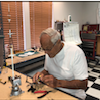
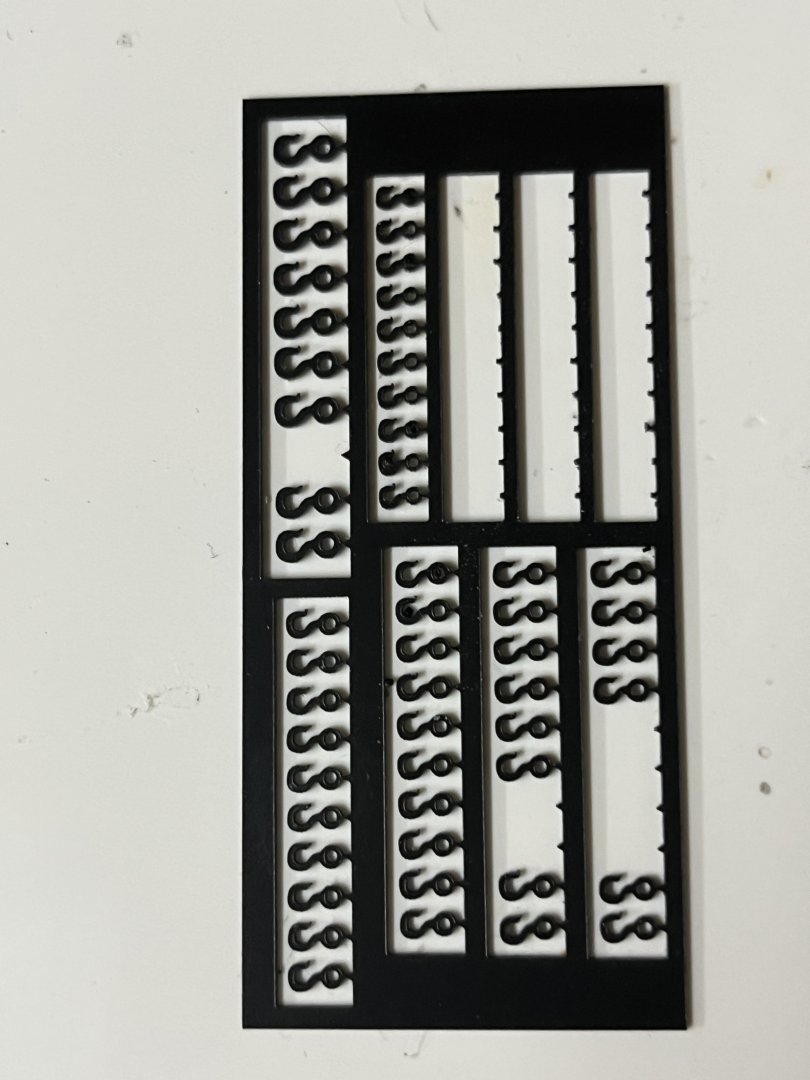
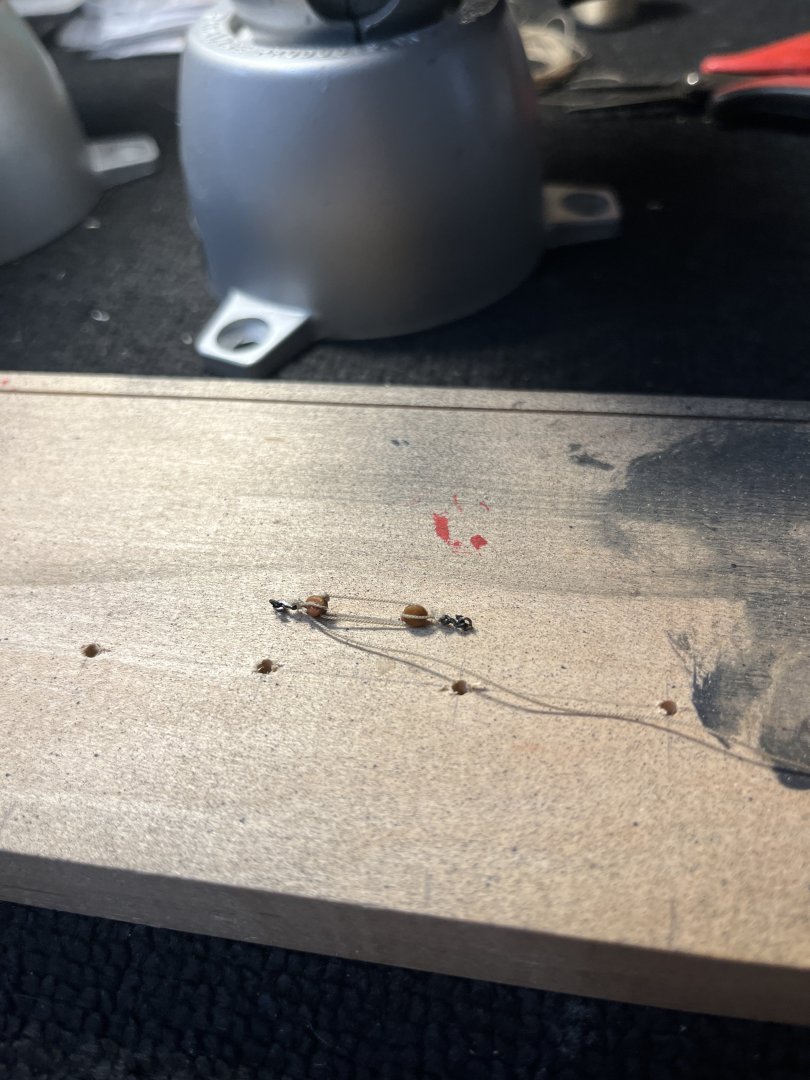
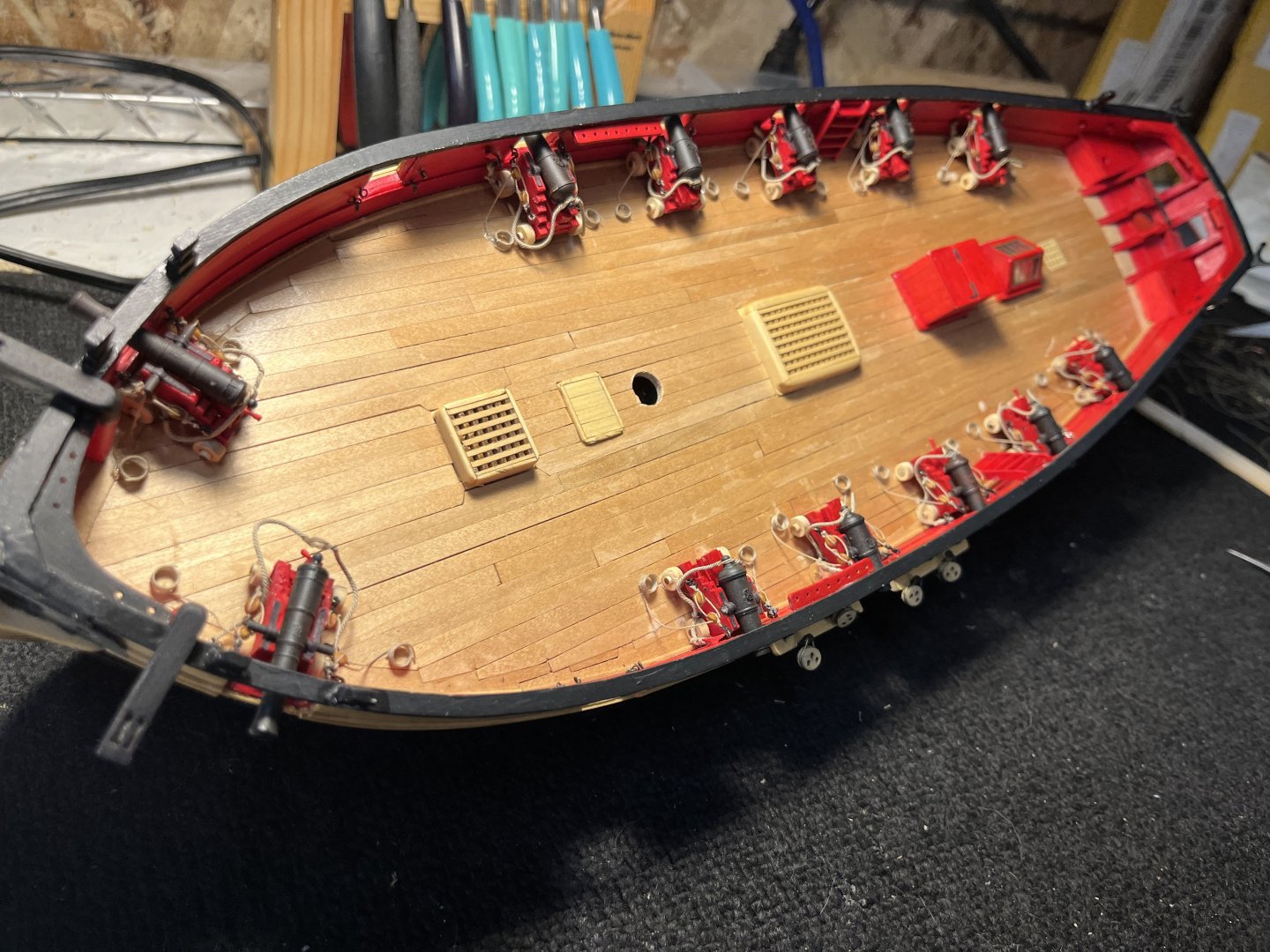
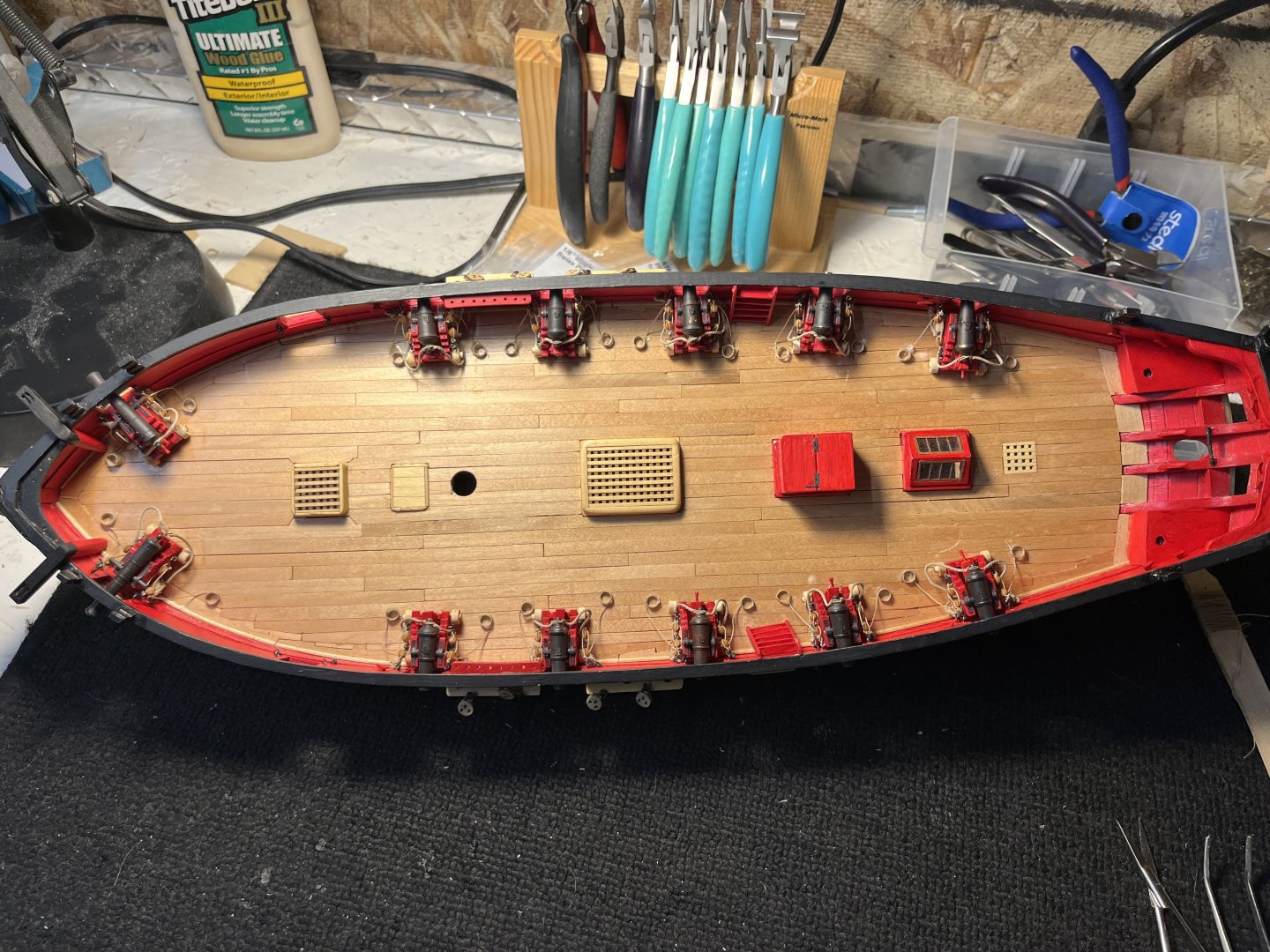

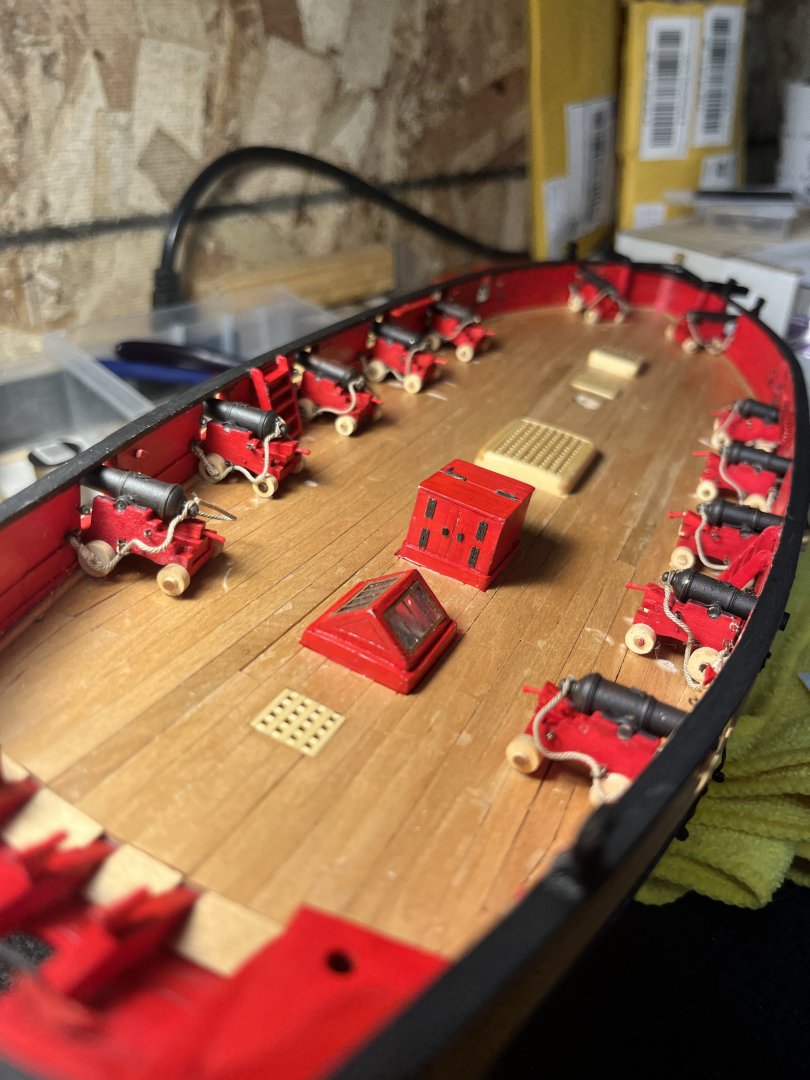
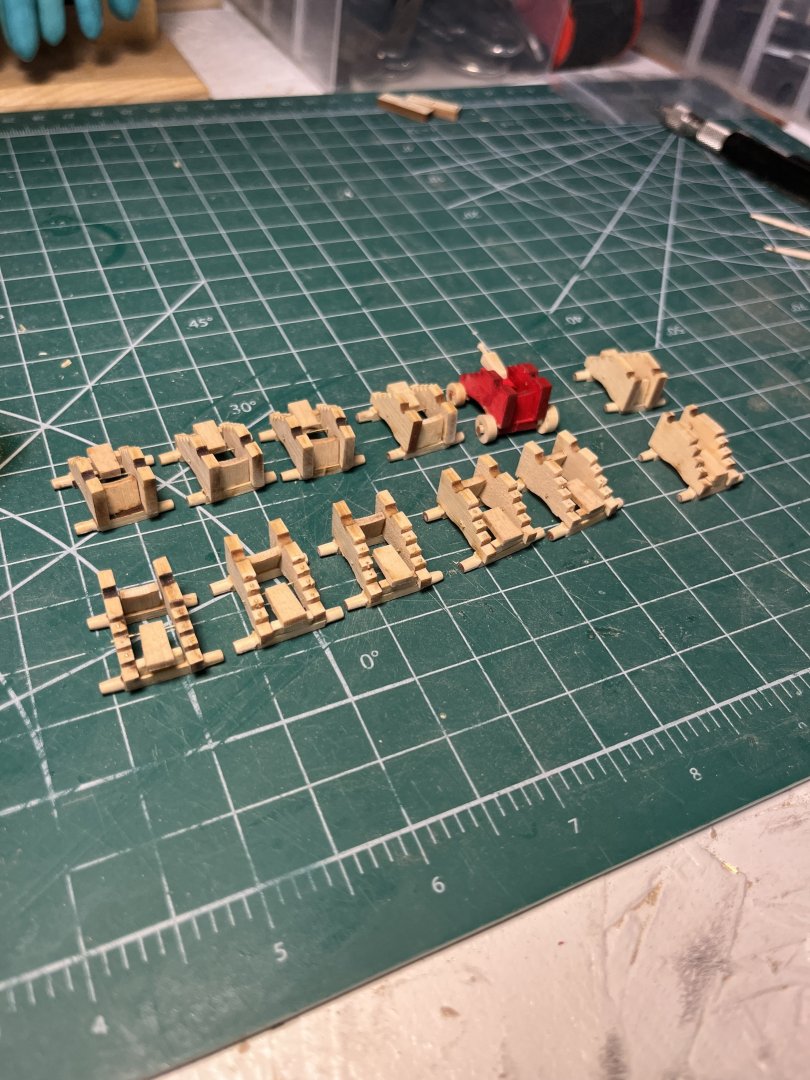
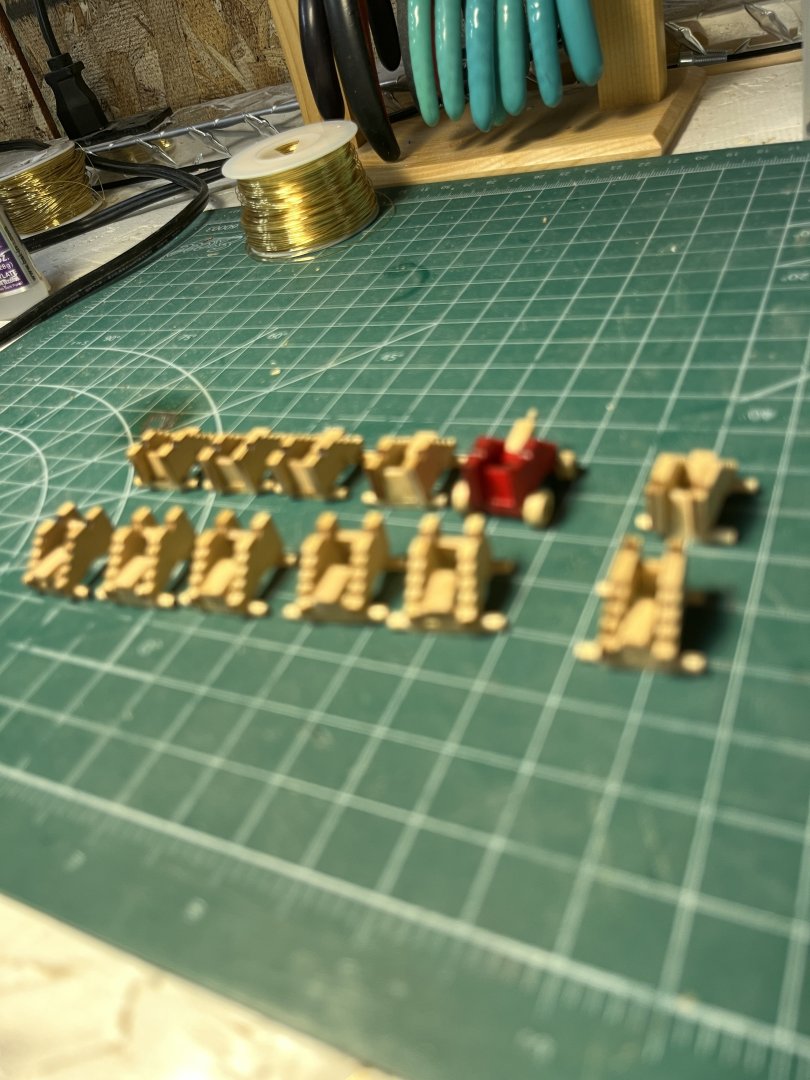
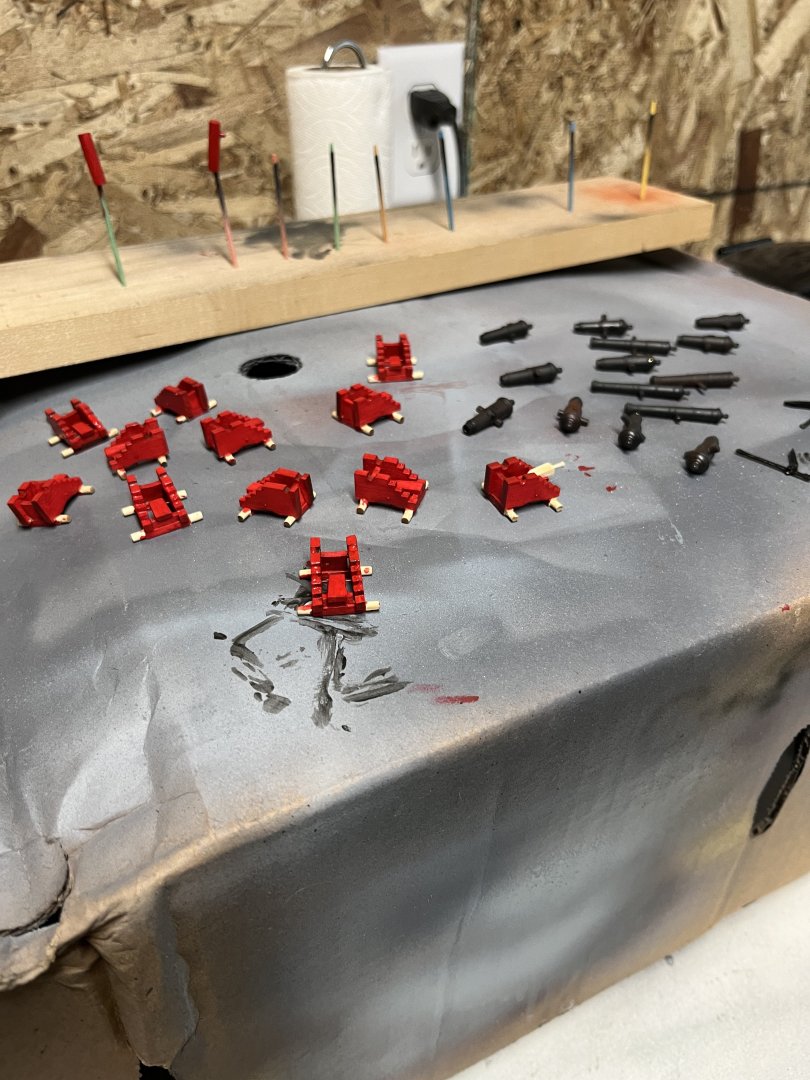
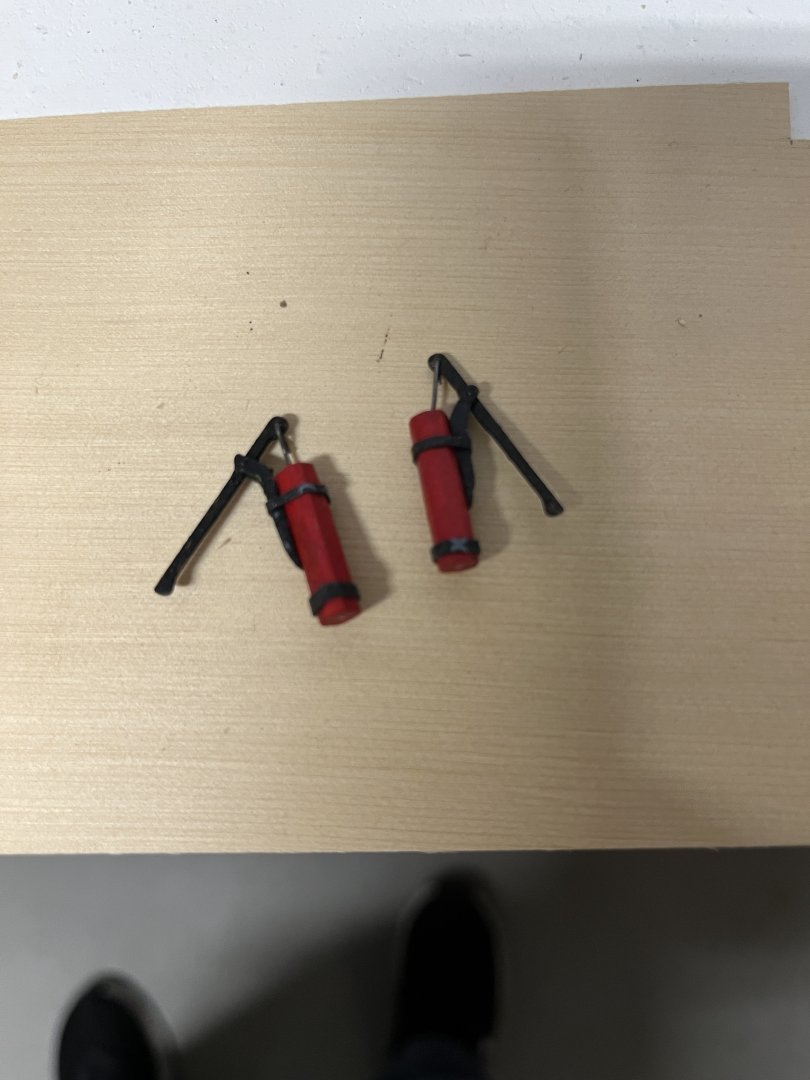


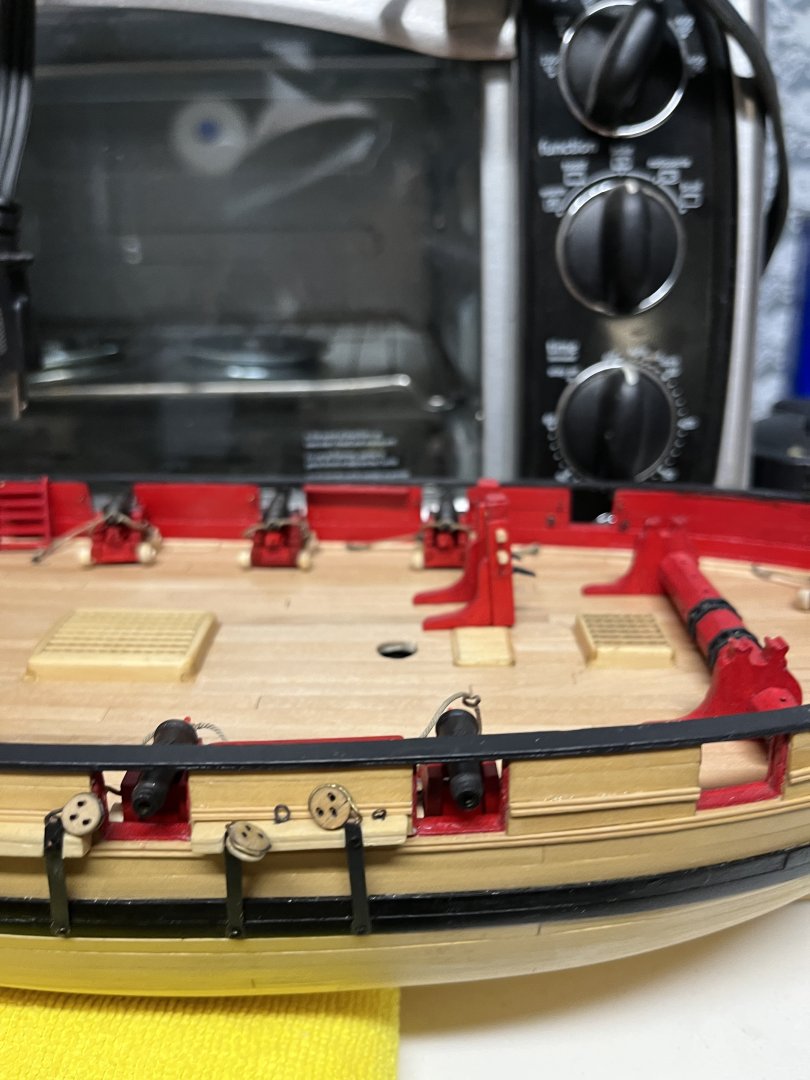
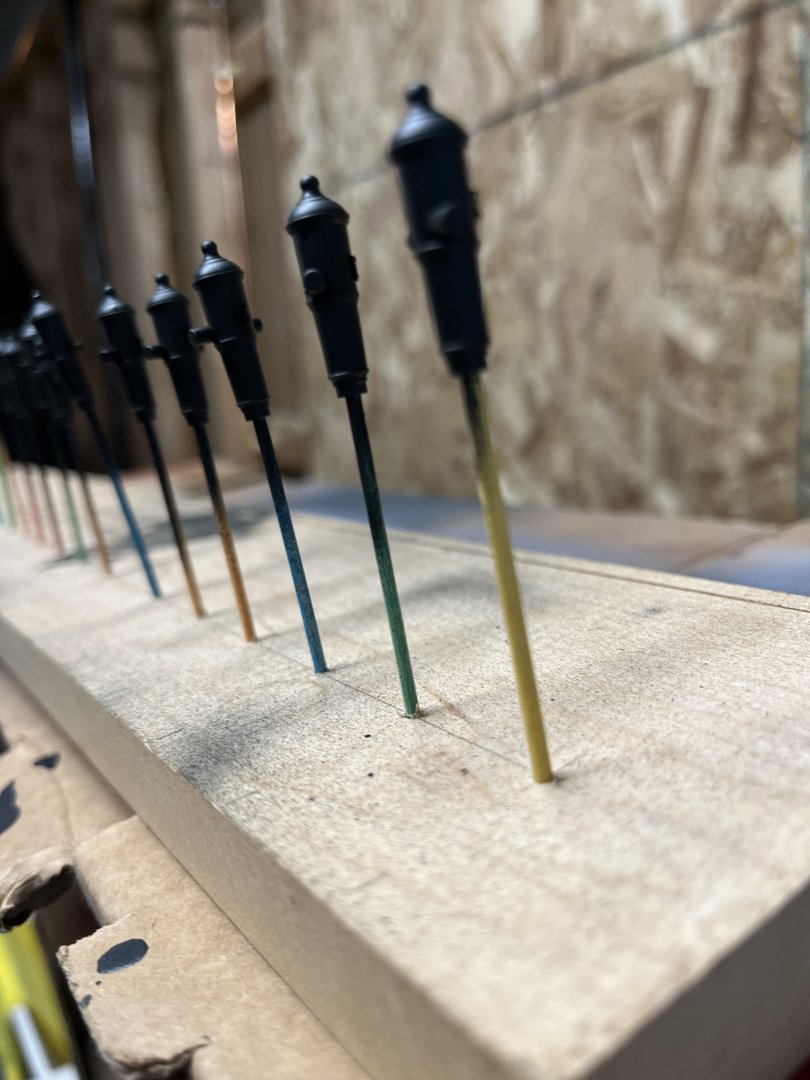
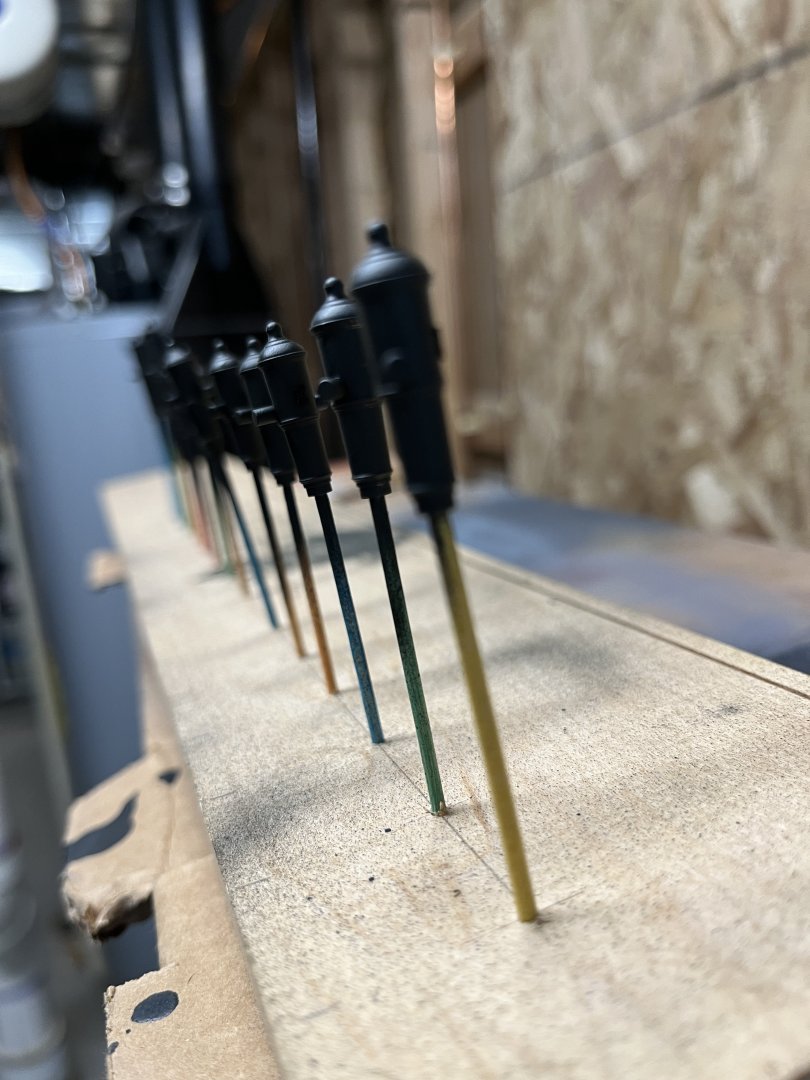
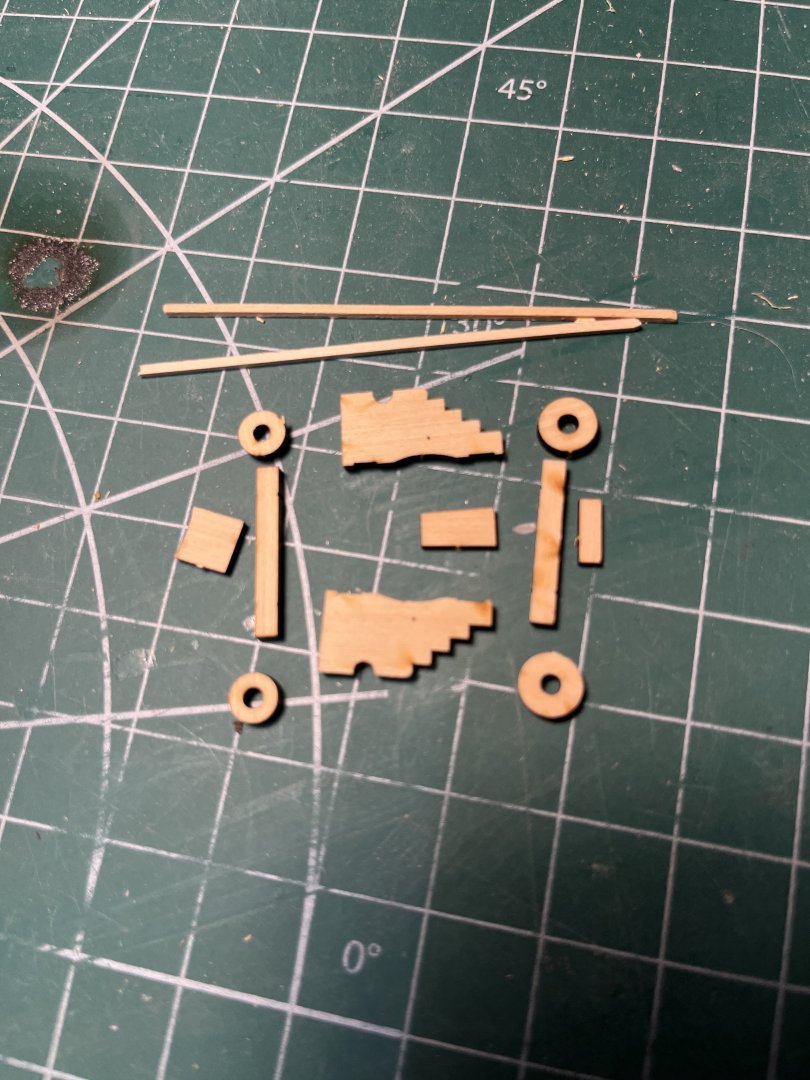
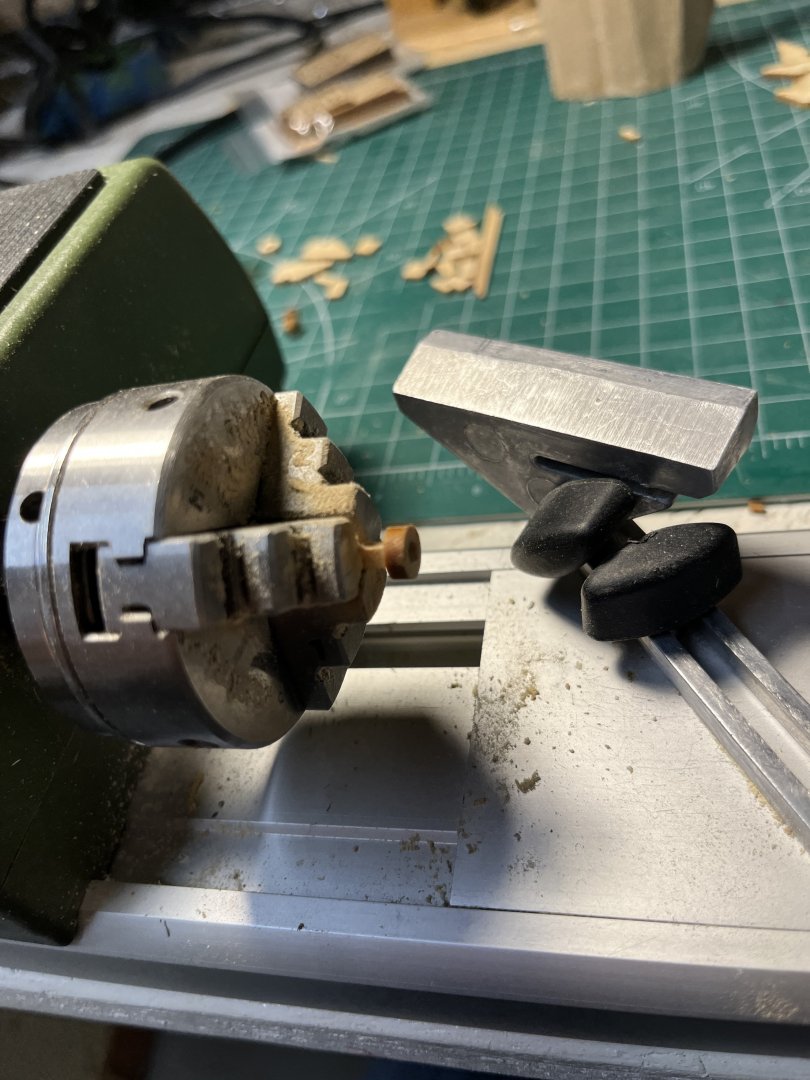
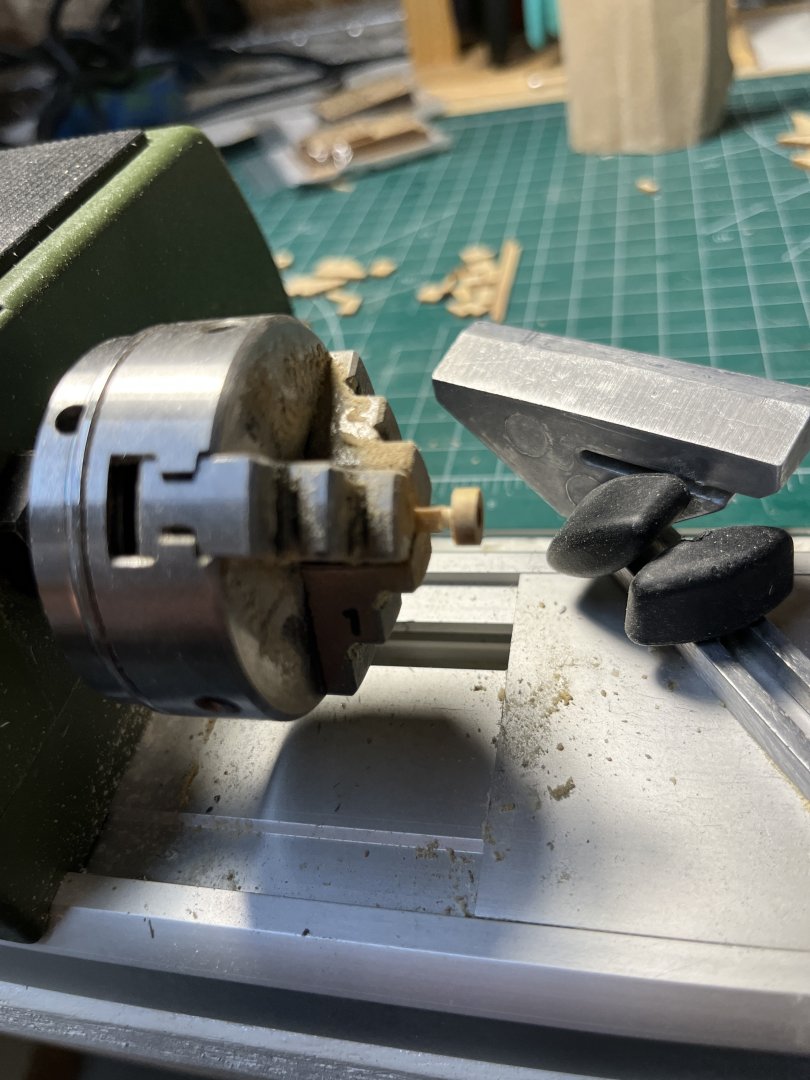
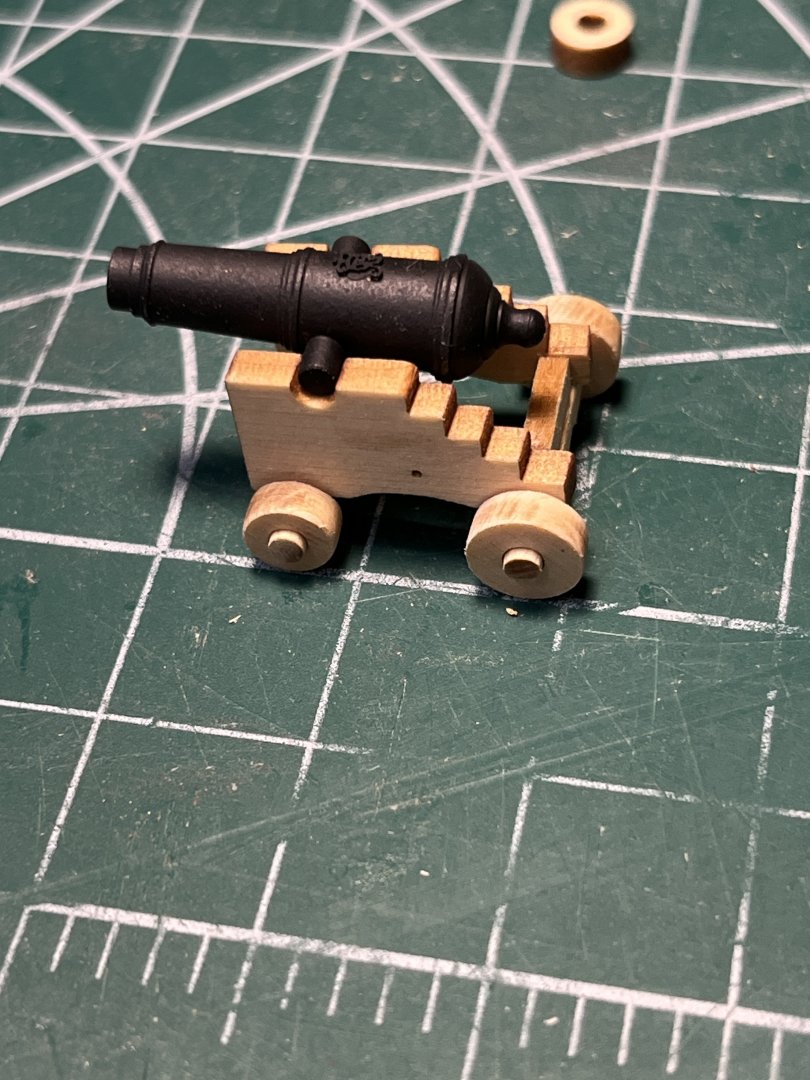
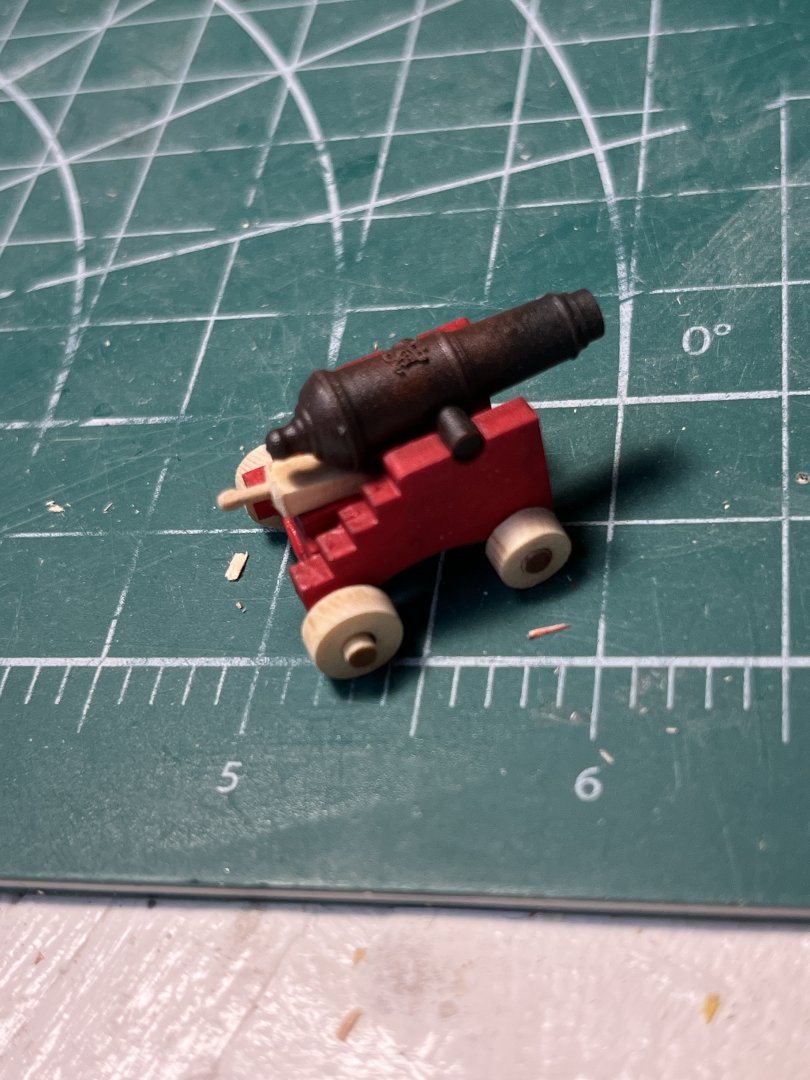
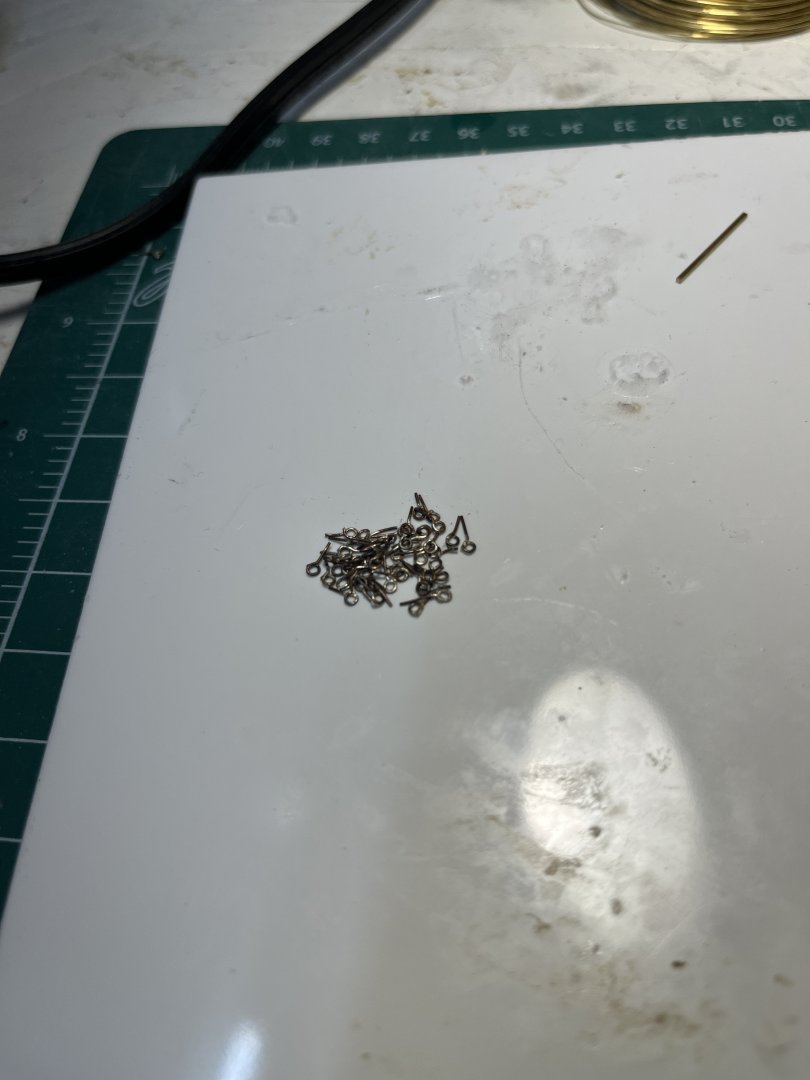
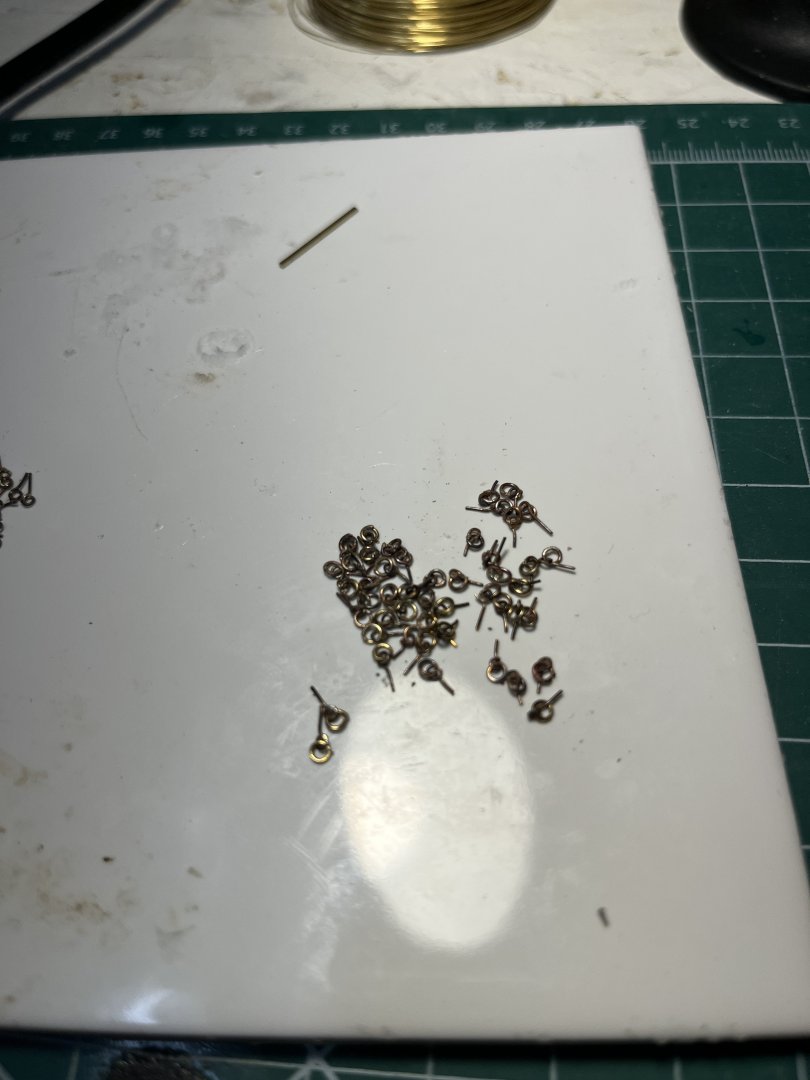
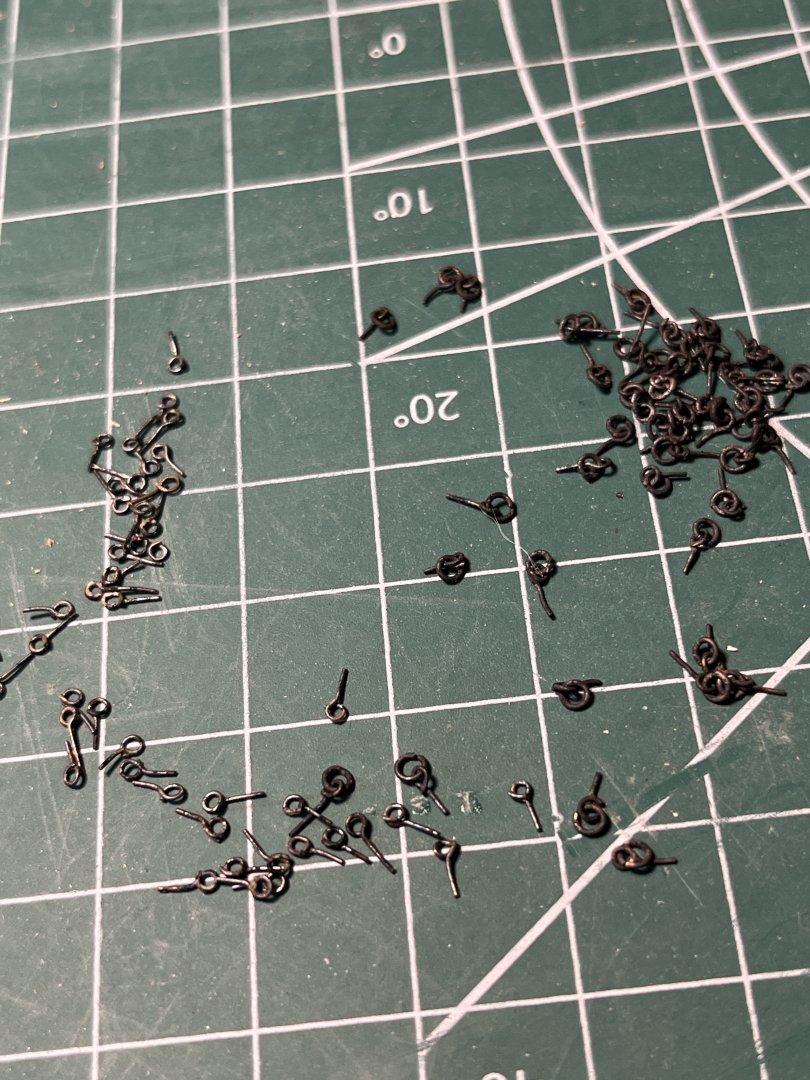
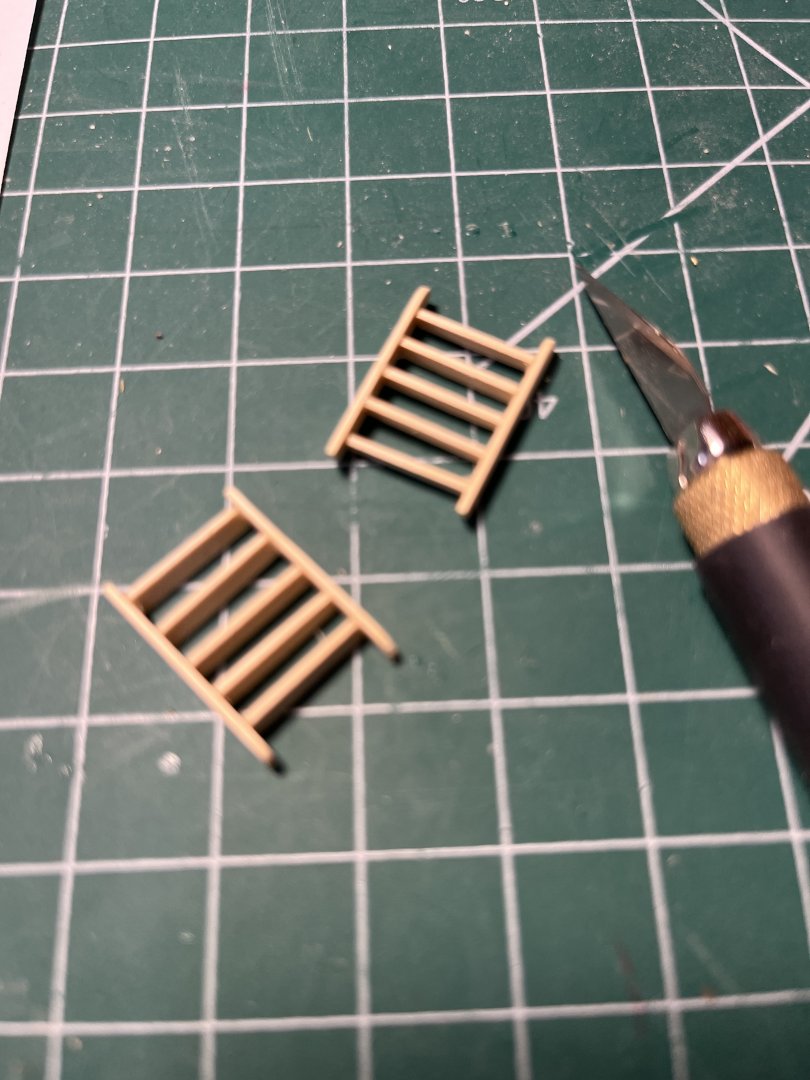
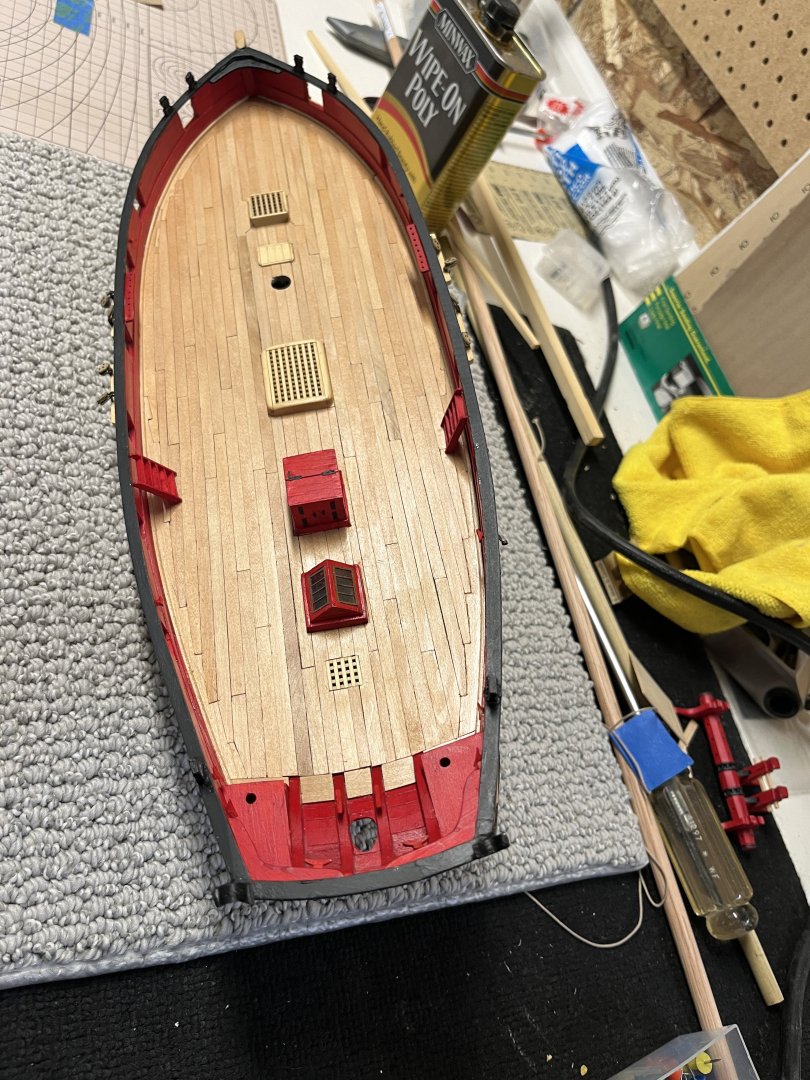
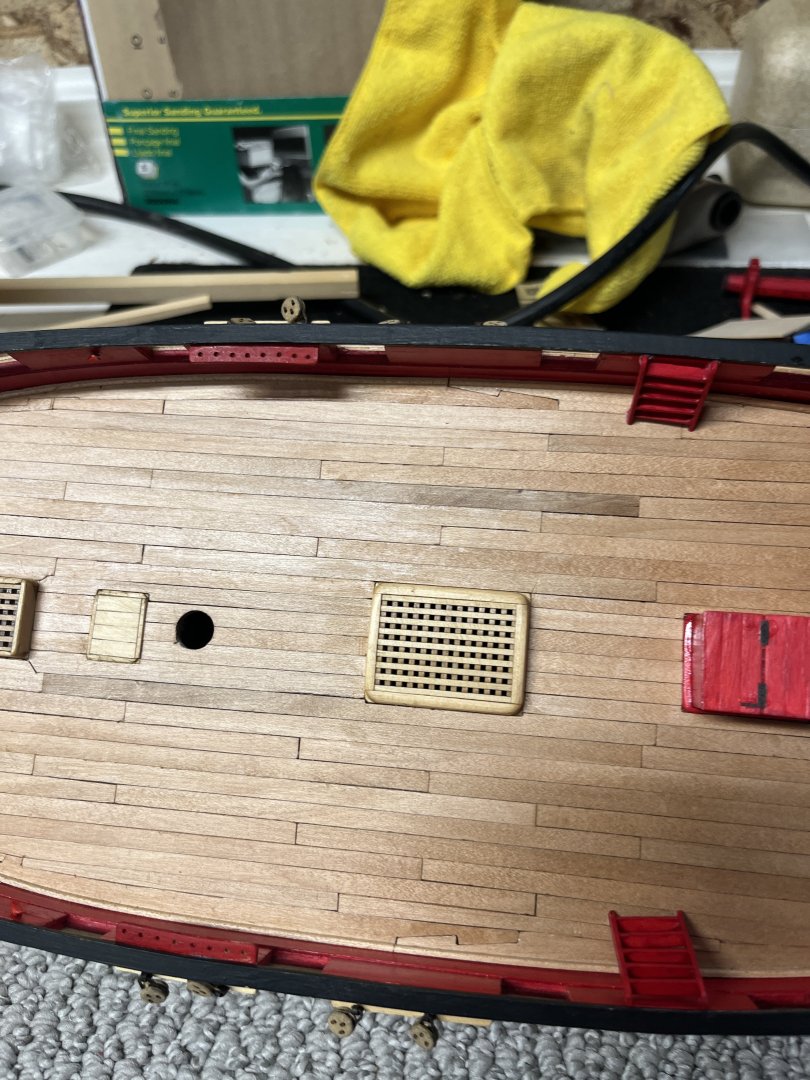
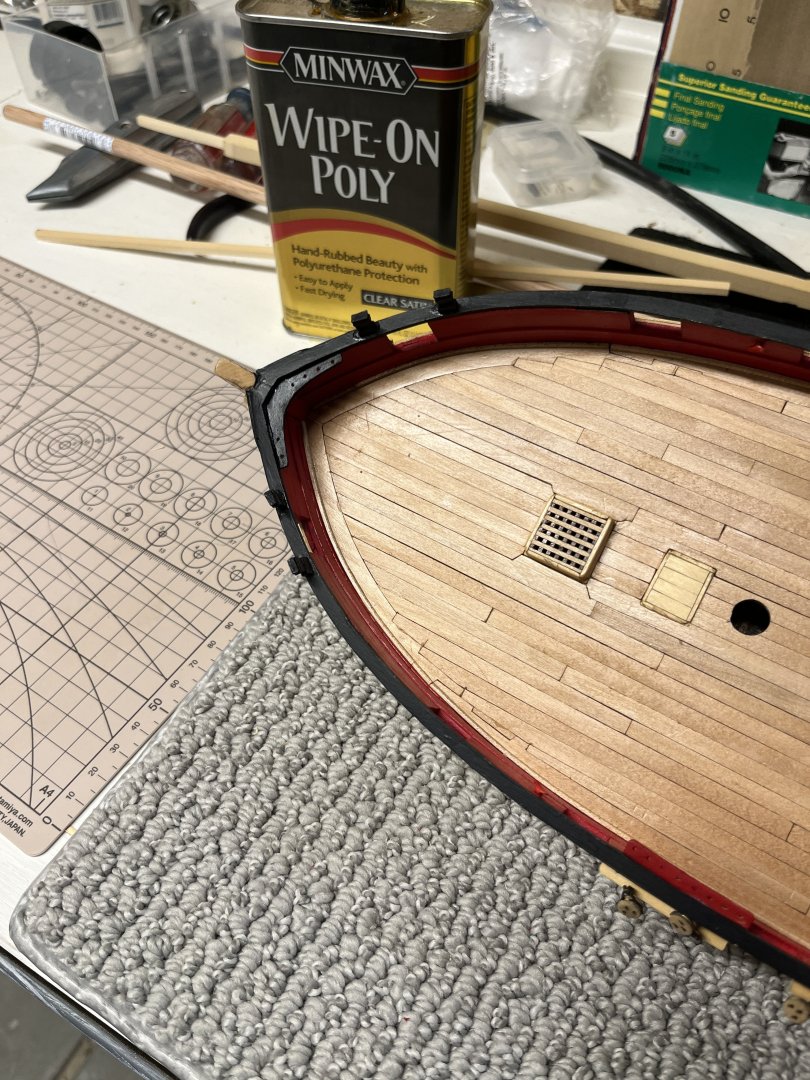
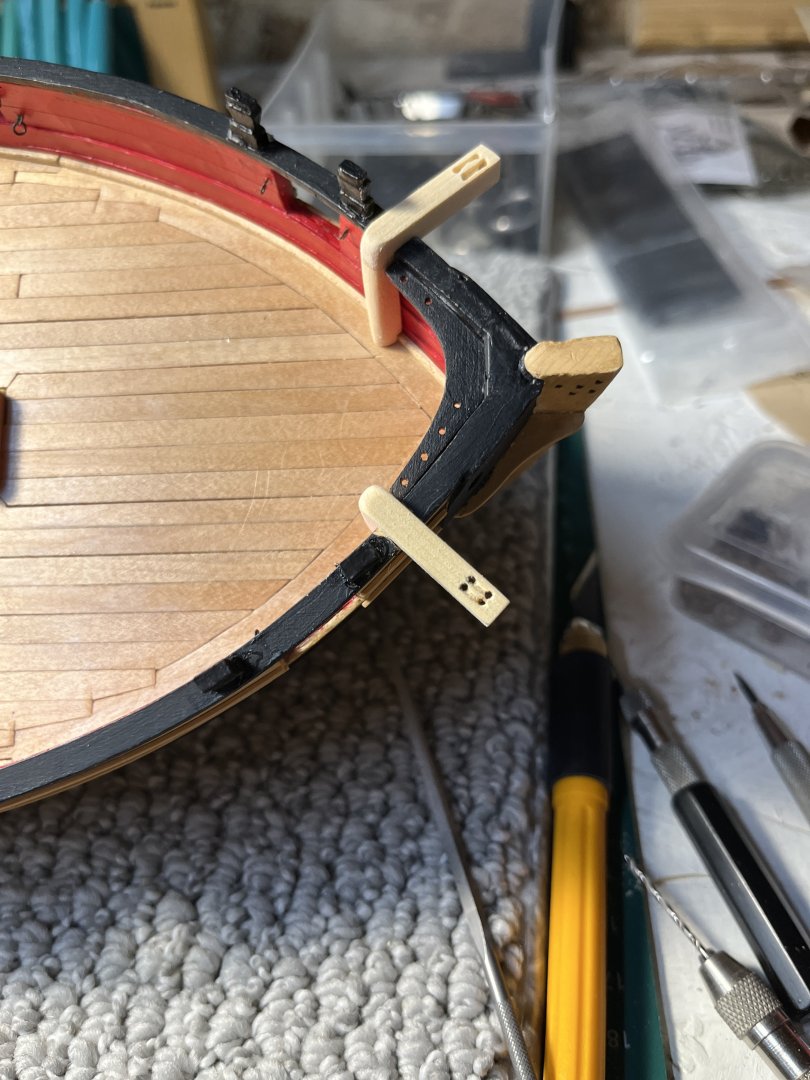

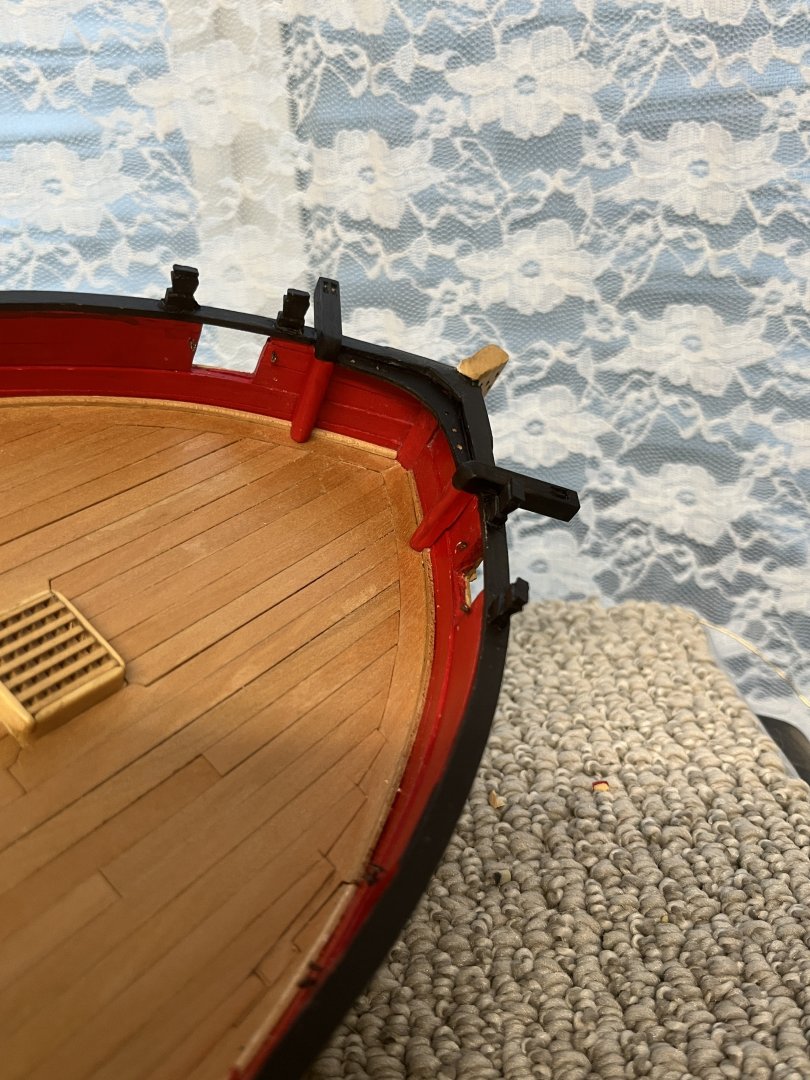
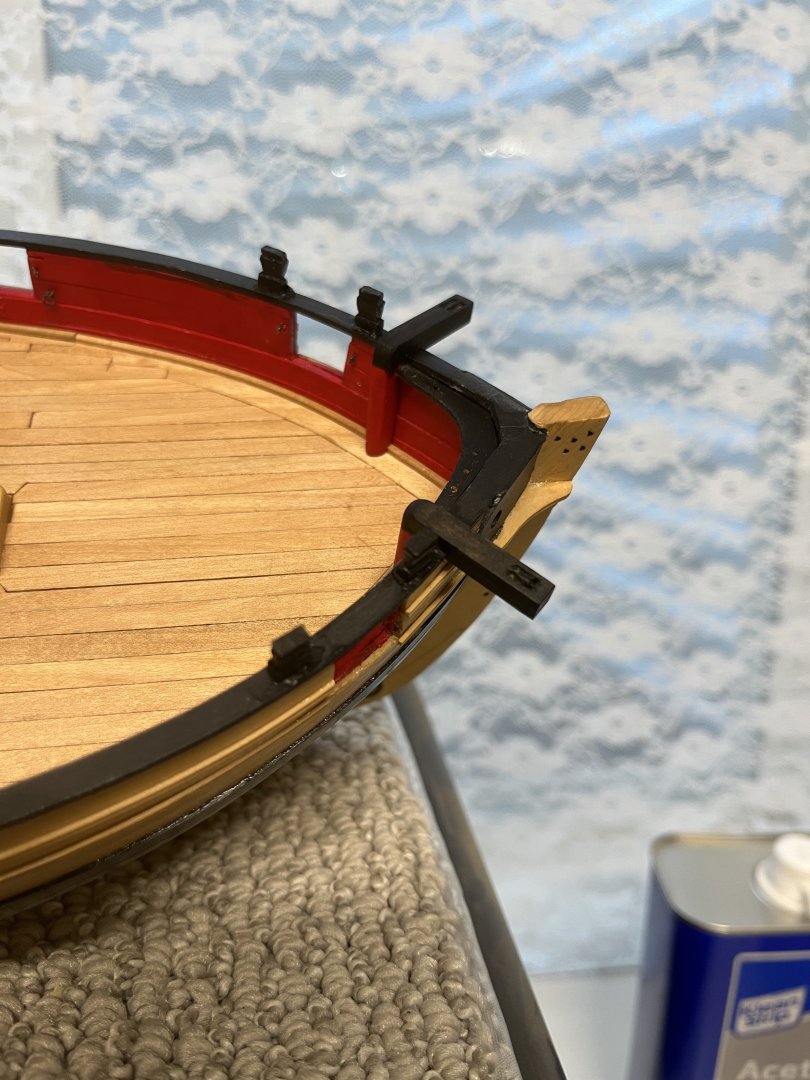
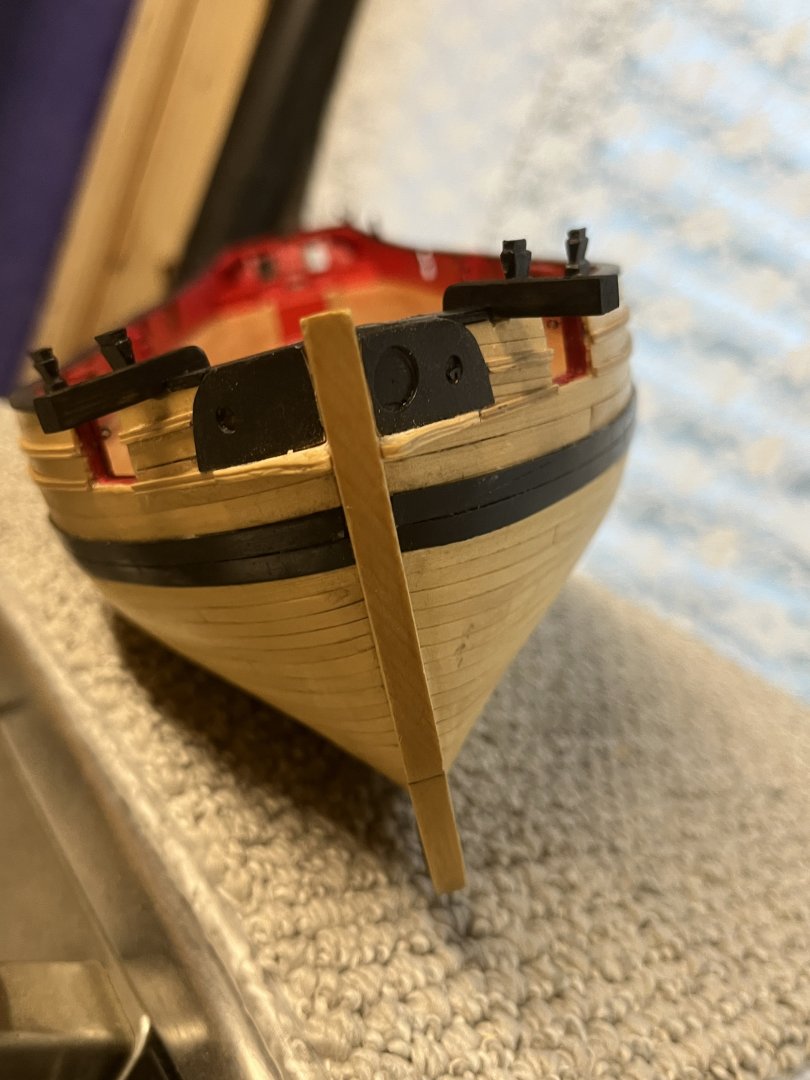
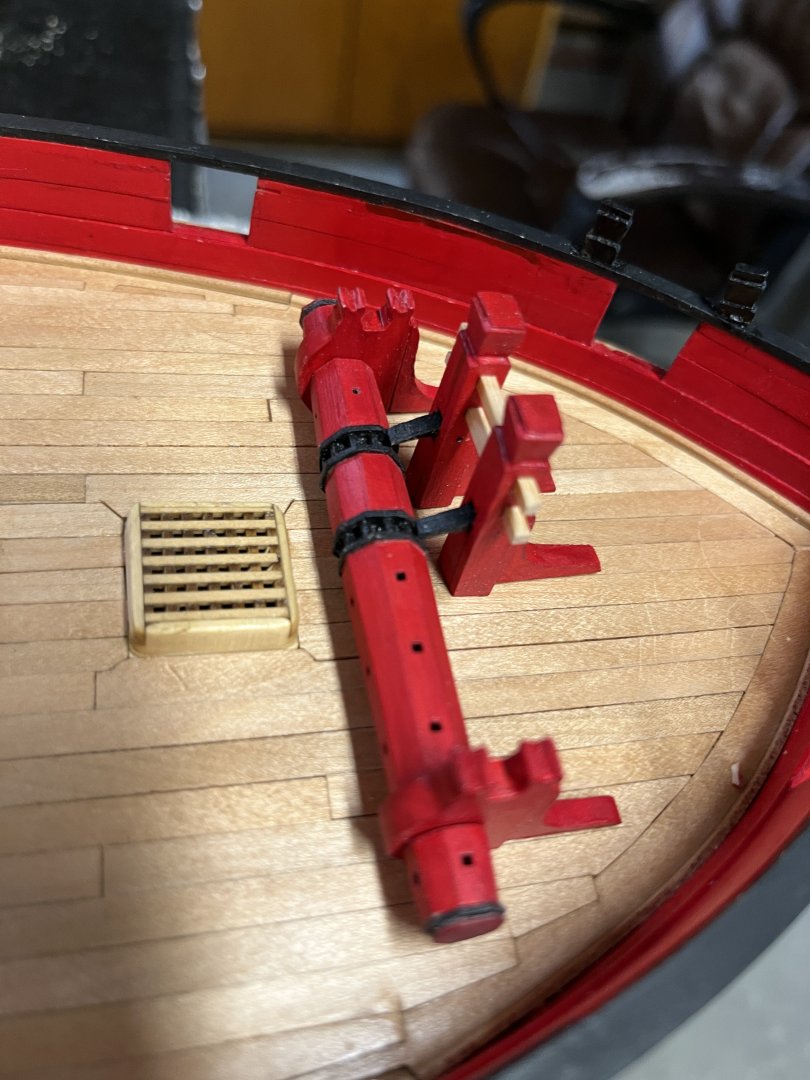
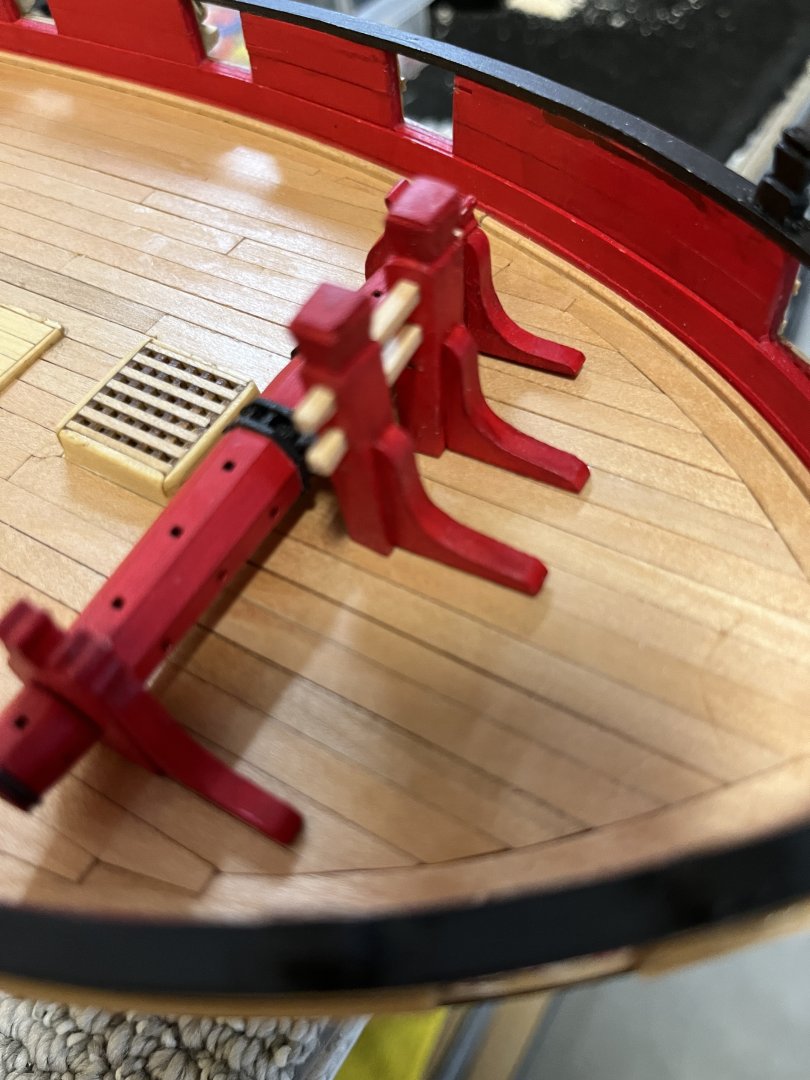
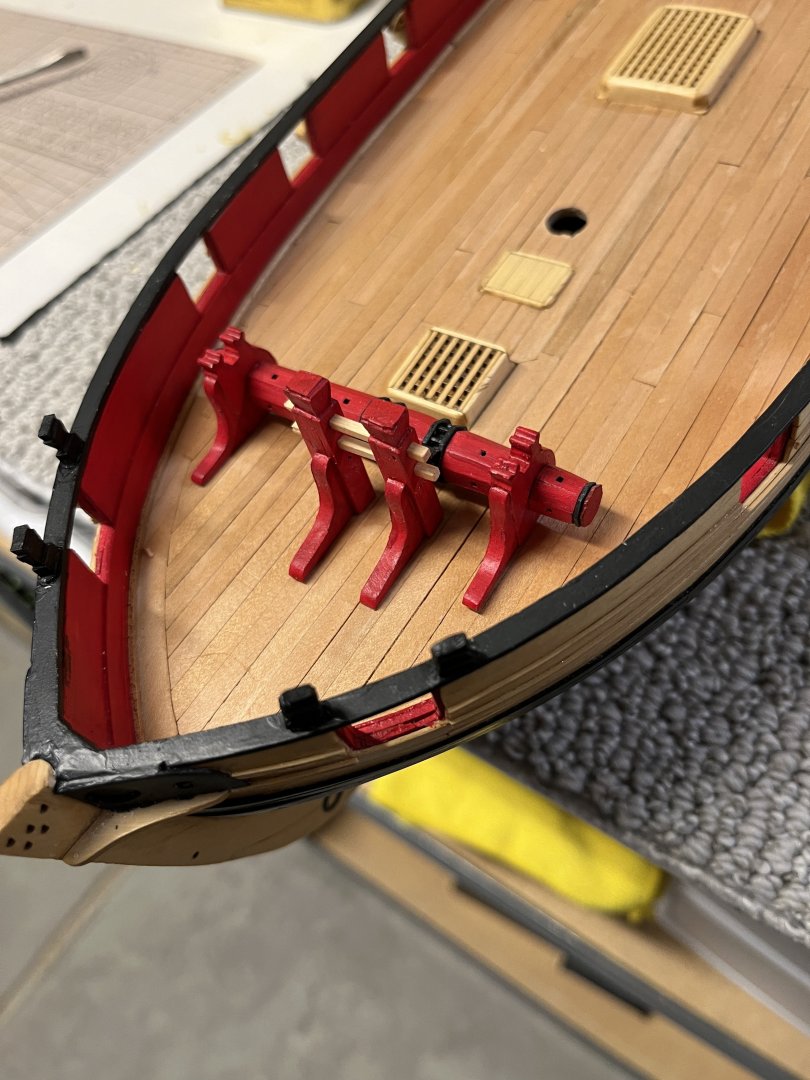
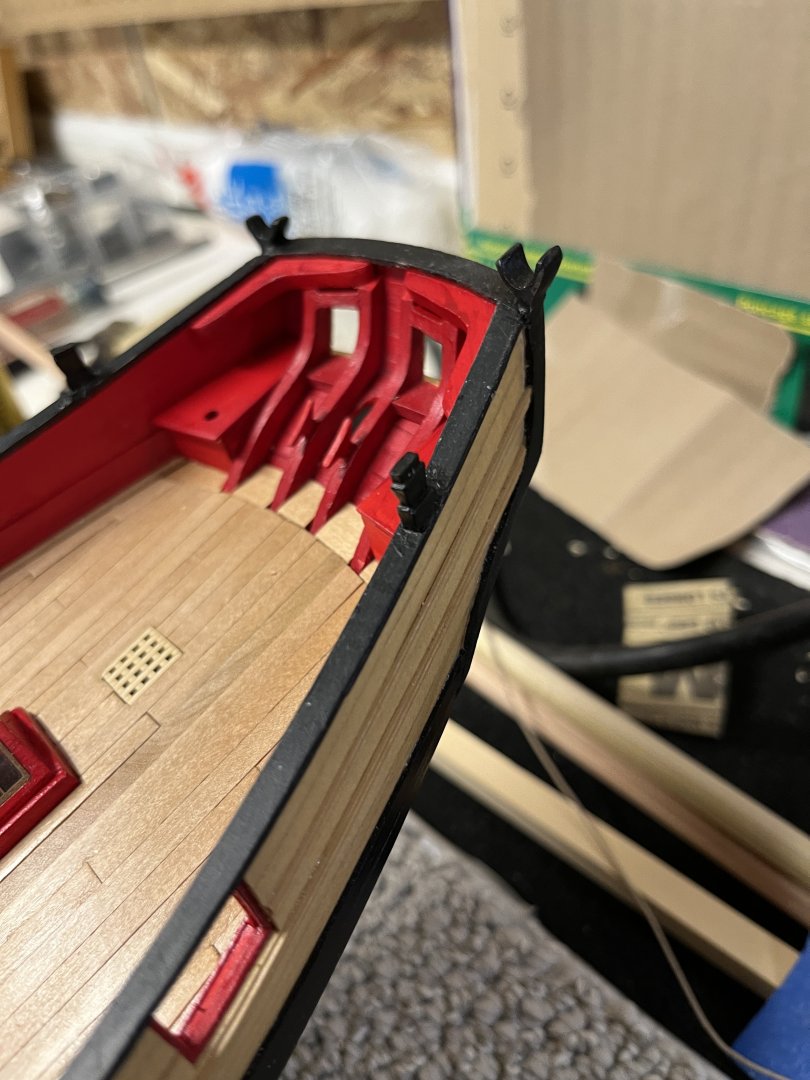
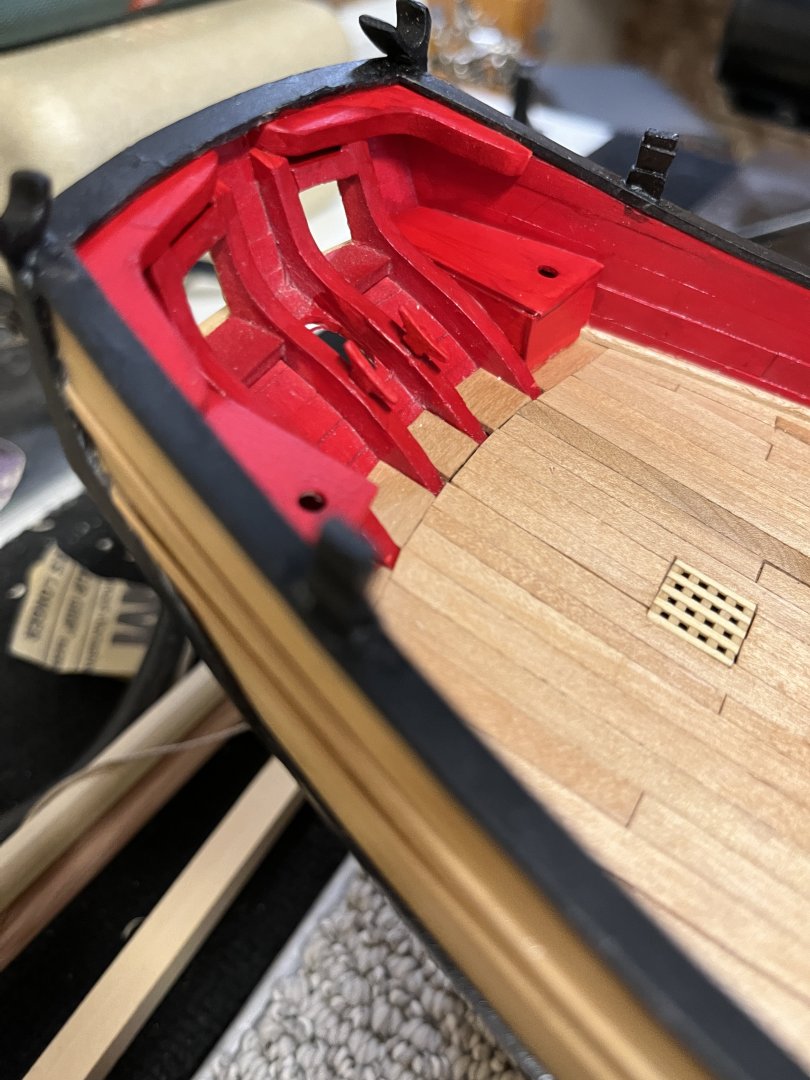
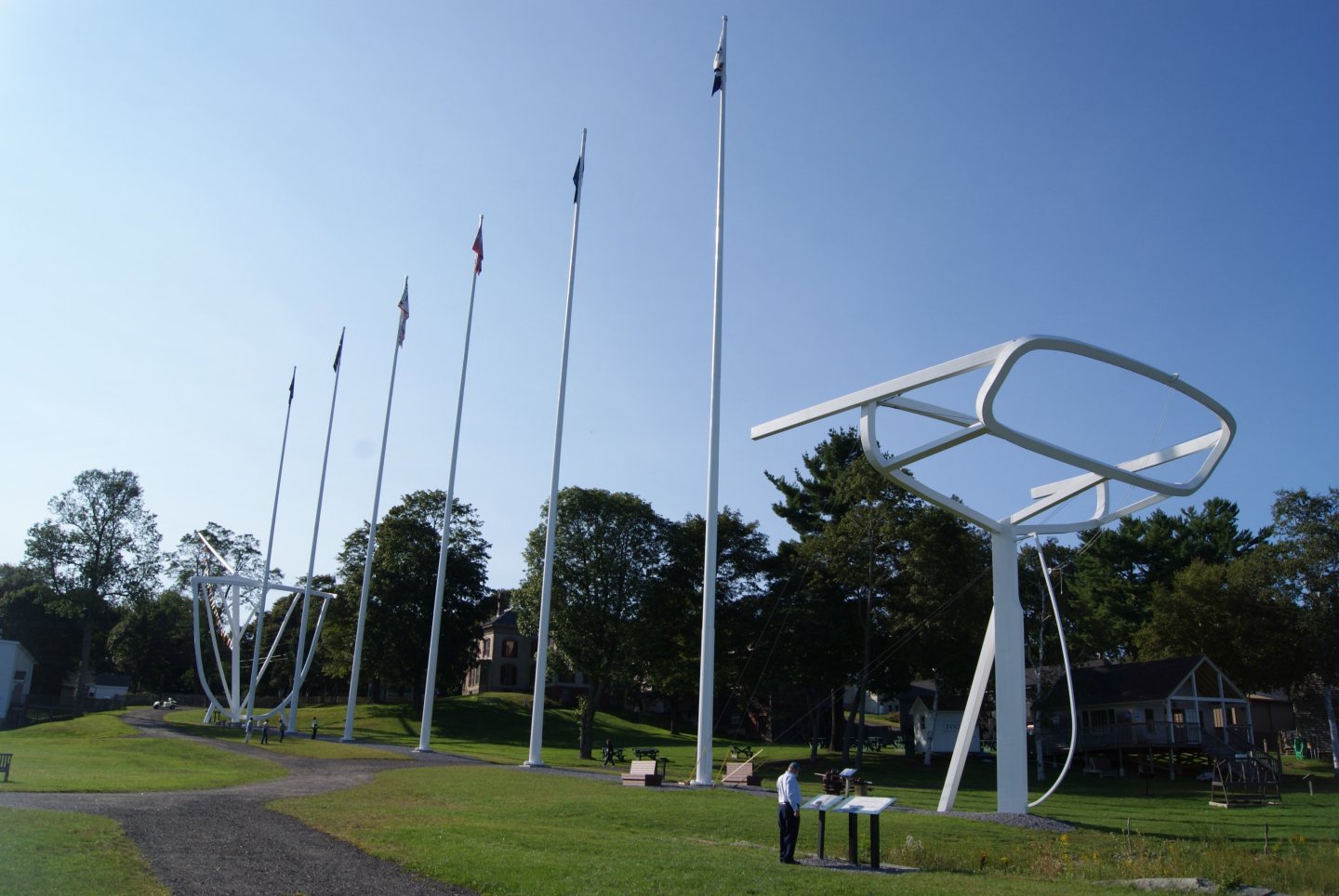
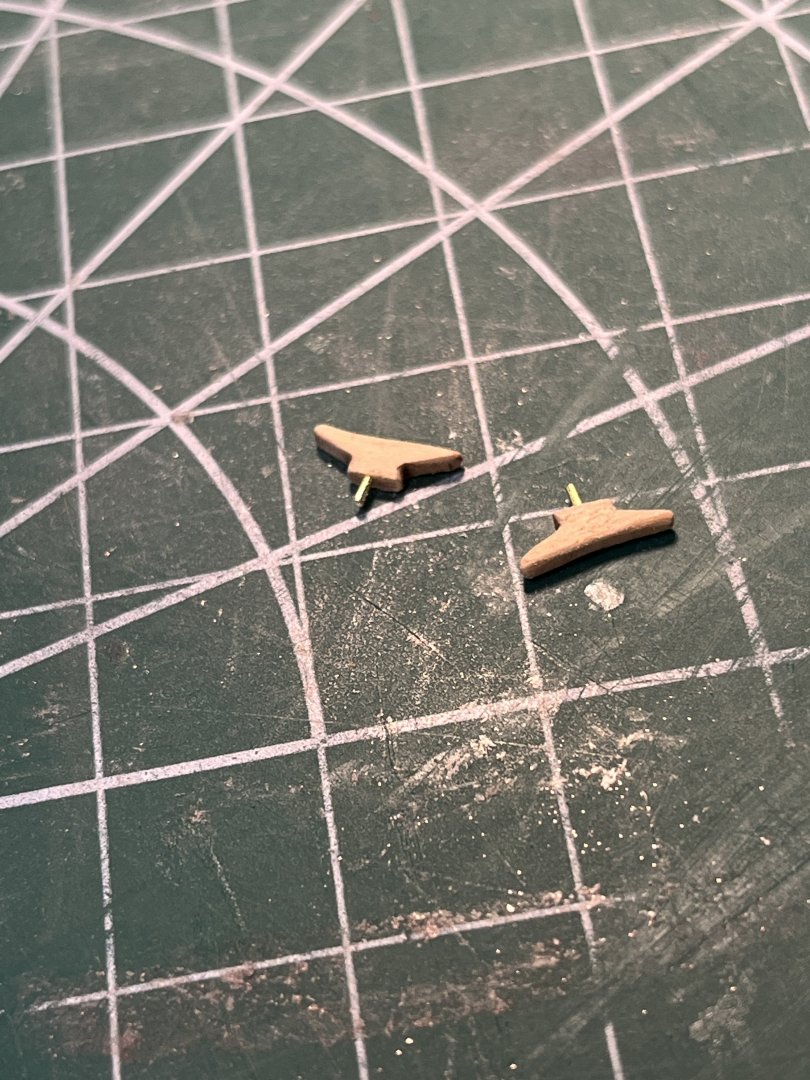
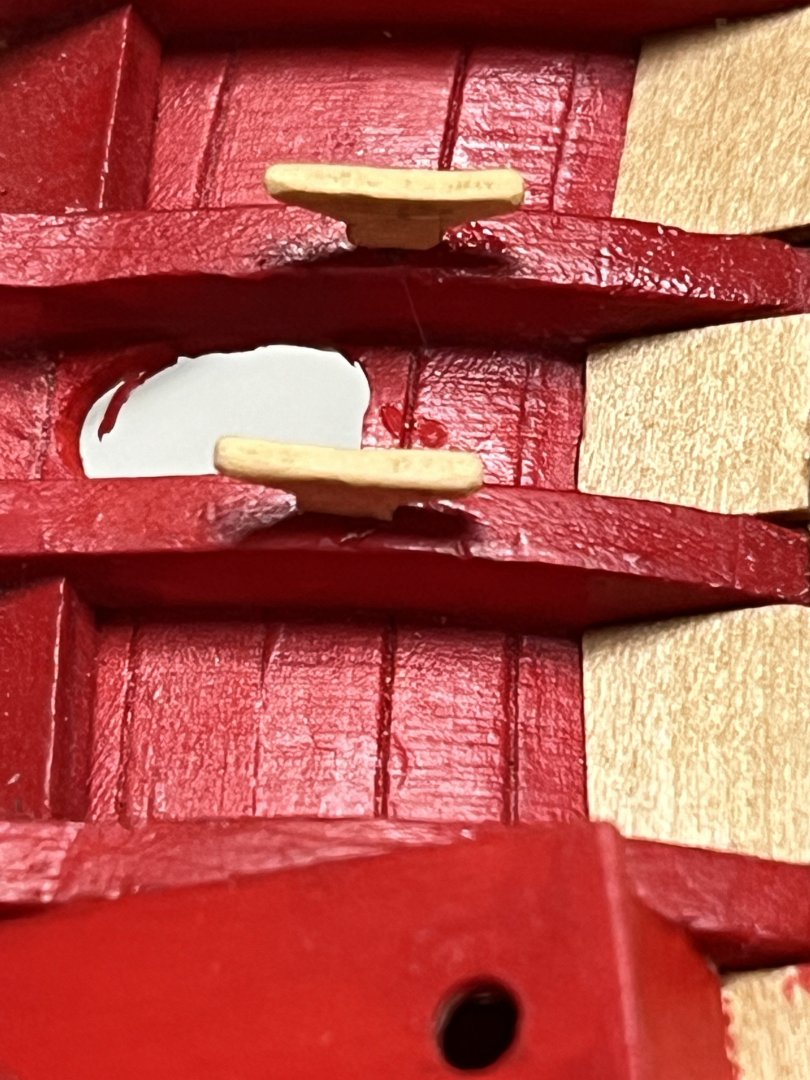
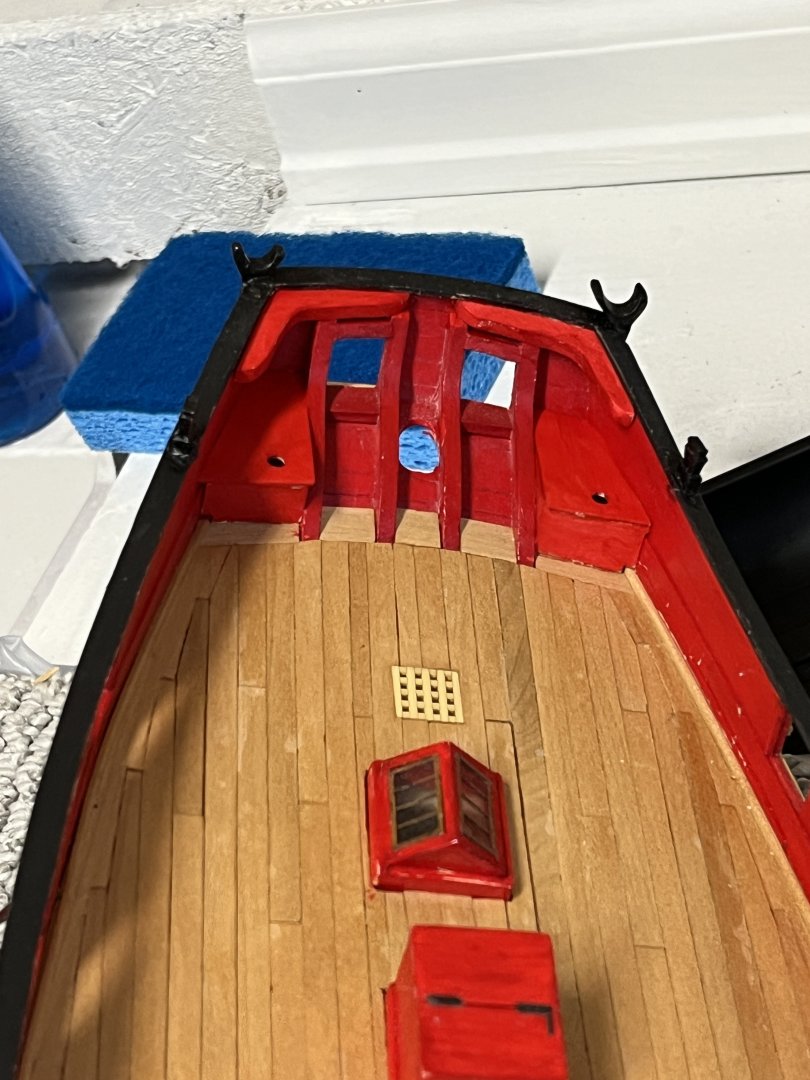
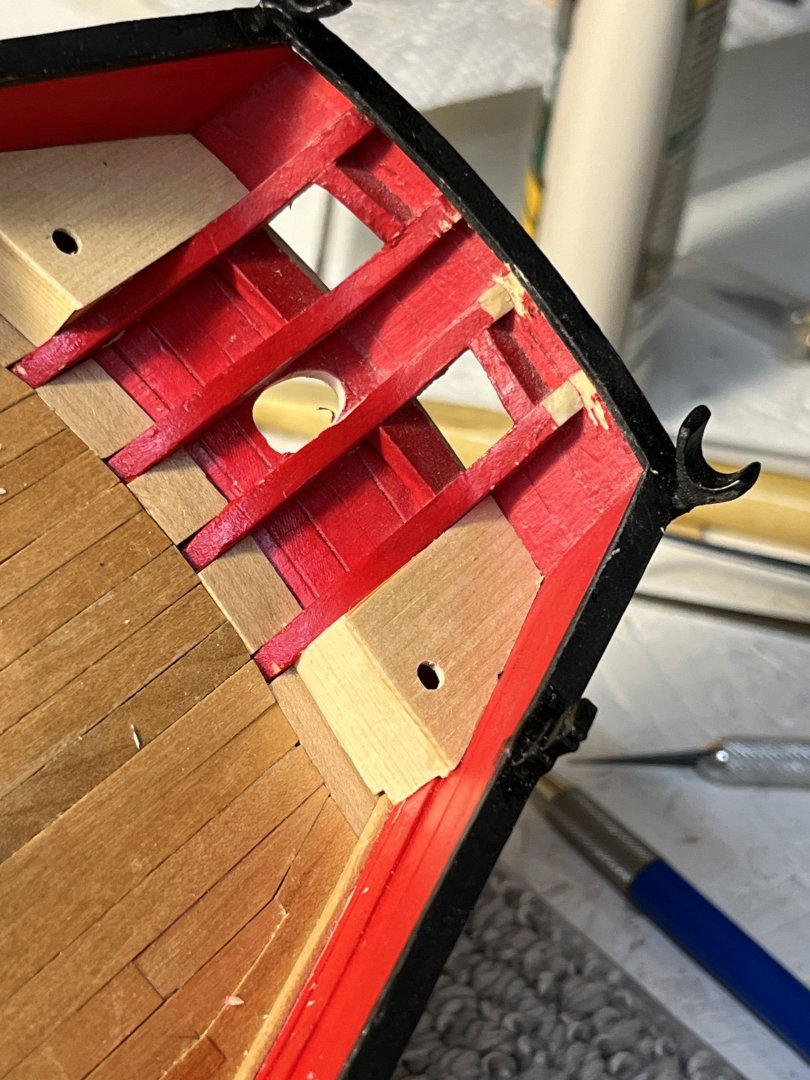
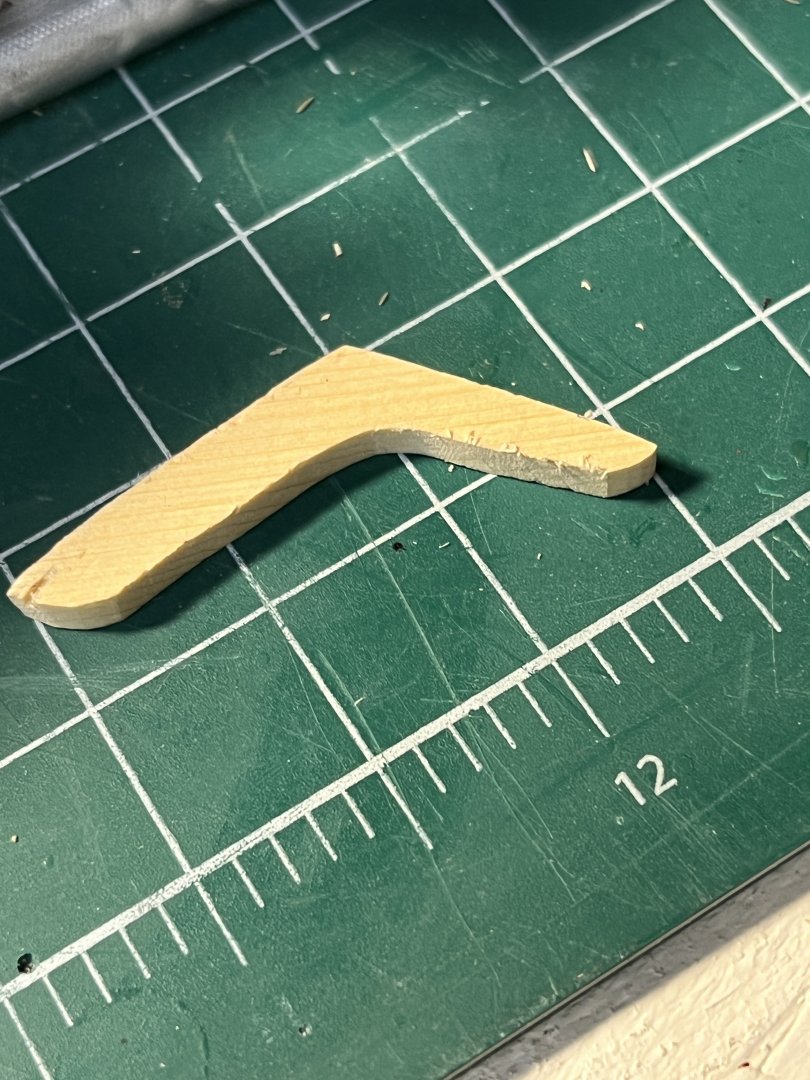
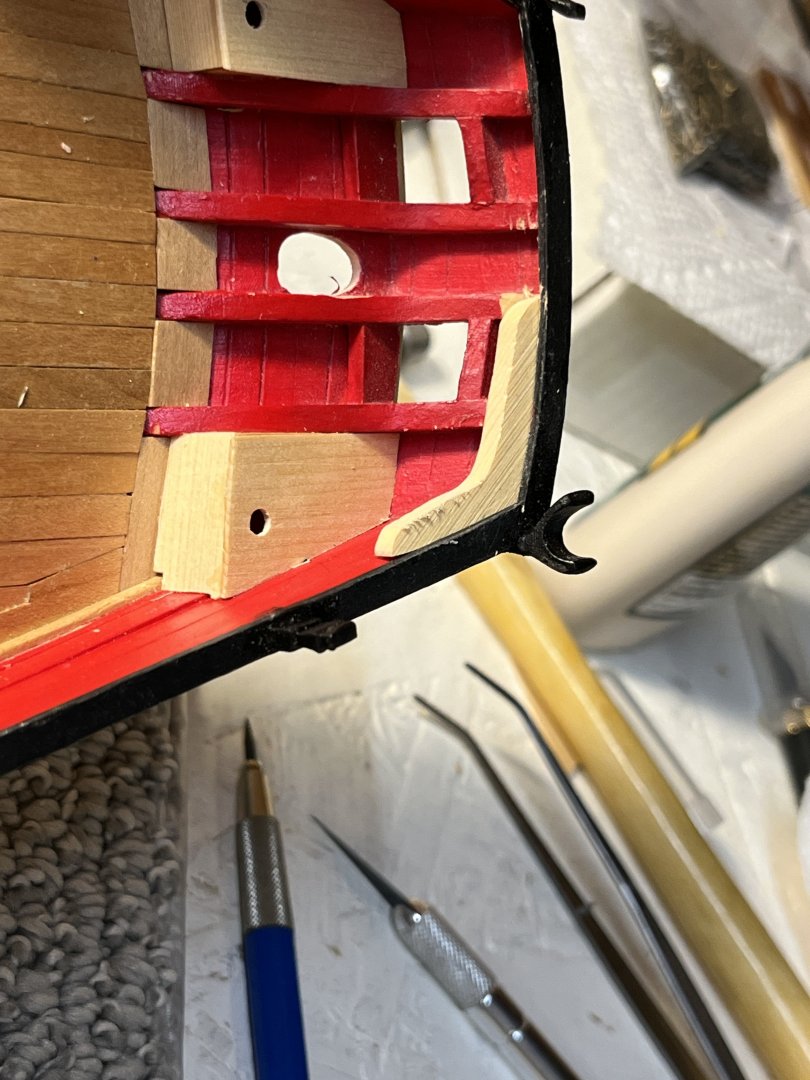
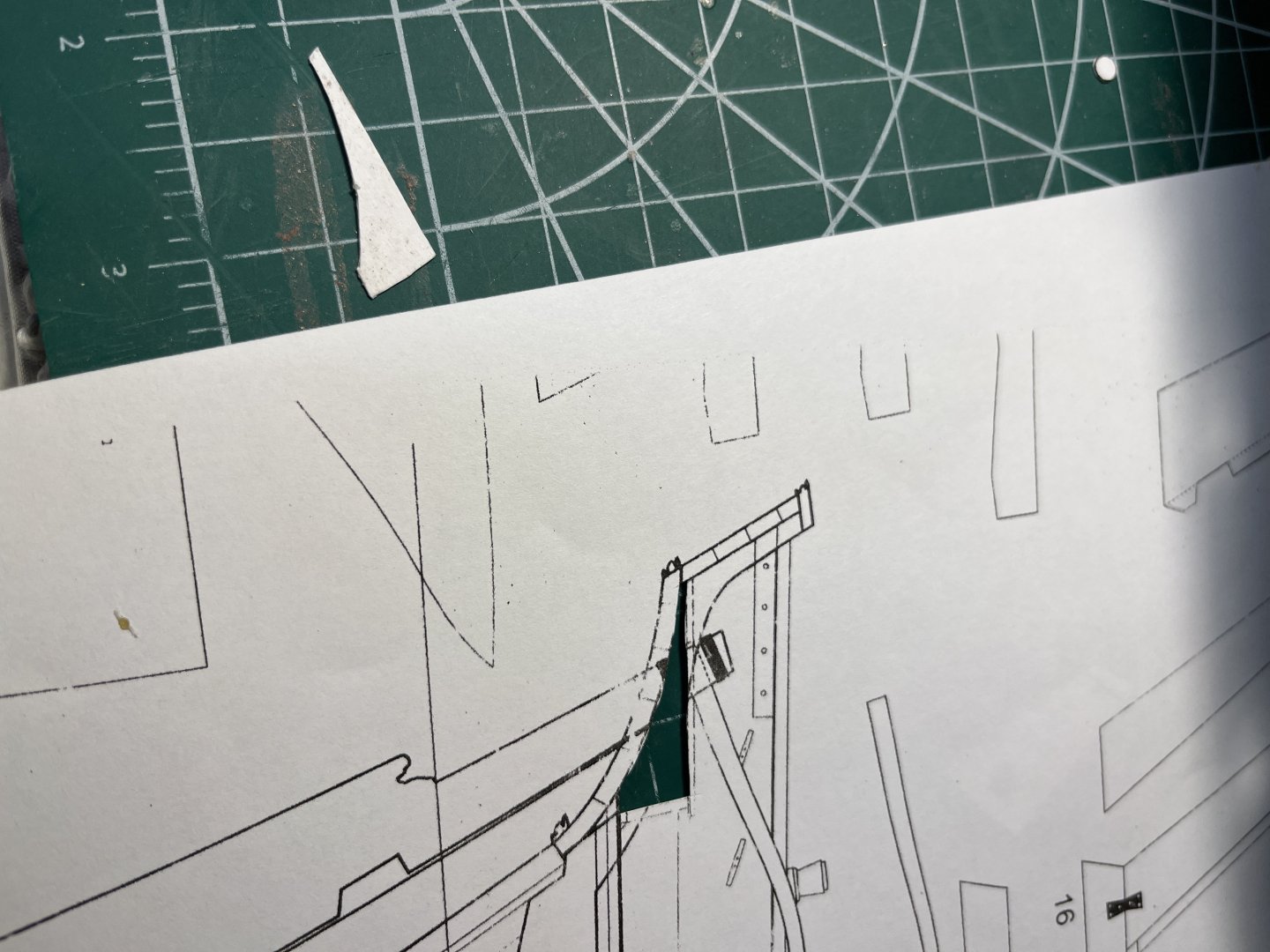
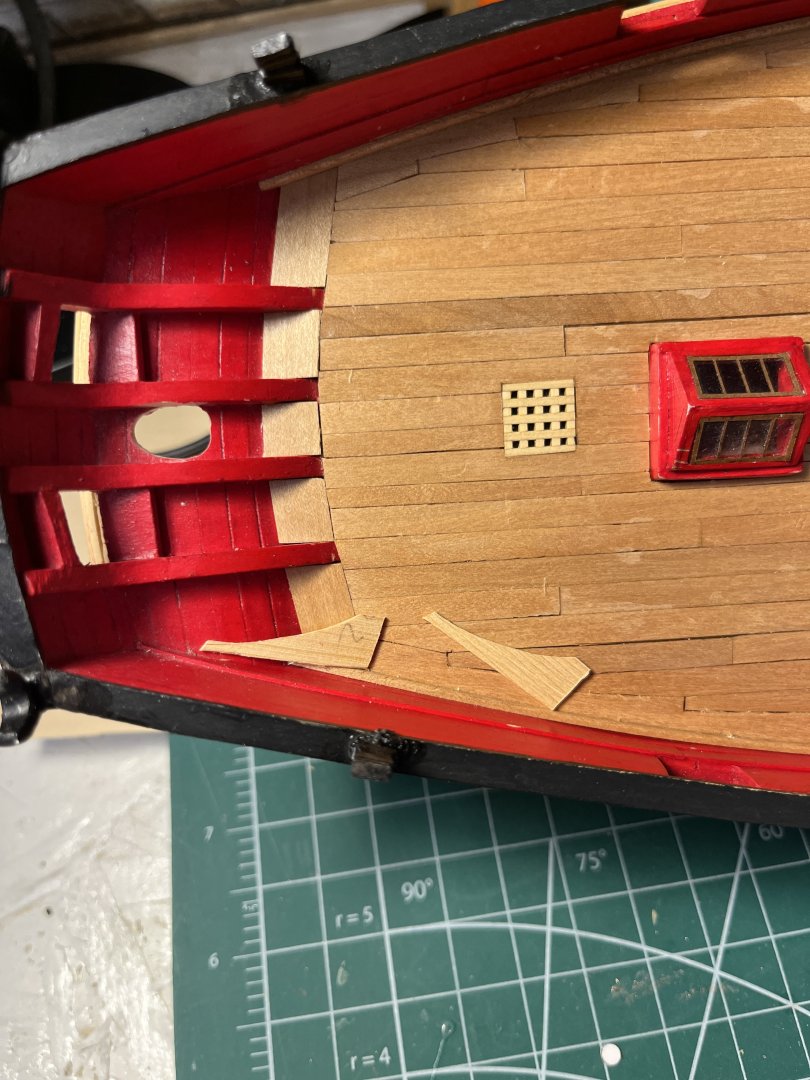
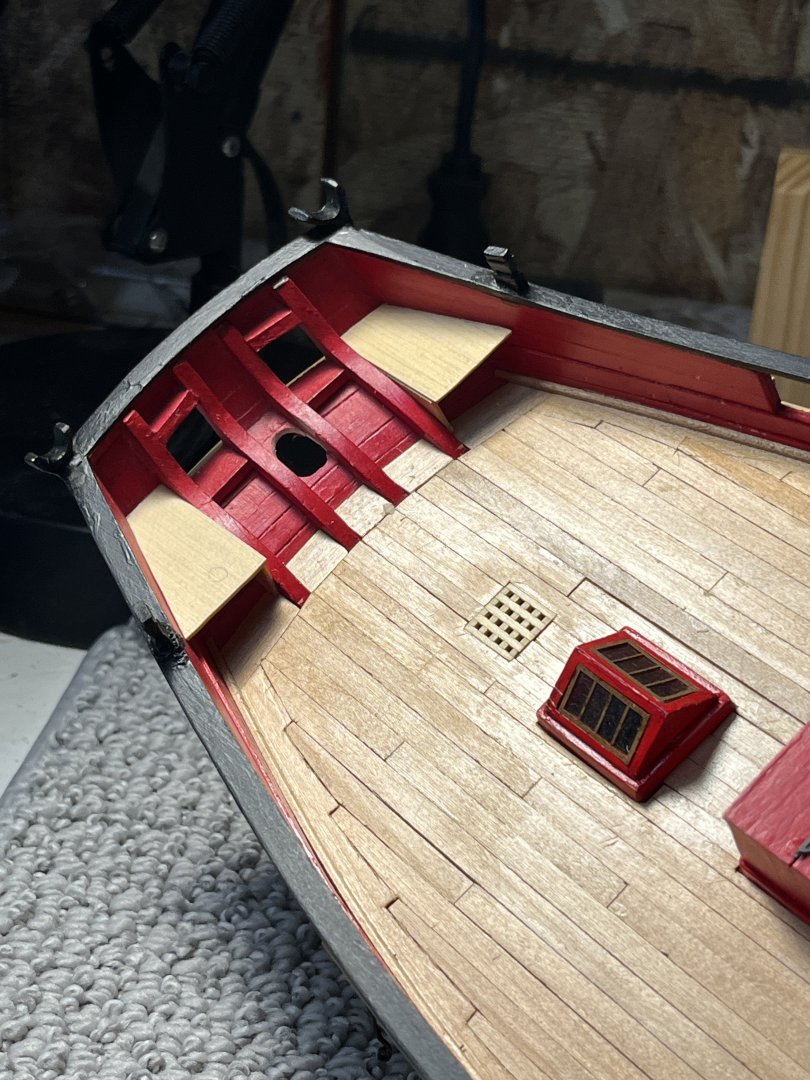
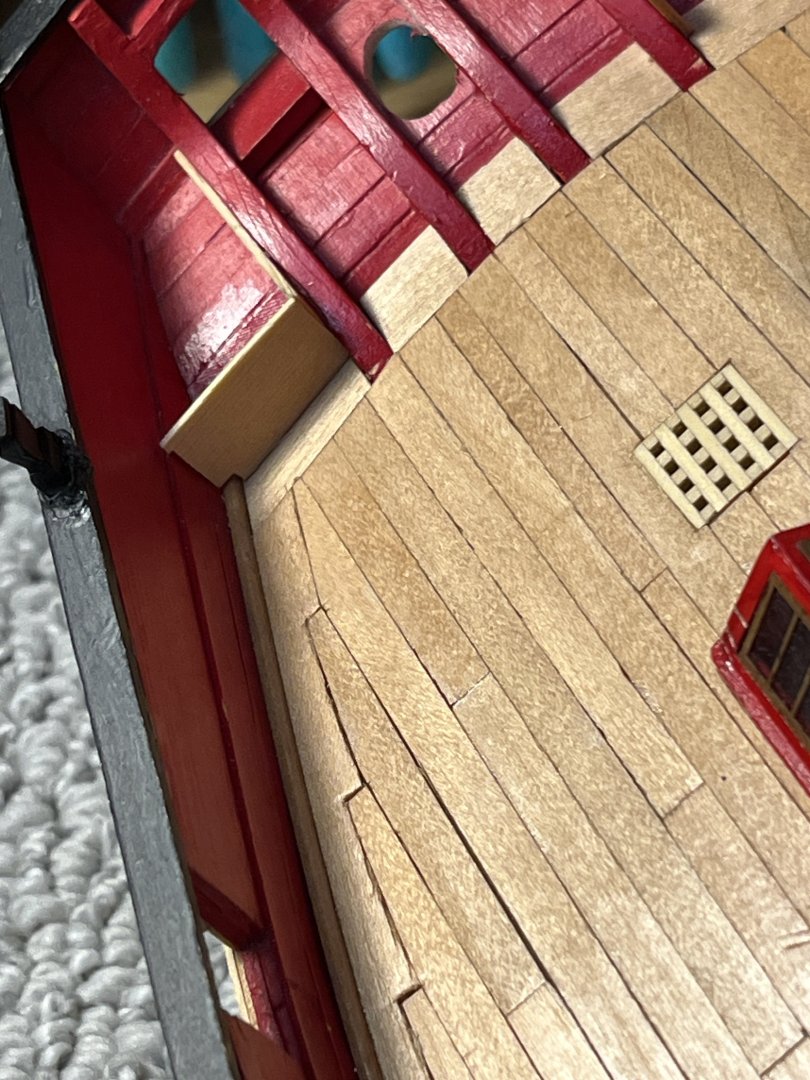
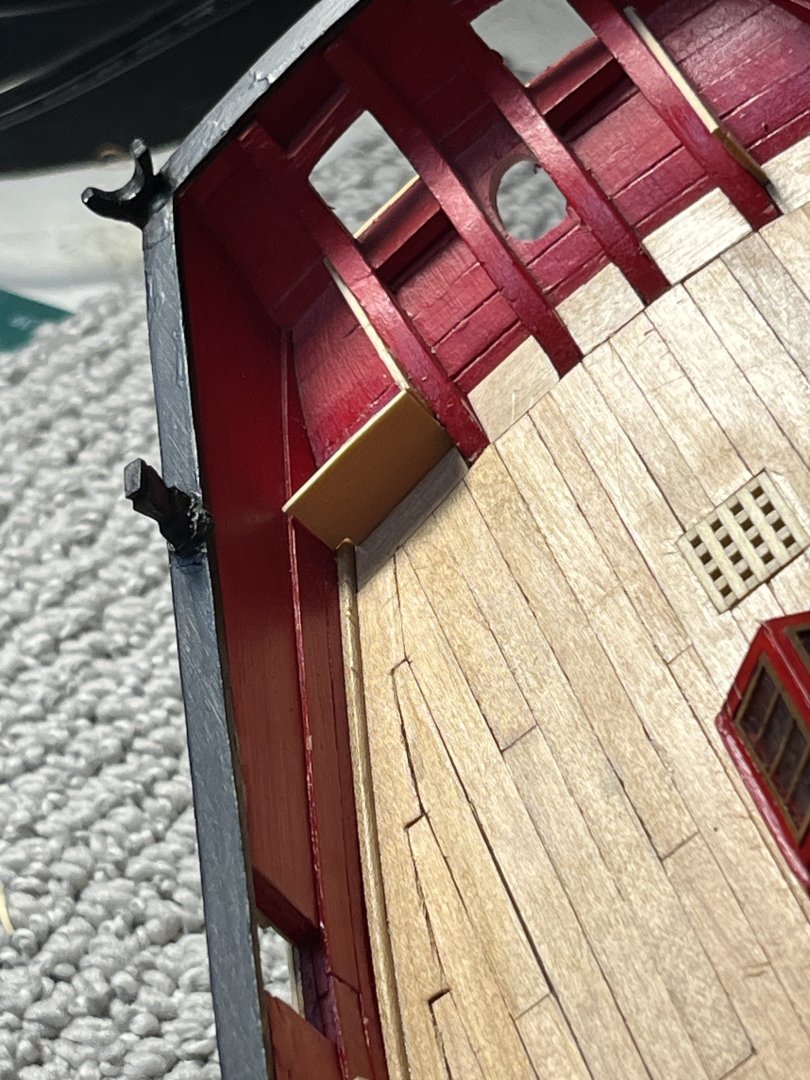
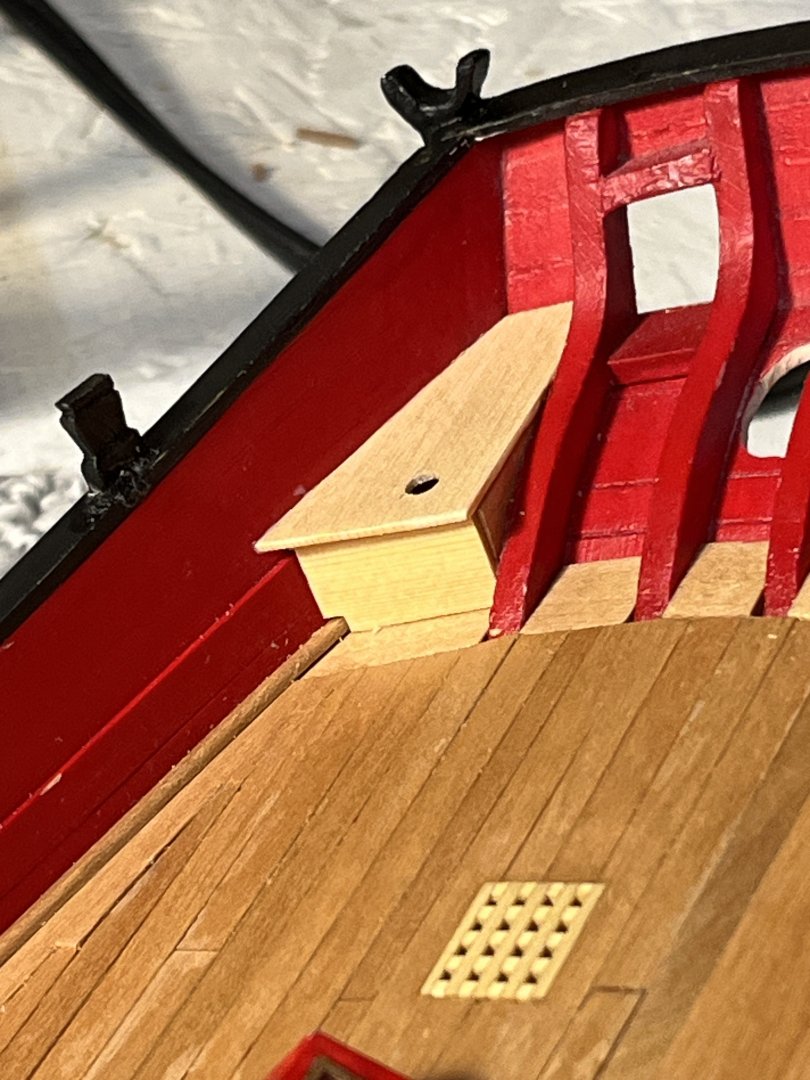
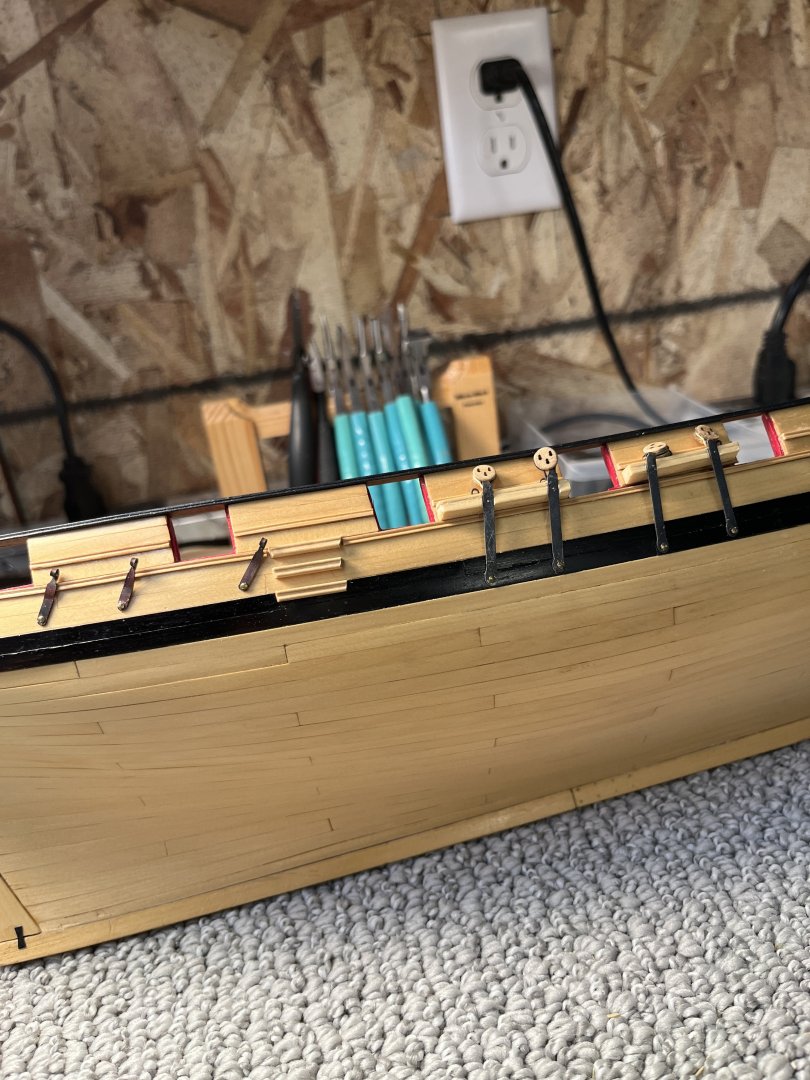

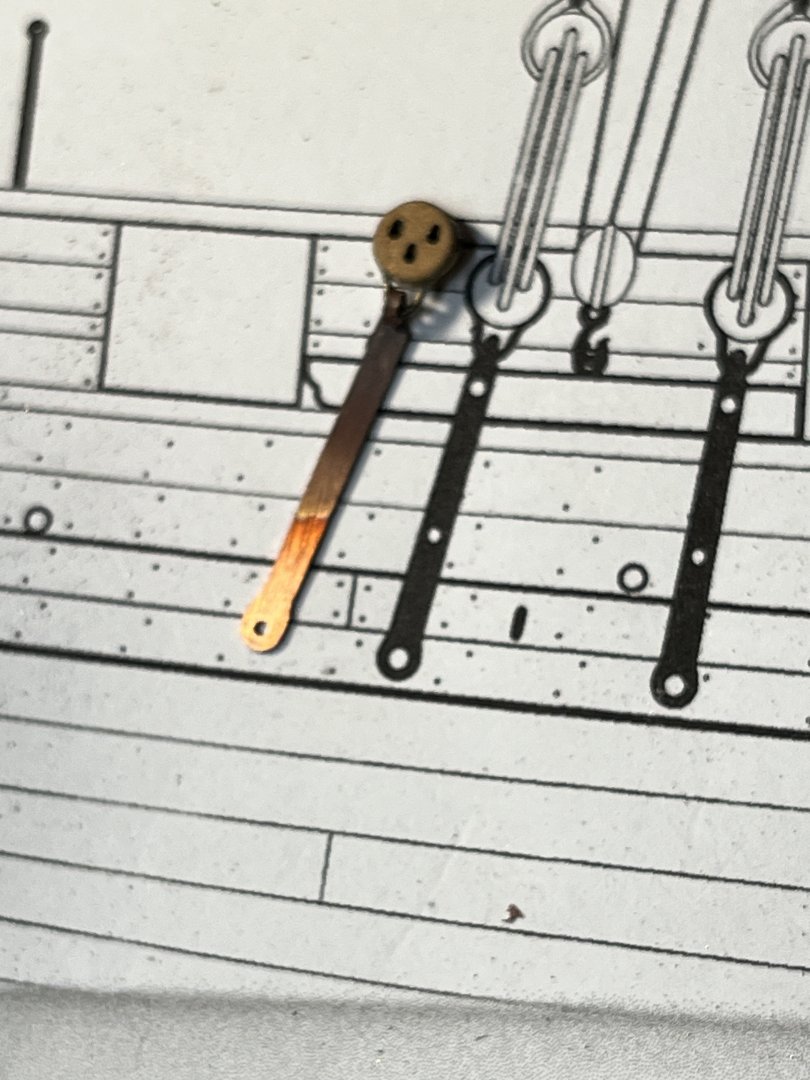
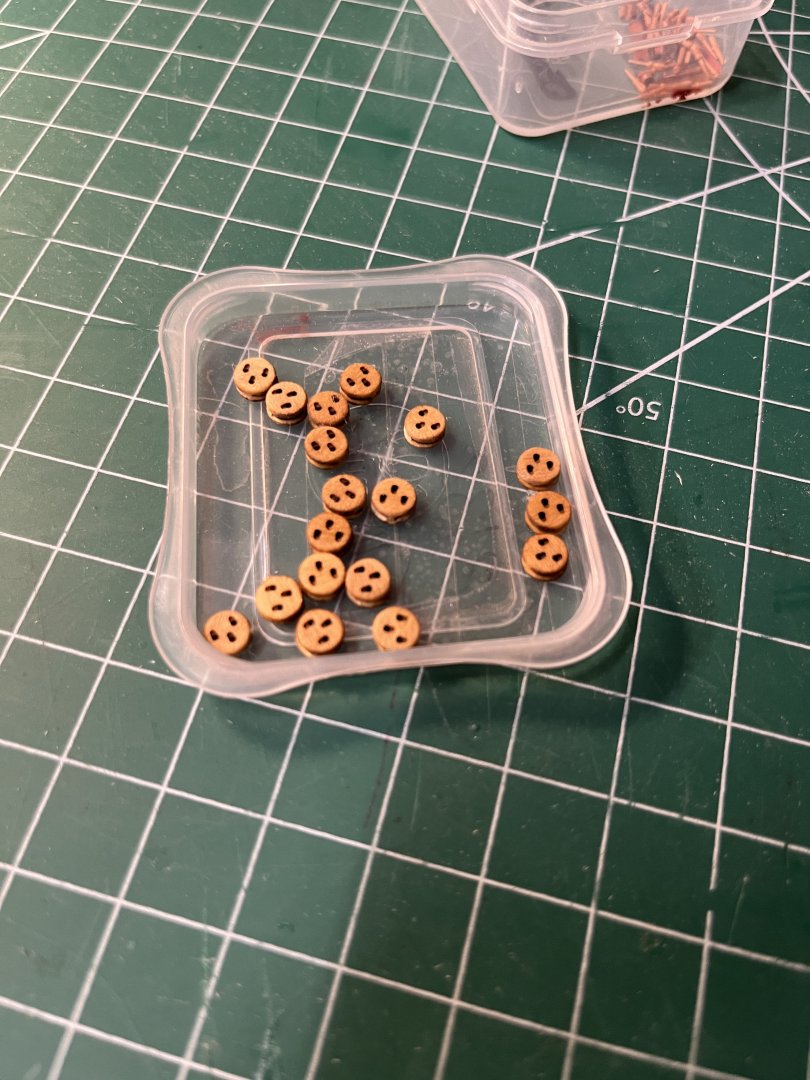
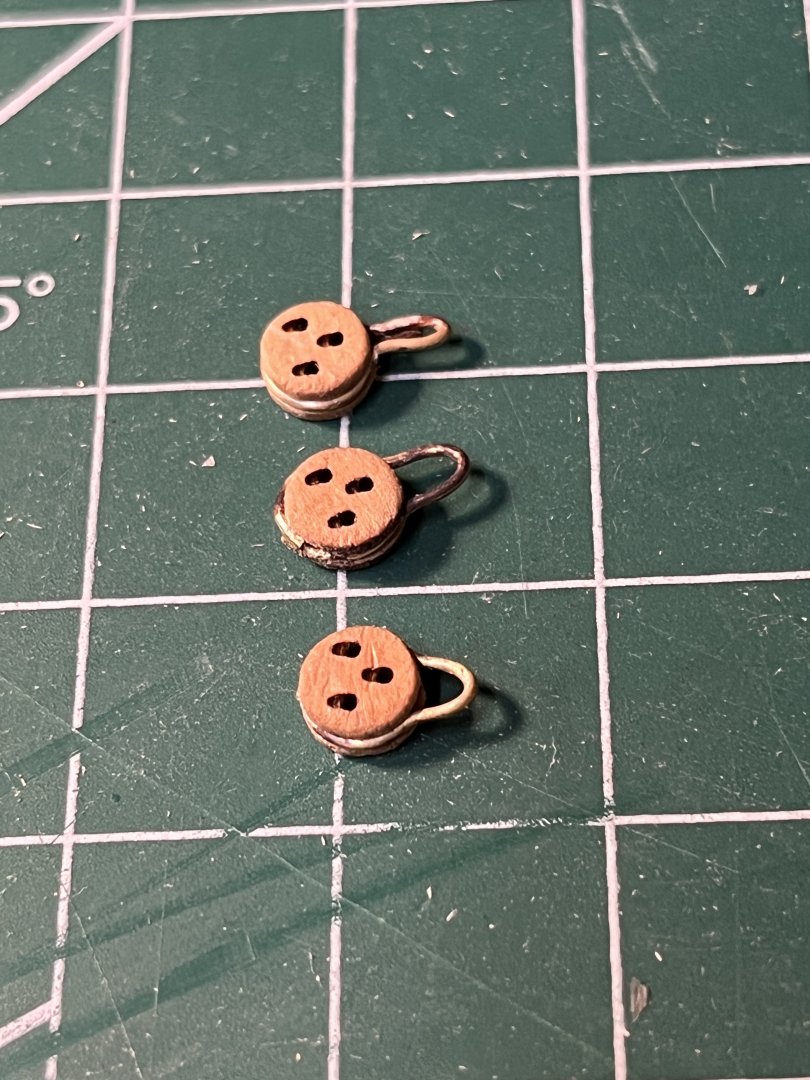
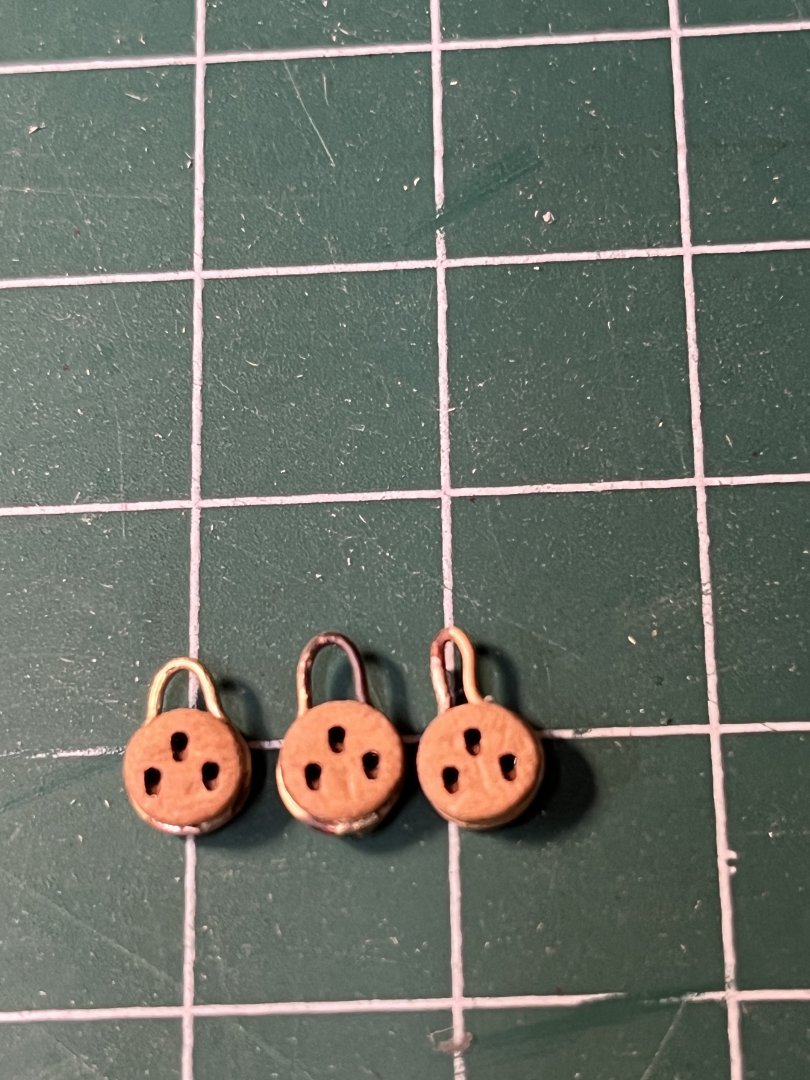
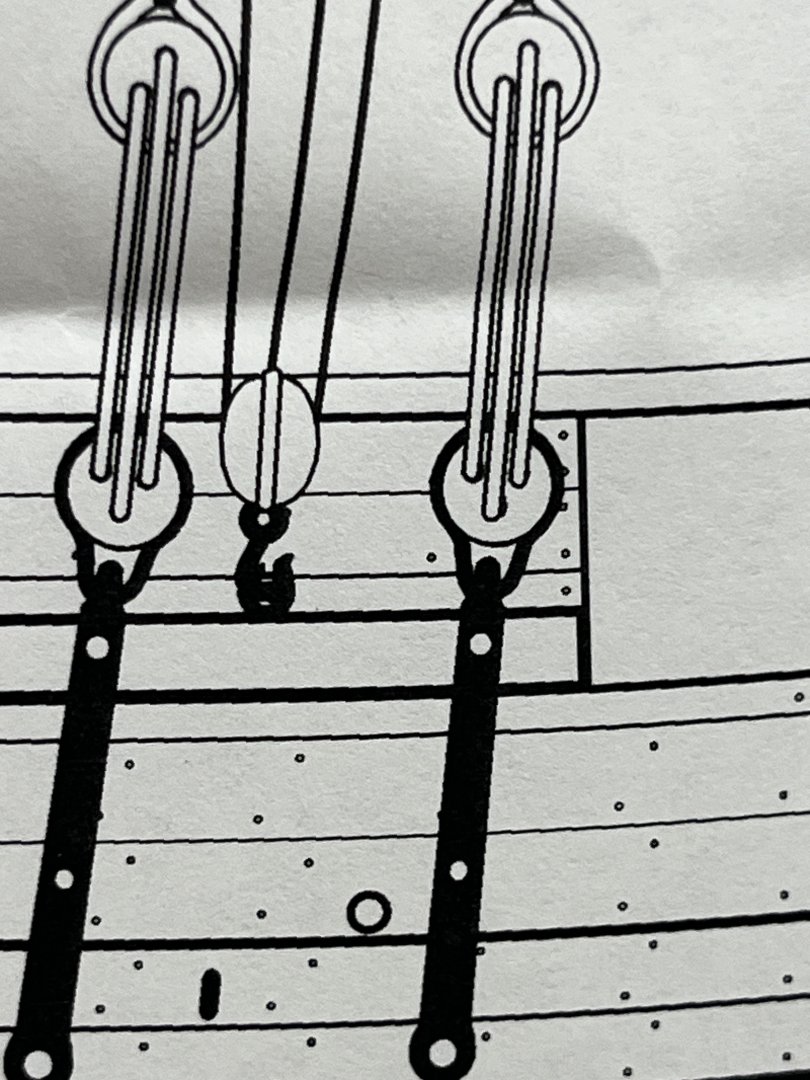

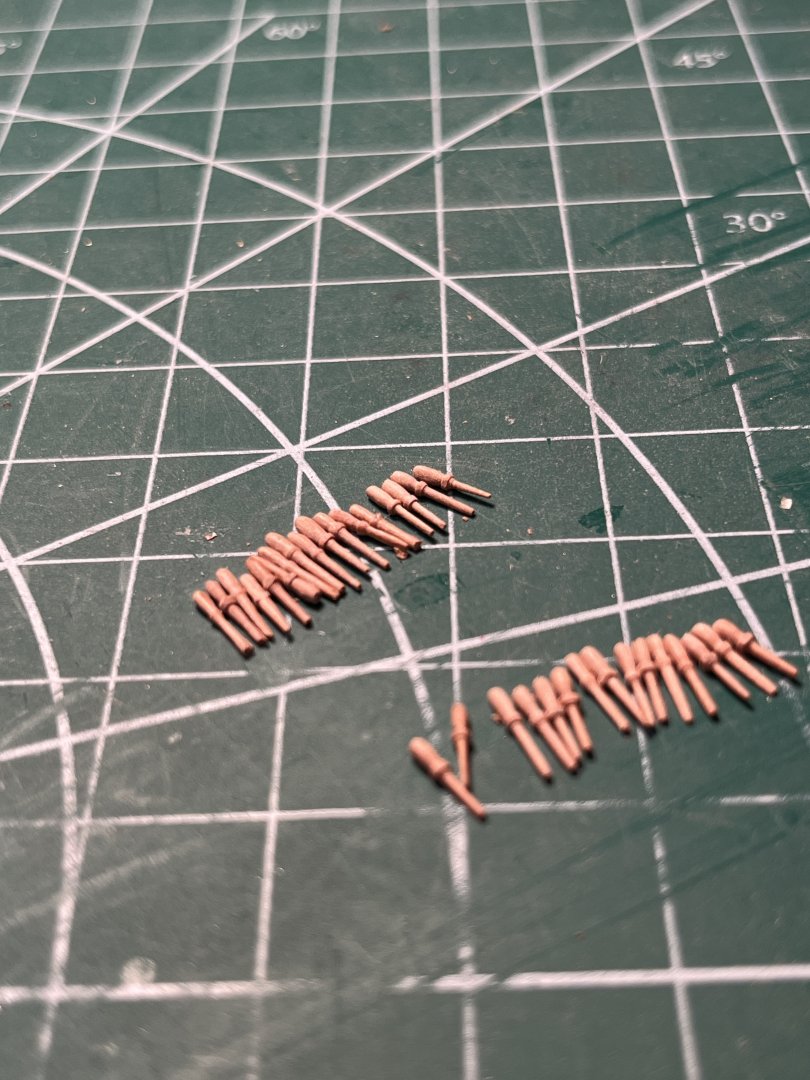
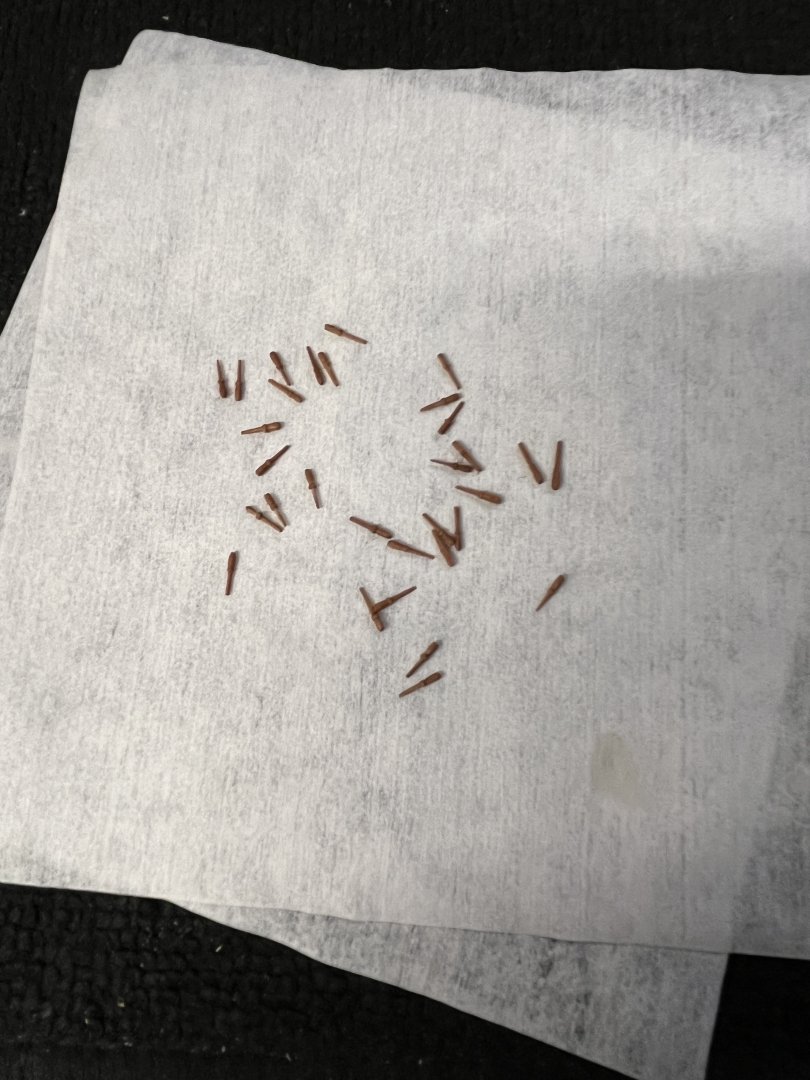
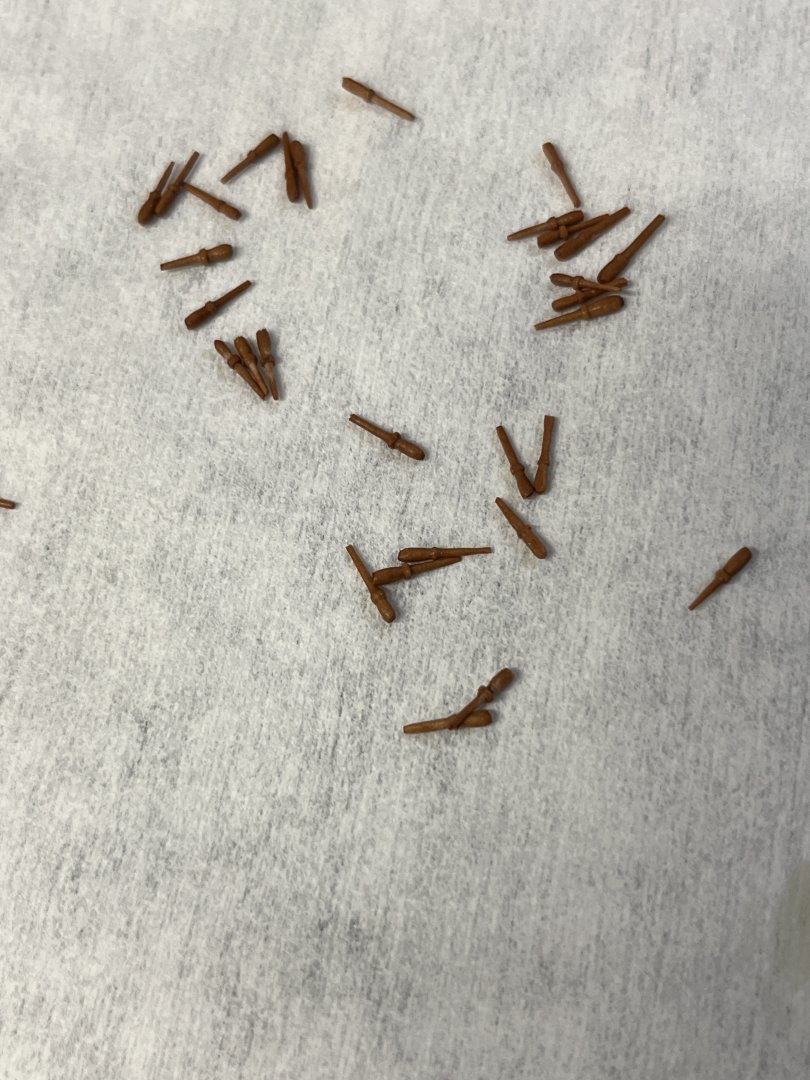
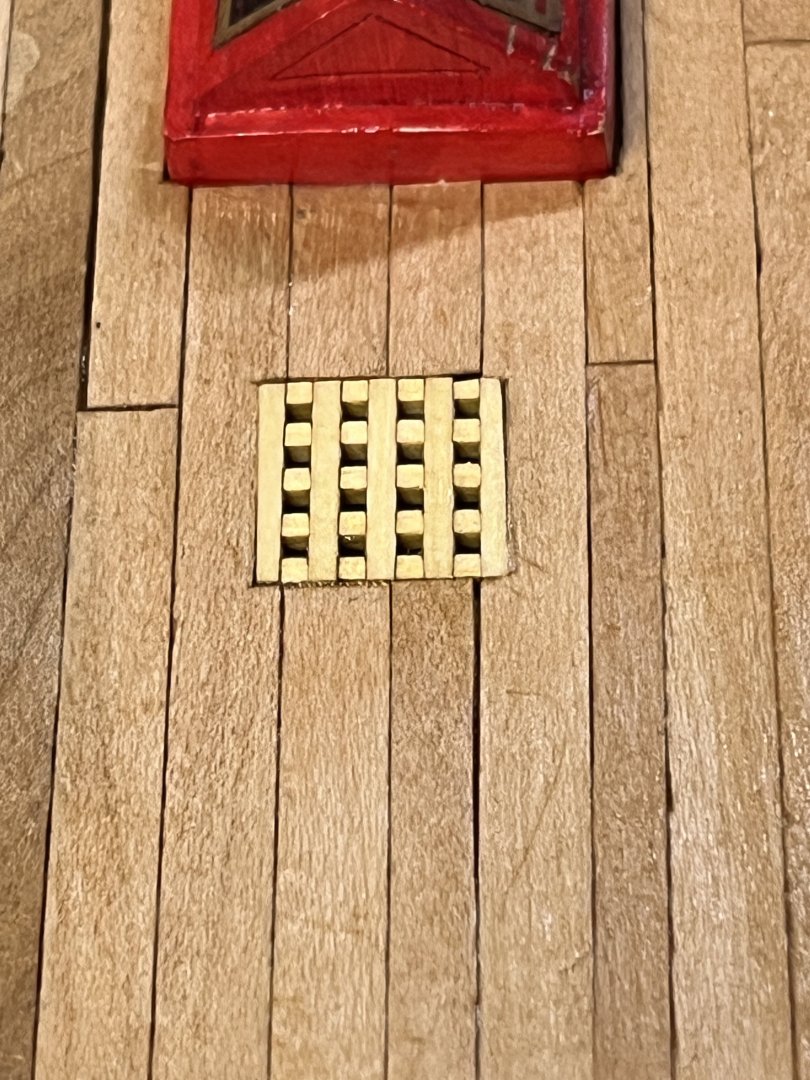
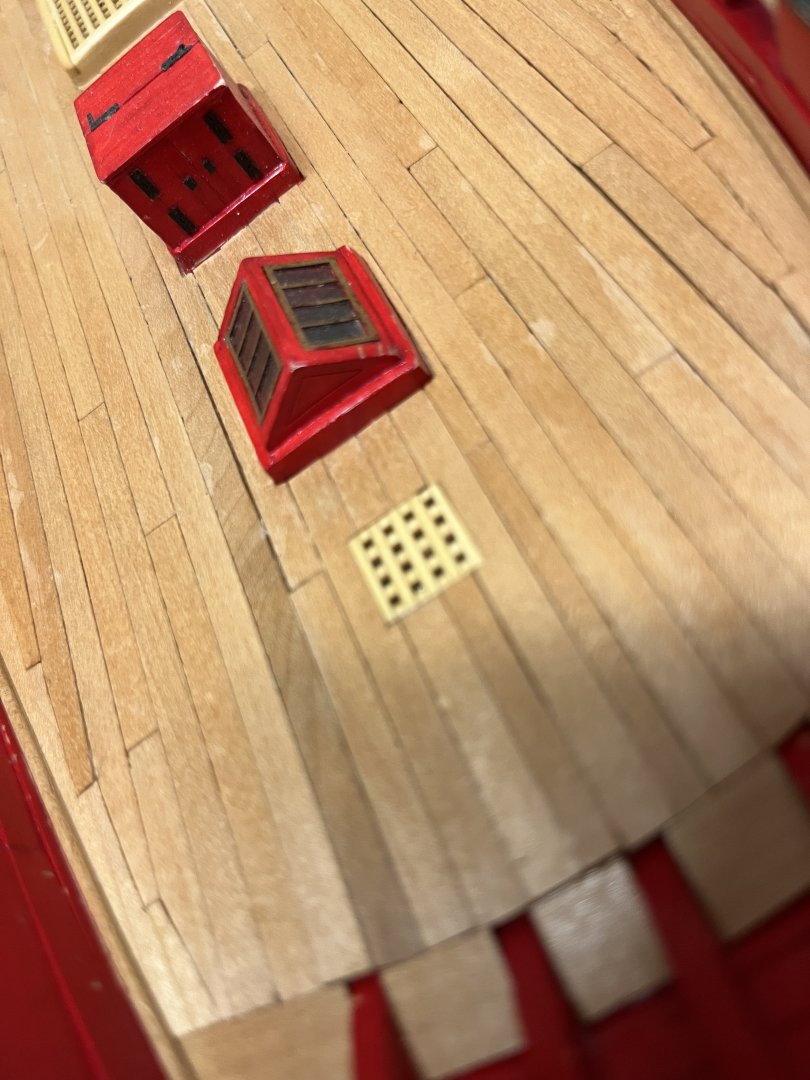
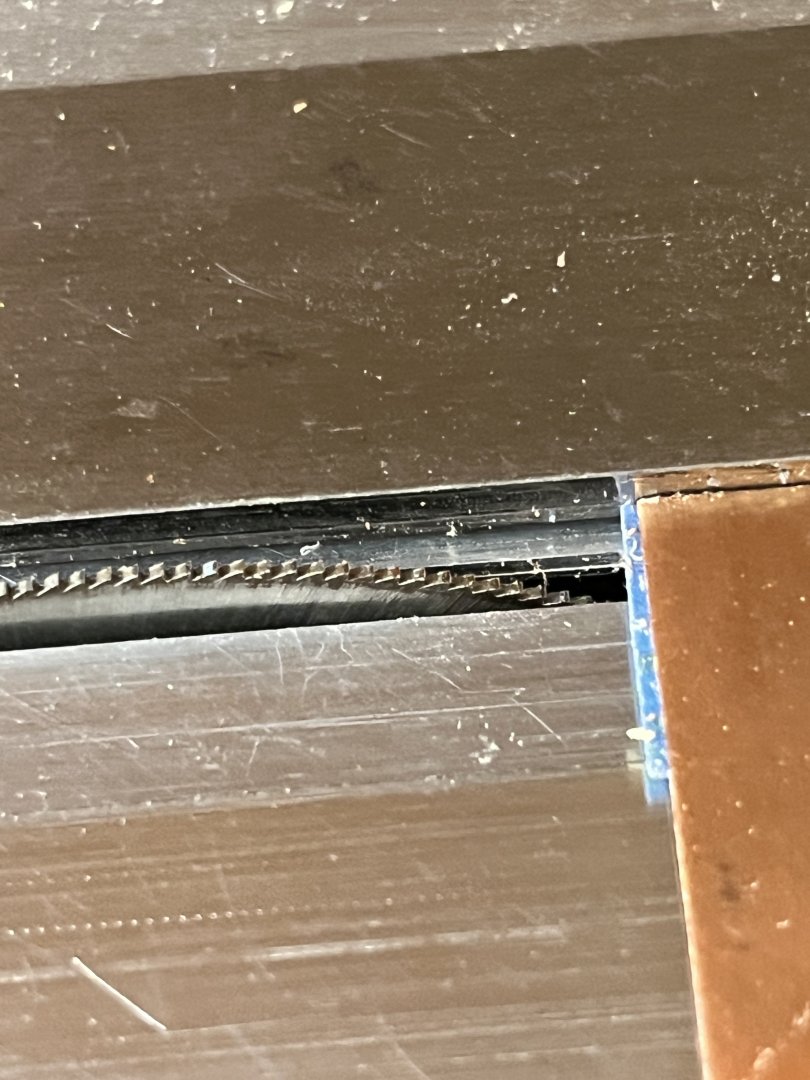
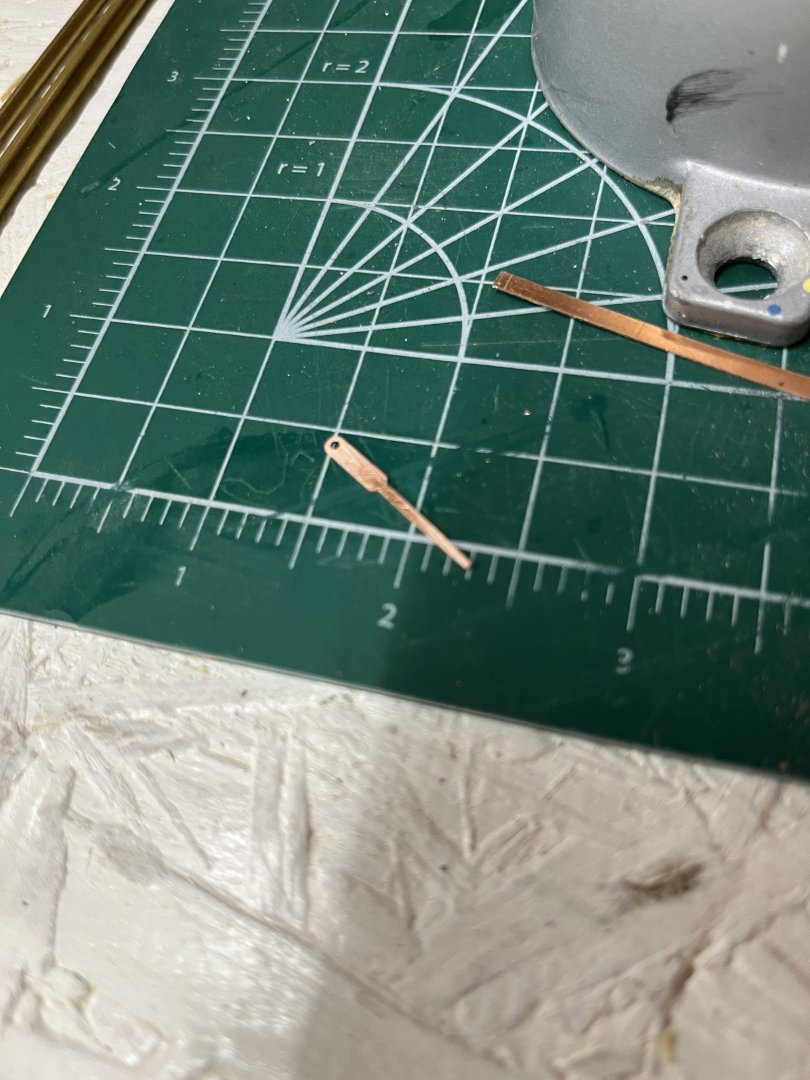
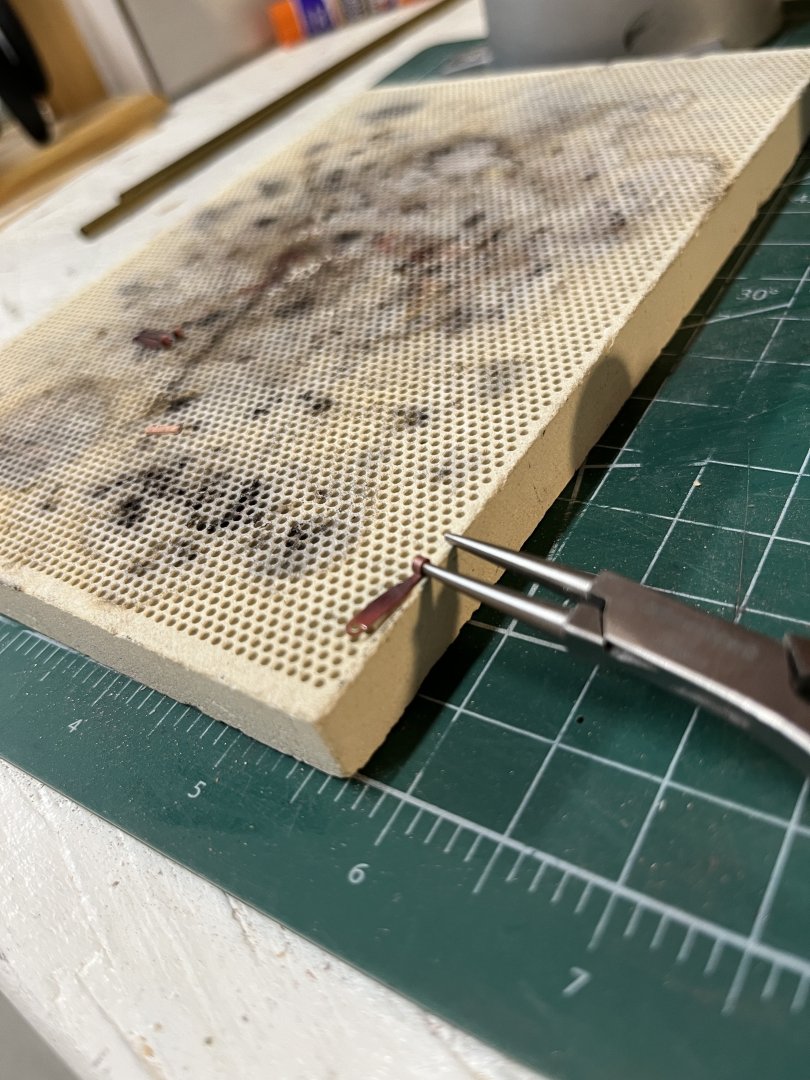
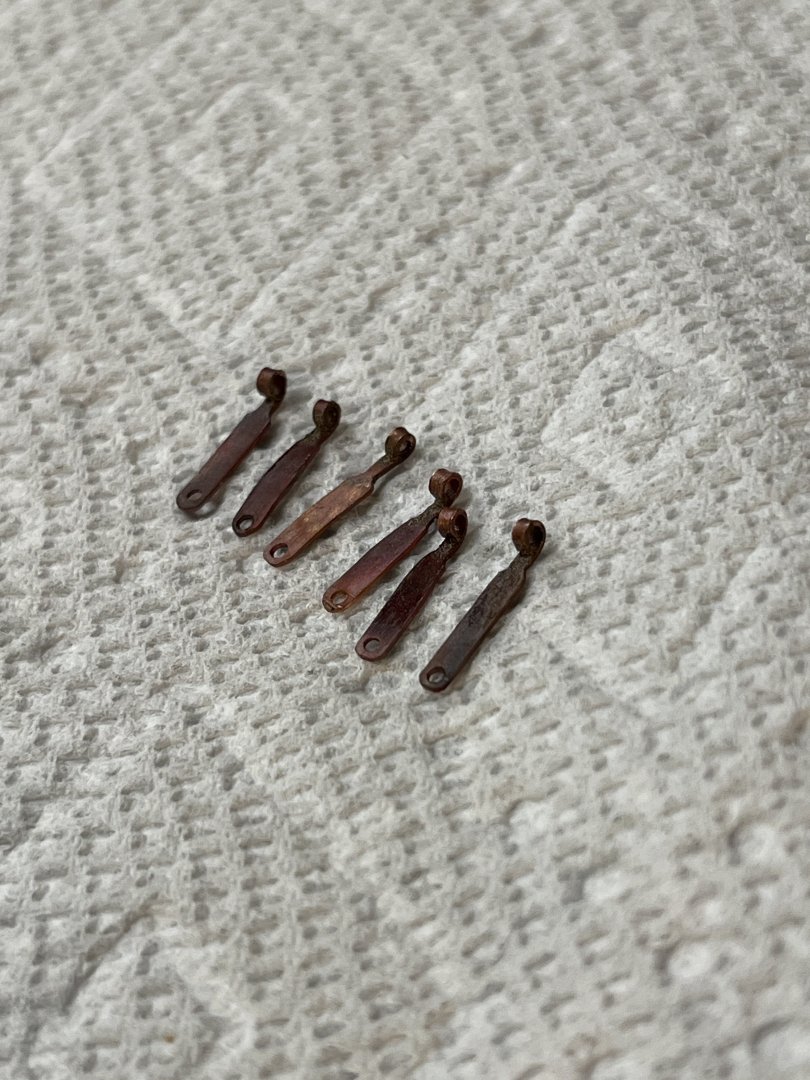
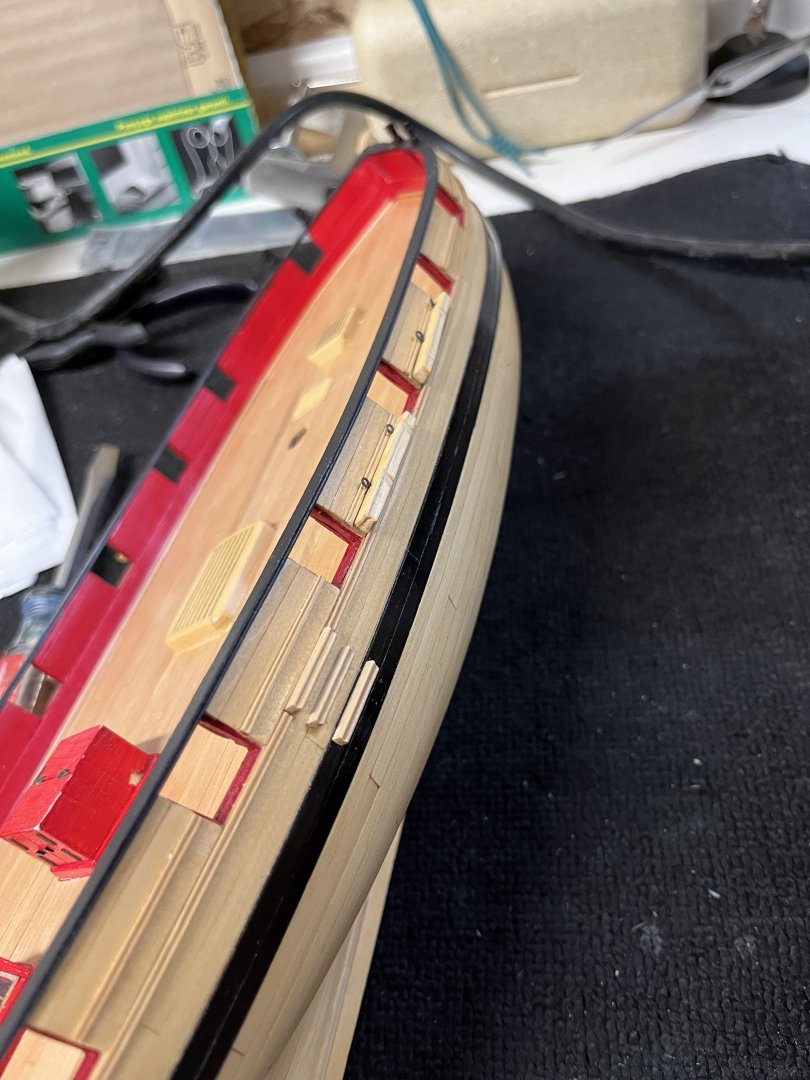
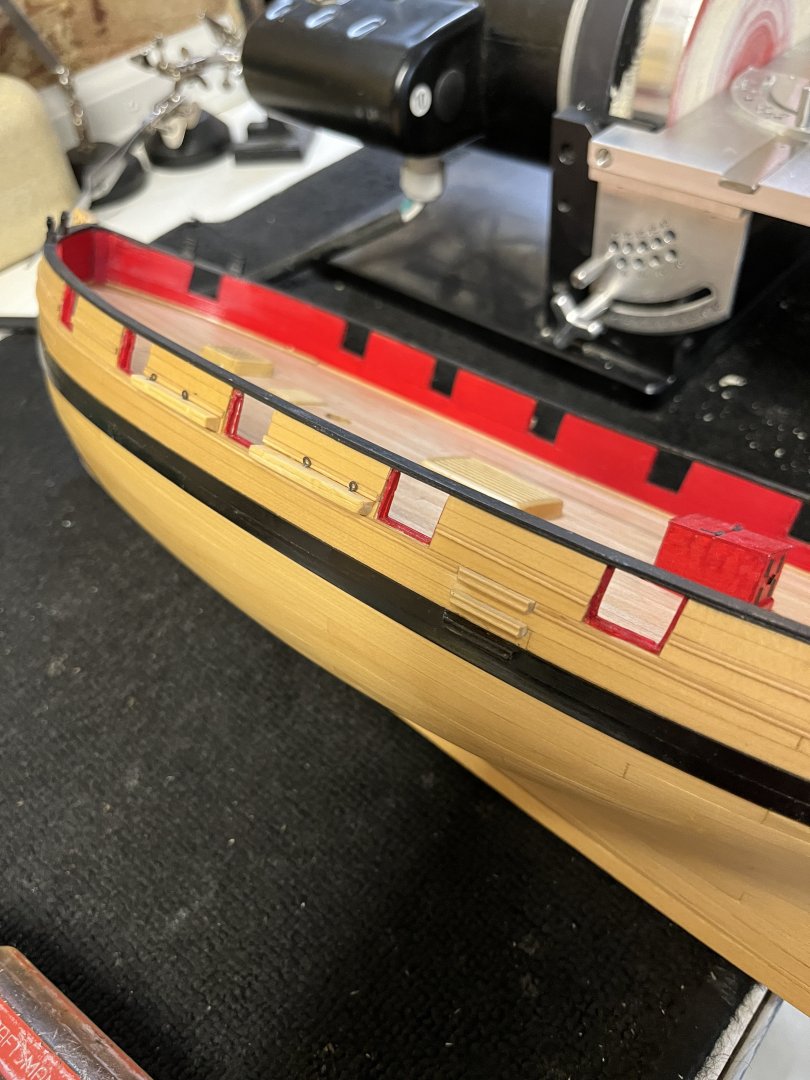
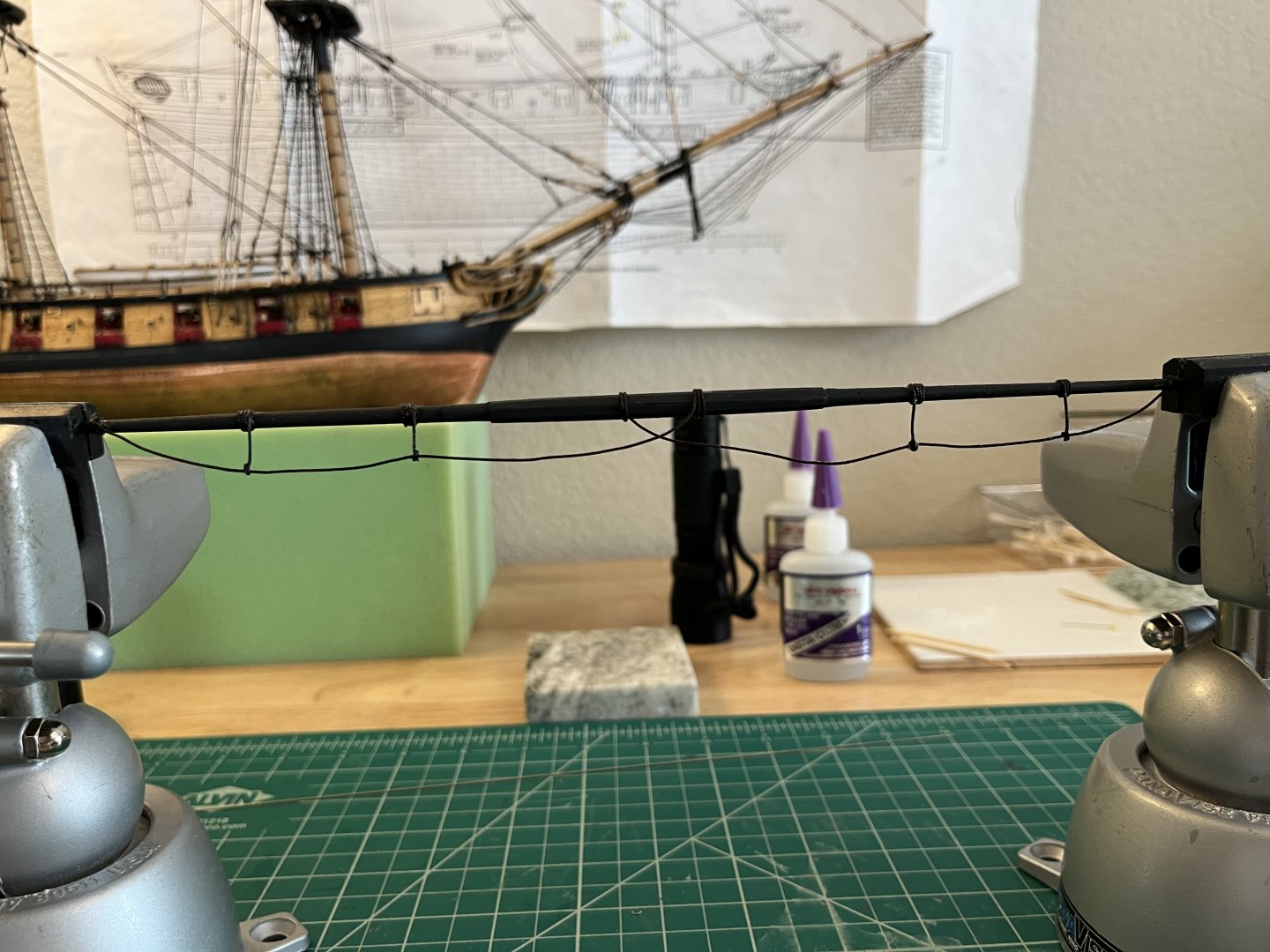
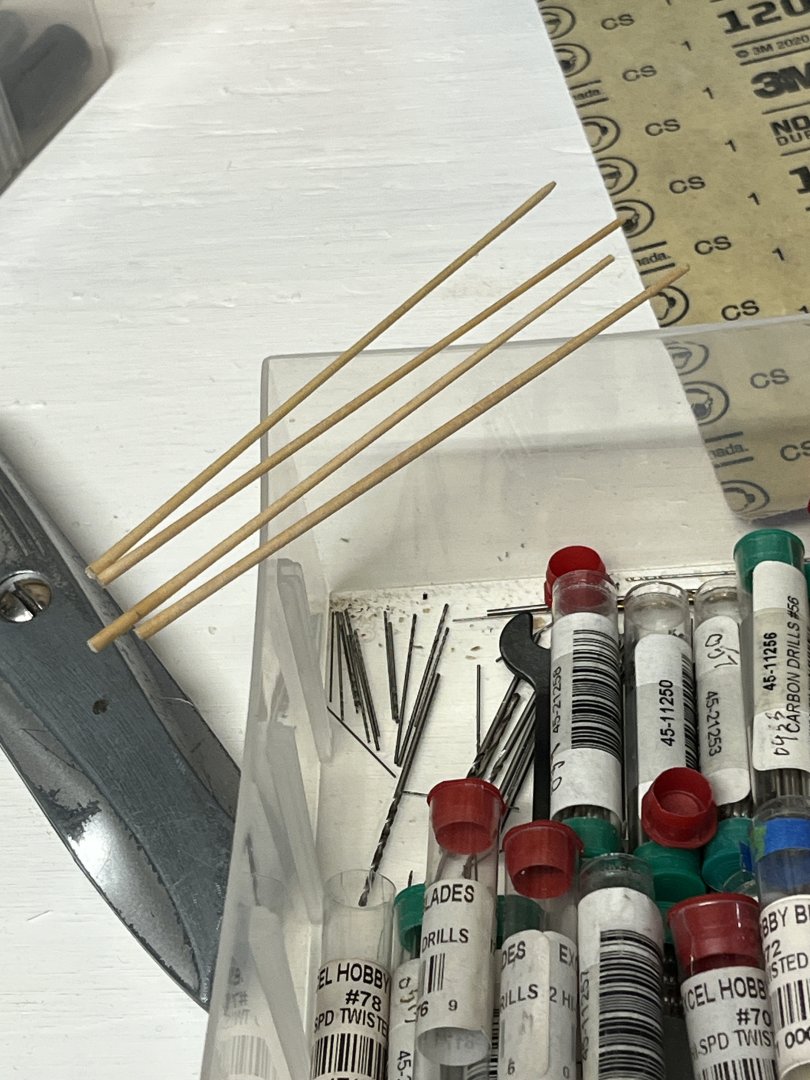
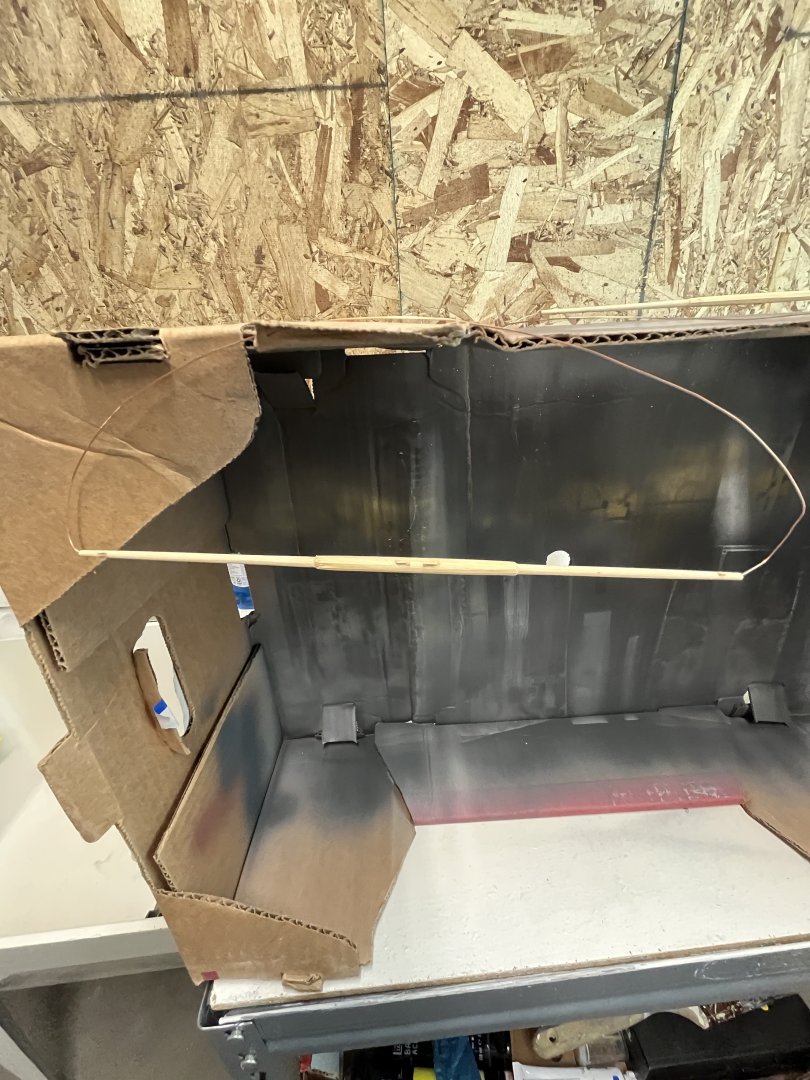
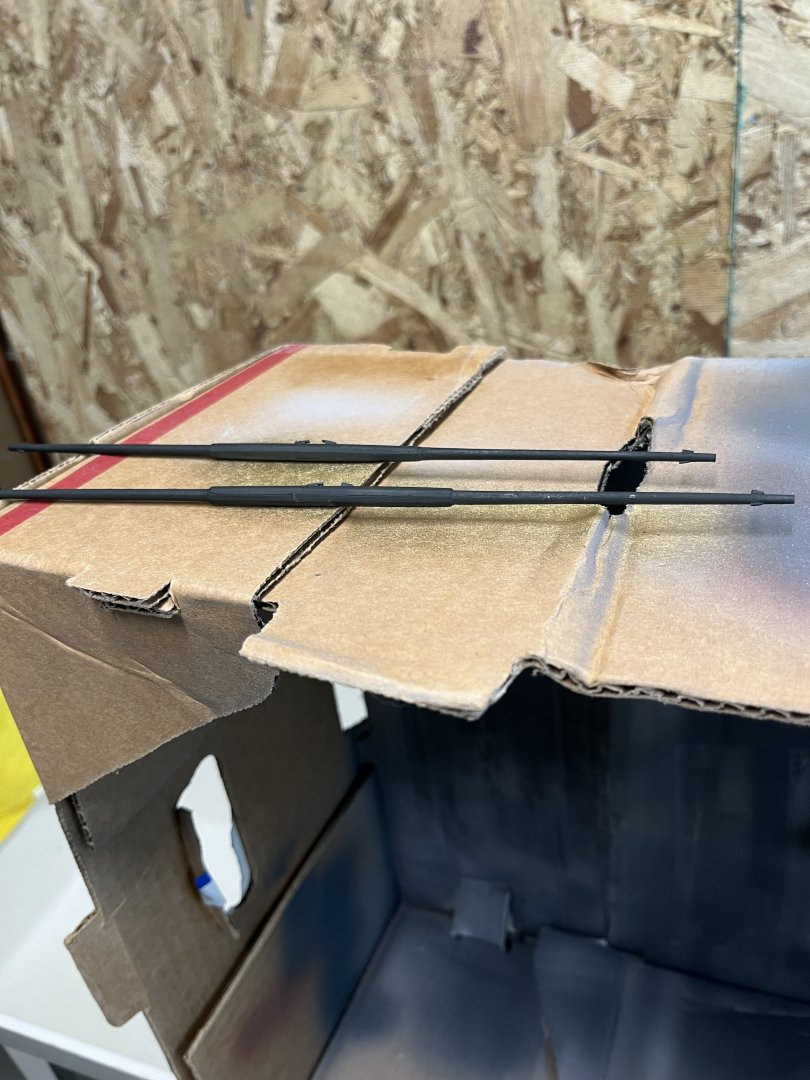
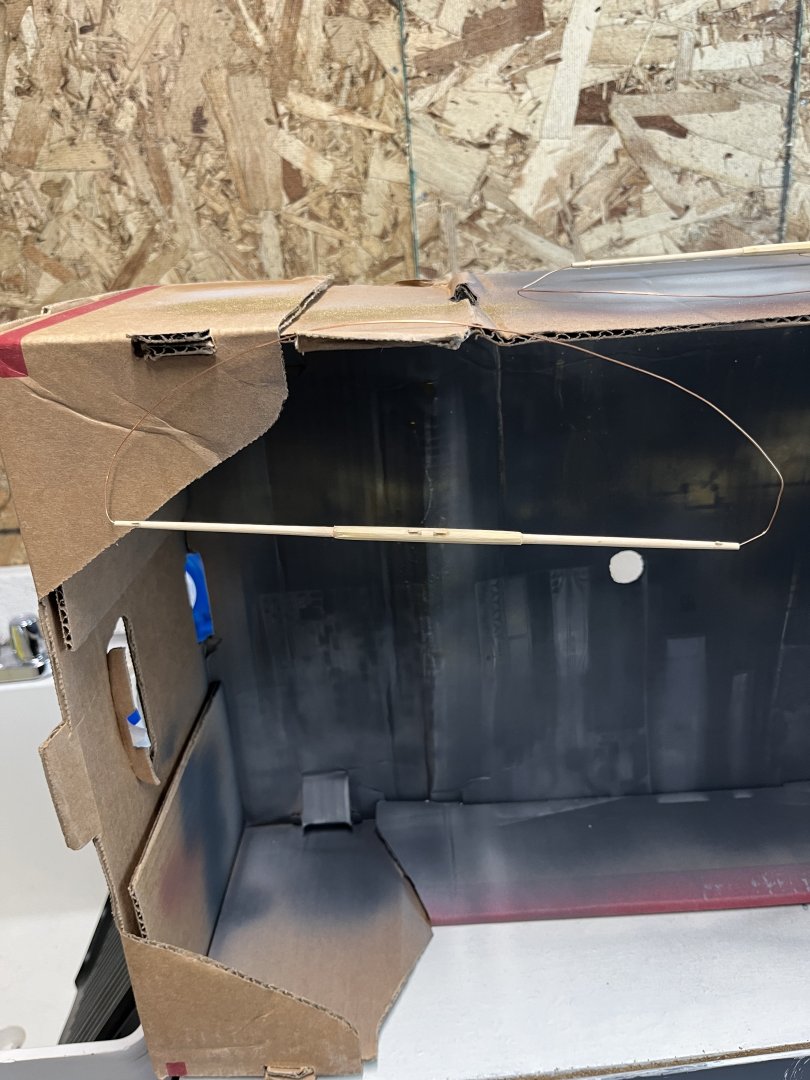
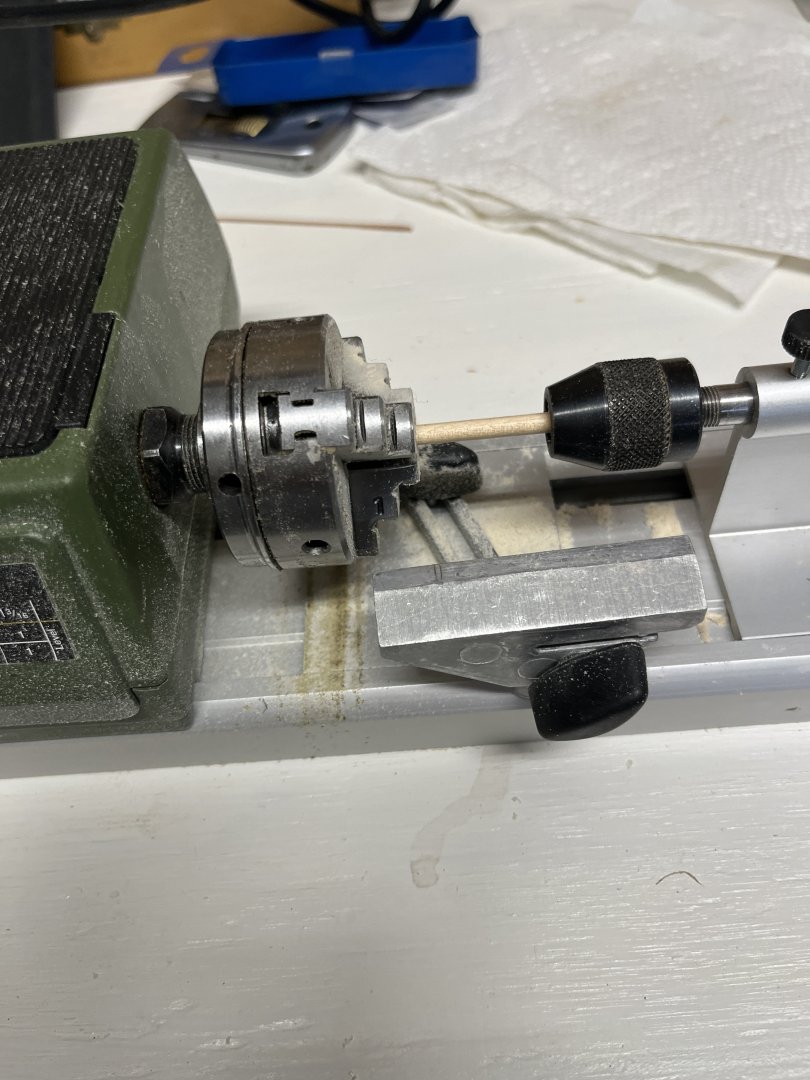
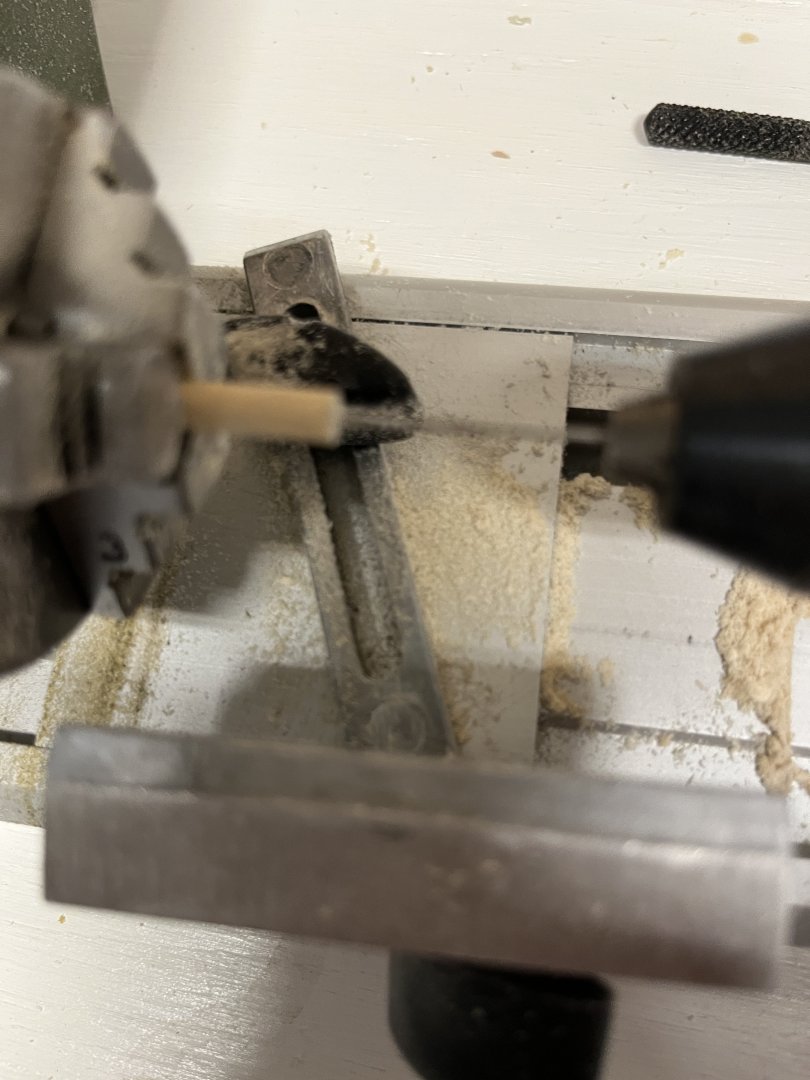
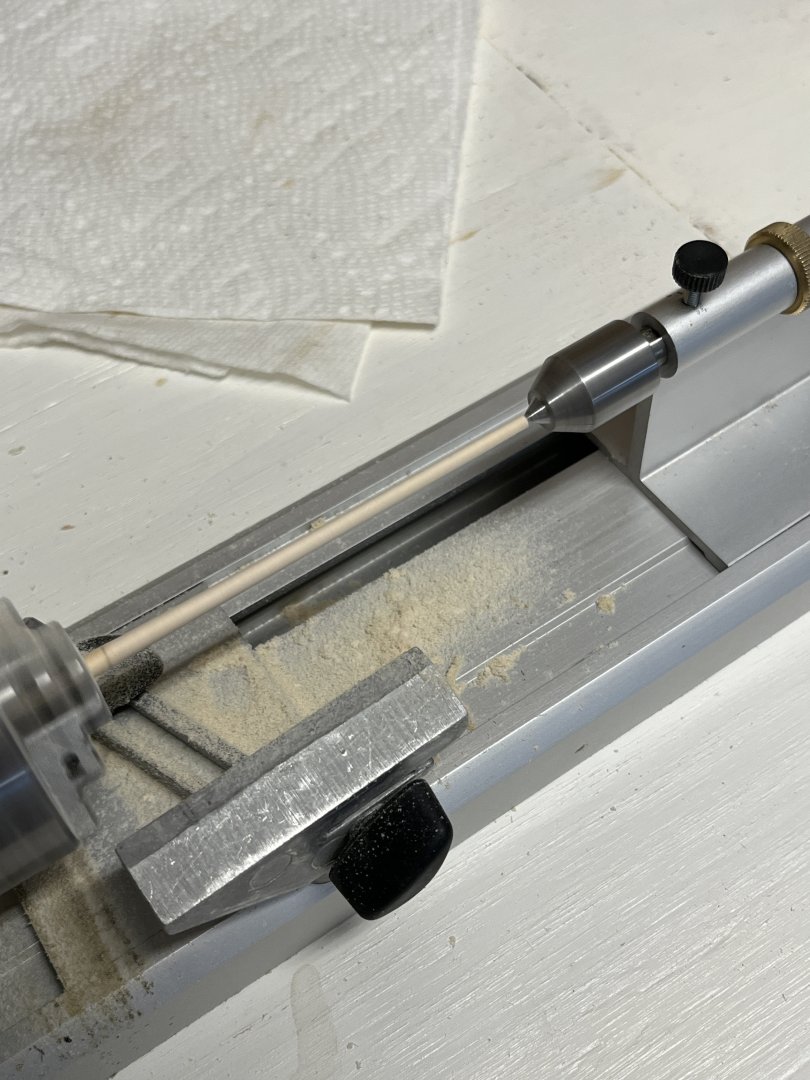
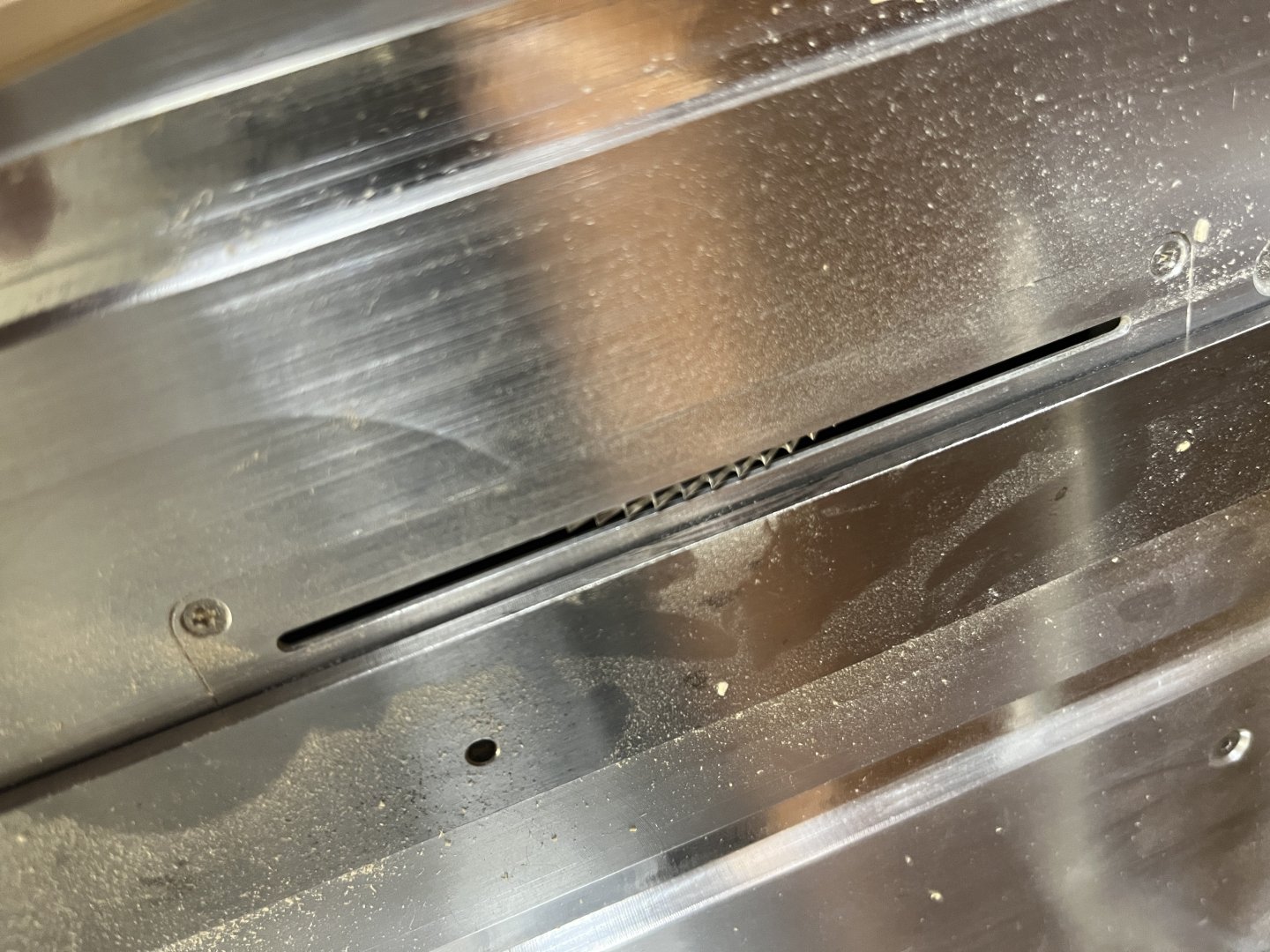
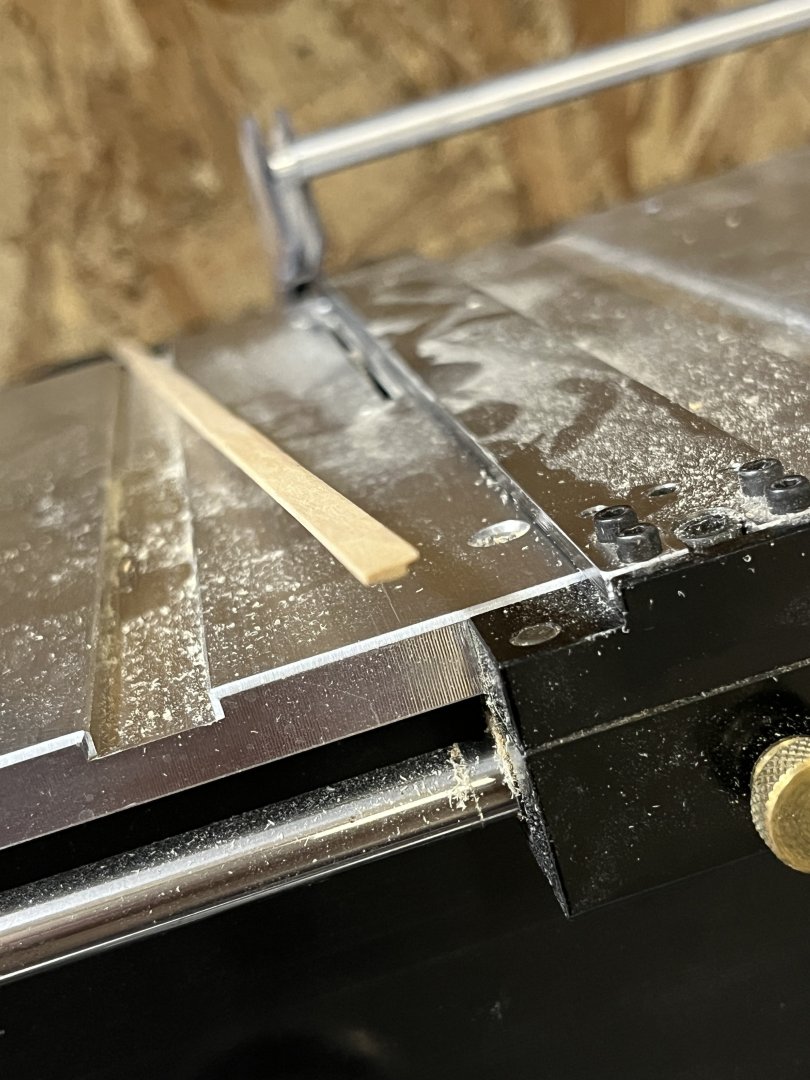
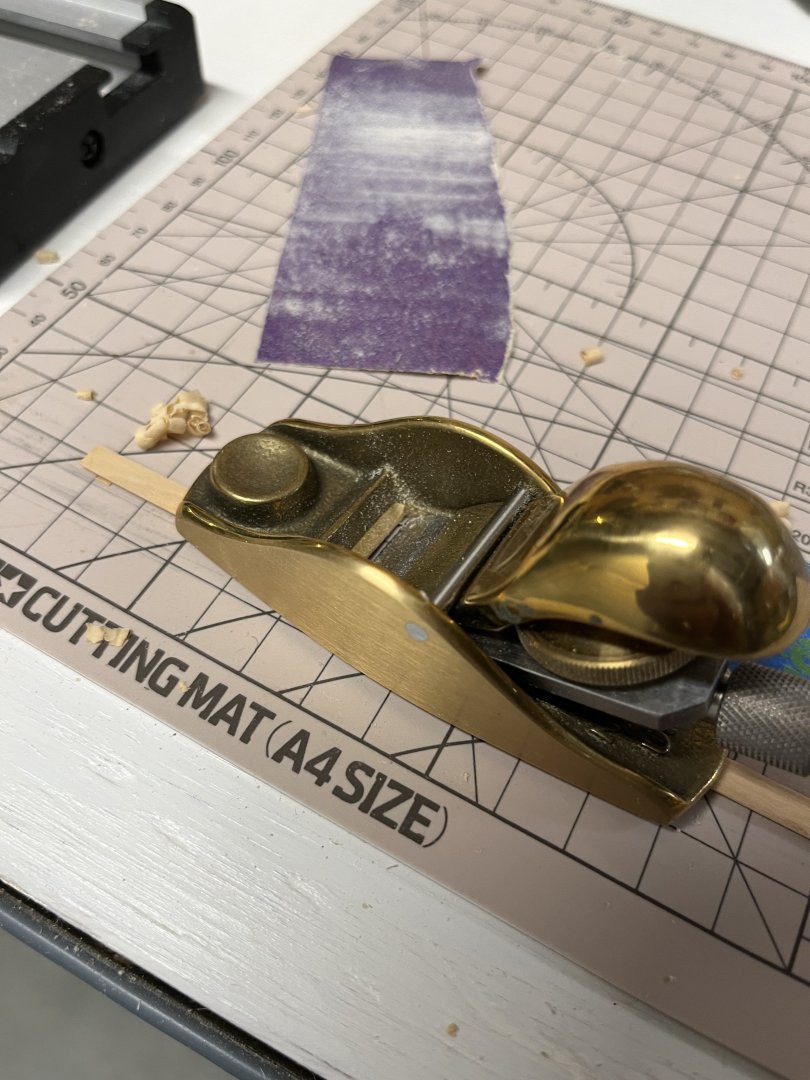
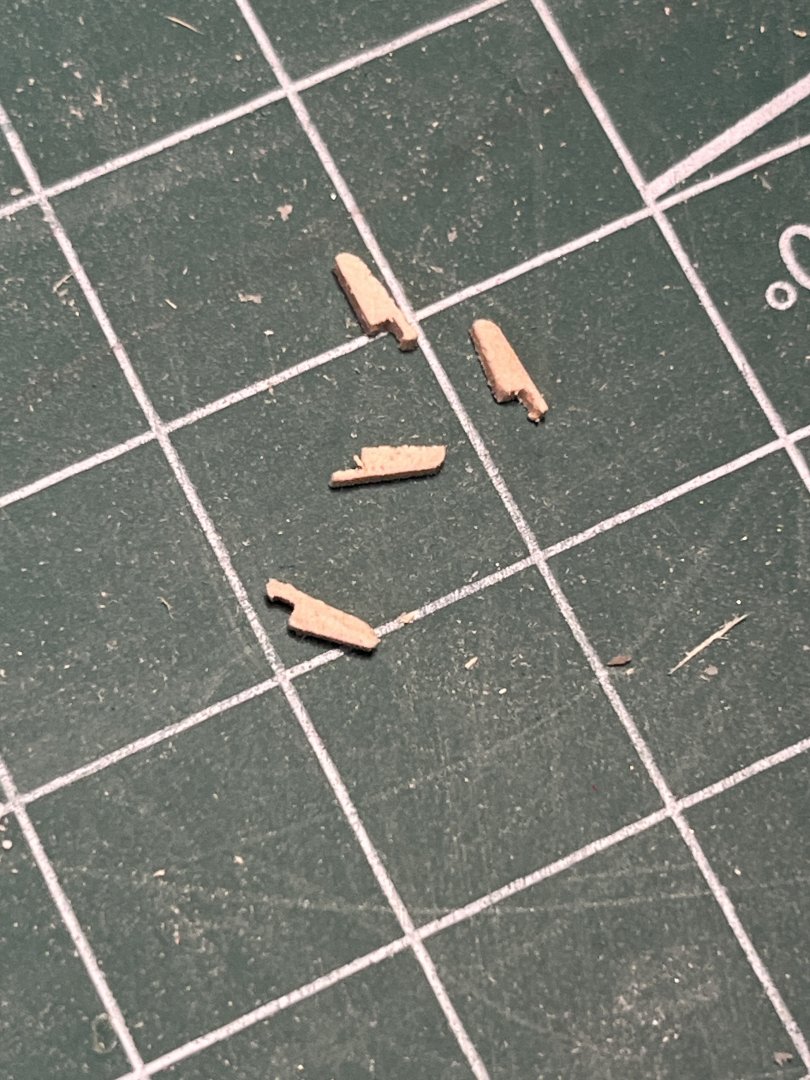
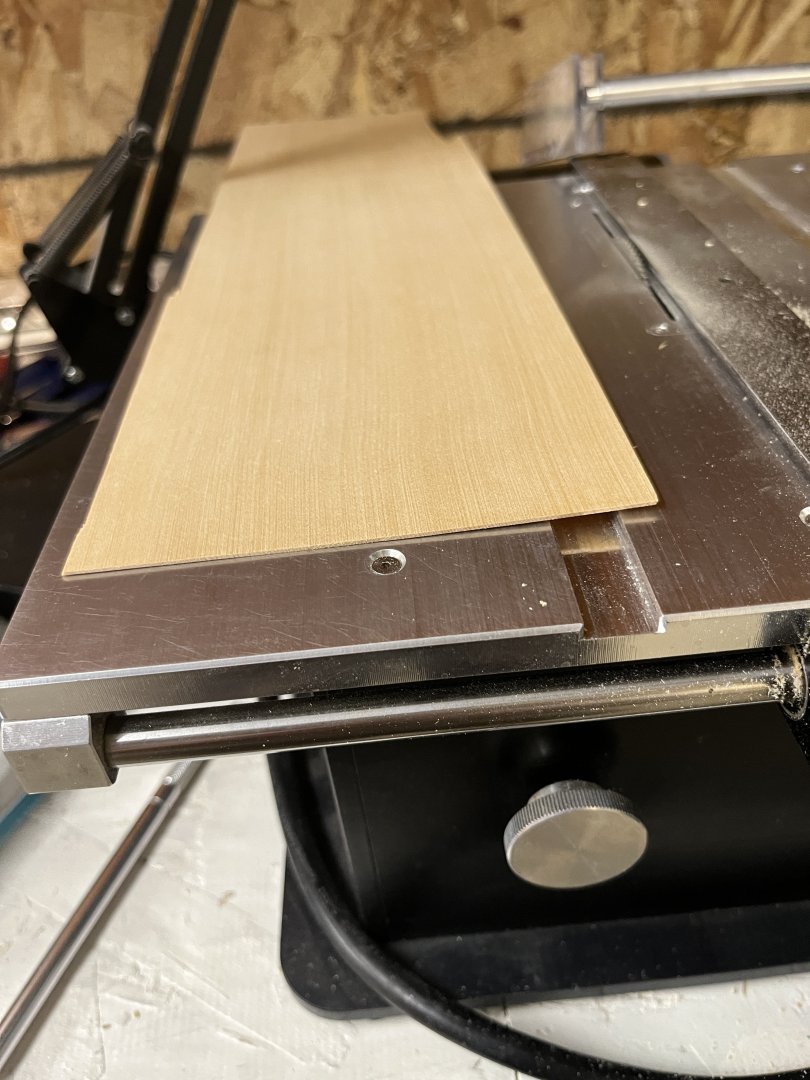
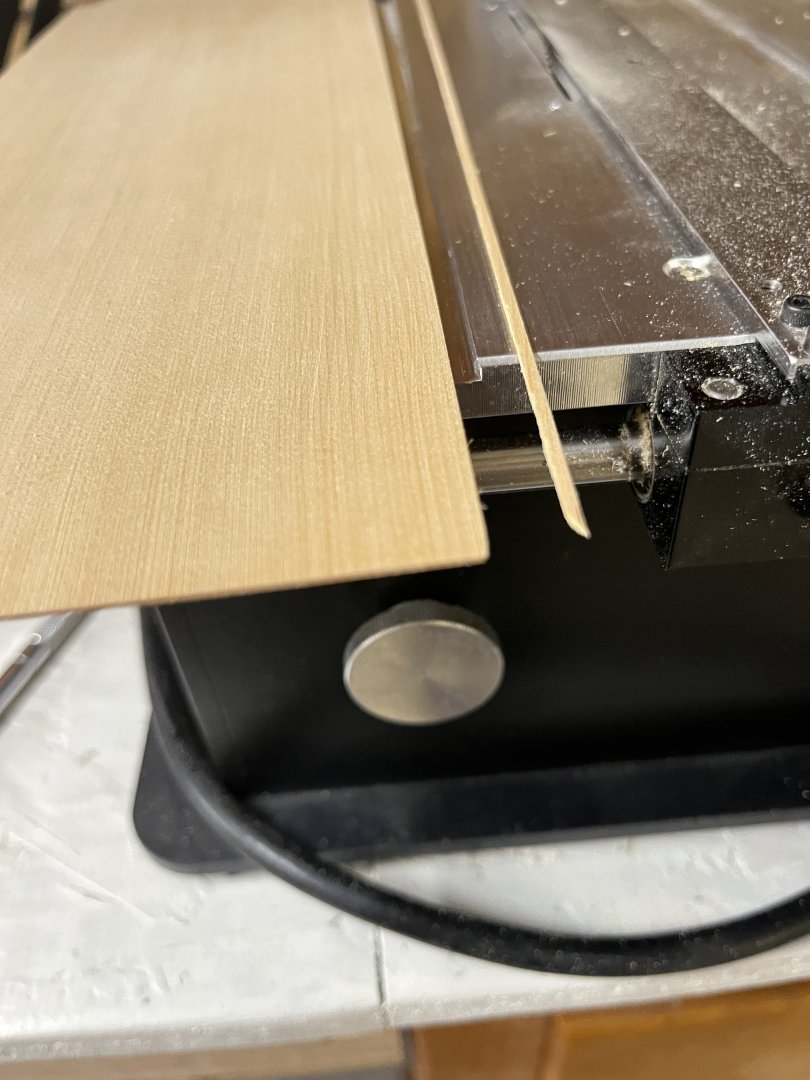
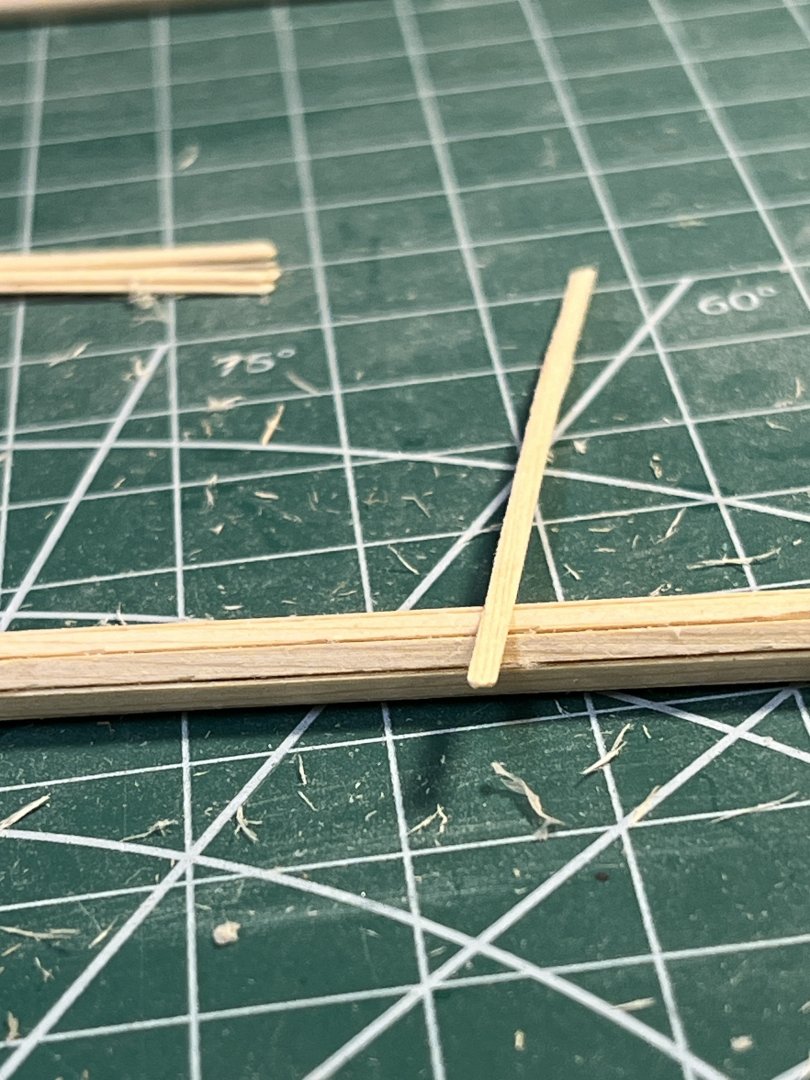
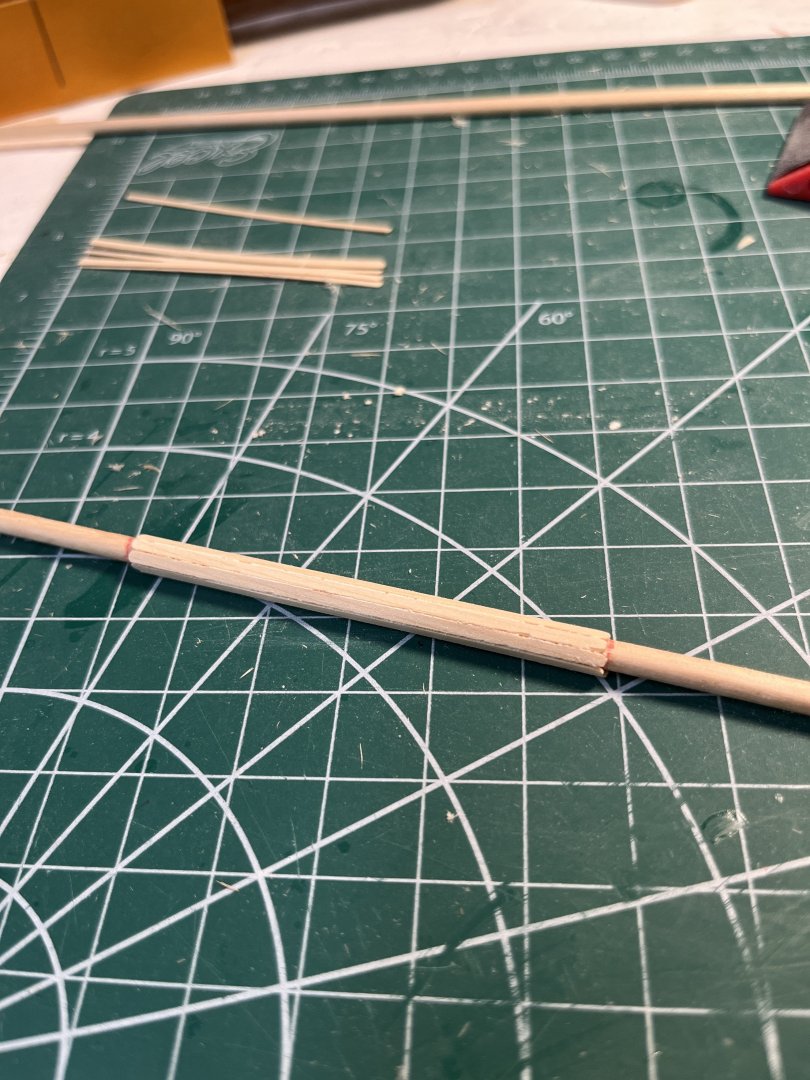
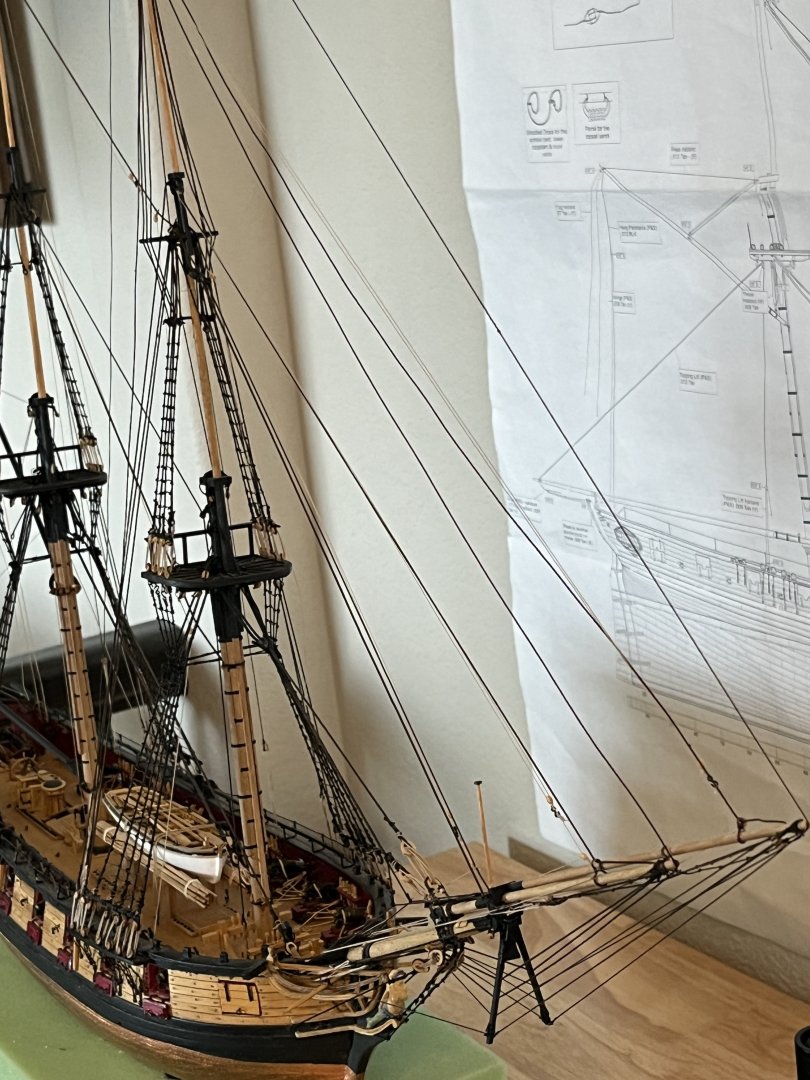
Martindale blades for Byrnes saw...
in Modeling tools and Workshop Equipment
Posted
Great information about how and where you got your bladed. With the two names listed I was unable to find how to contact them, could you explain how you were able to contact them?
How many blades did you have to order?
Thanks